The definition of “pioneering” is to “develop, or be the first to use or apply a new method, area of knowledge, or activity.” An even more apt definition is provided by Merriam-Webster: to pioneer is “to open or prepare others to follow.” Most of jazz harp pioneers listed below were classically trained. They, and many others not found here, turned off the beaten path to blaze a new trail into popular, jazz, and commercial music. By doing so, they led the way for many other harpists to follow.
FEATURED PIONEERS
(1925-2005)
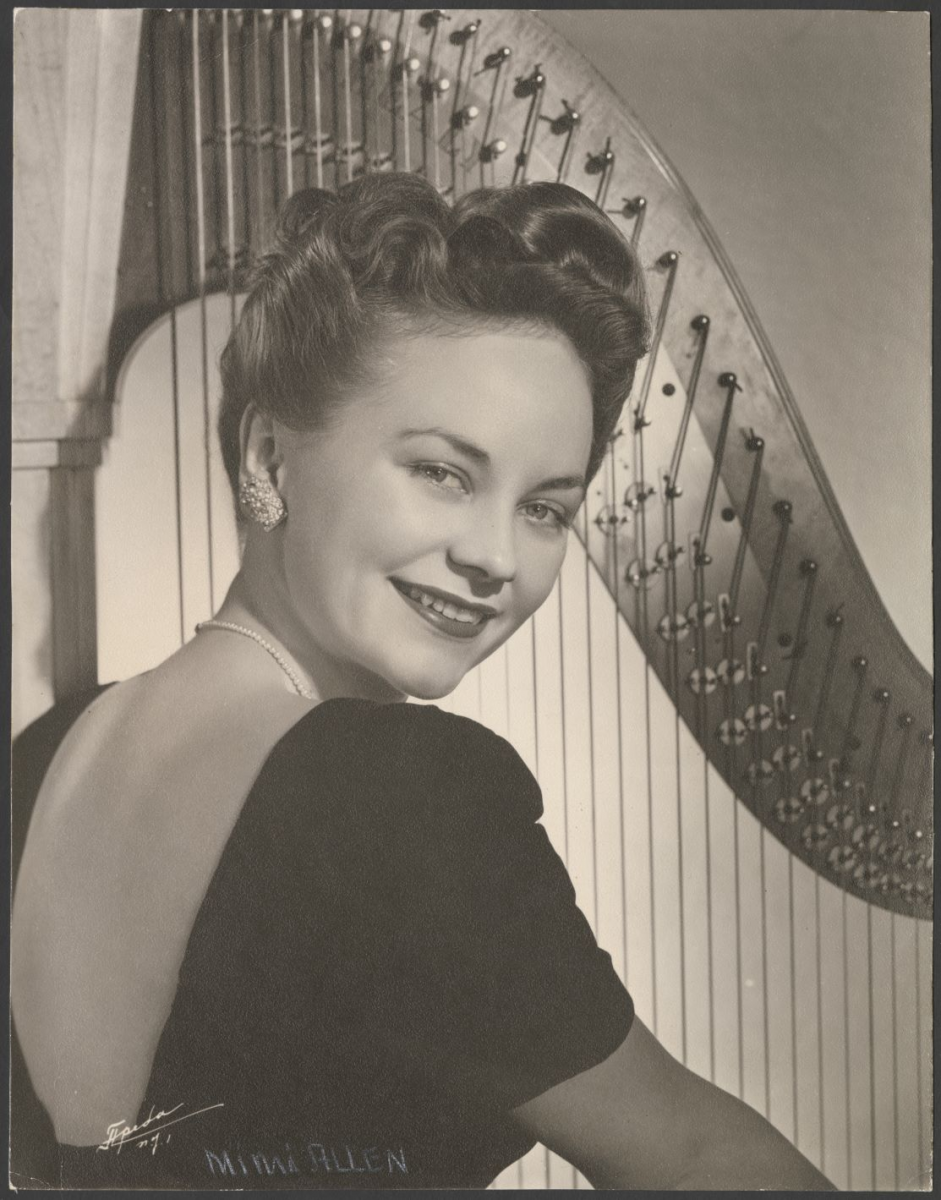 |
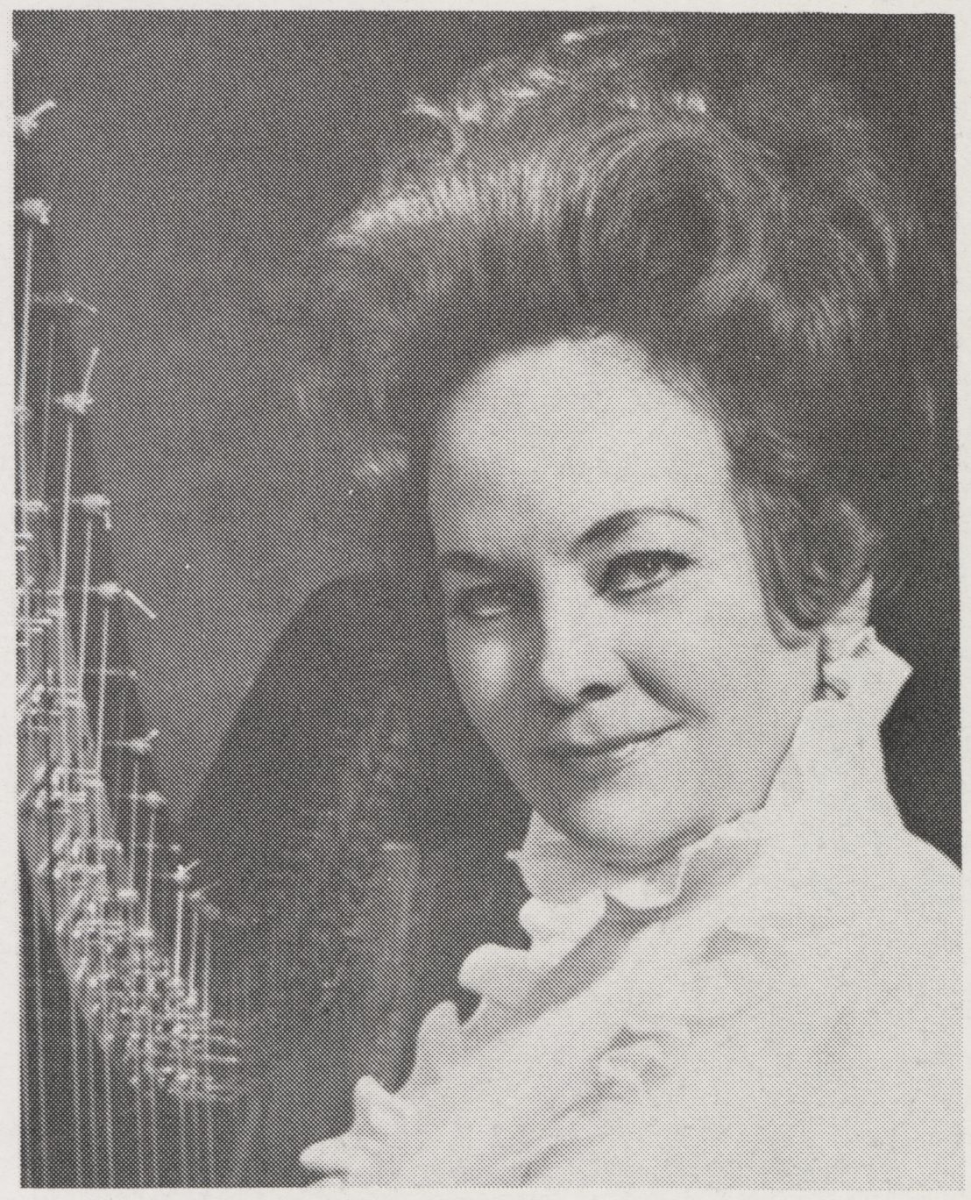 |
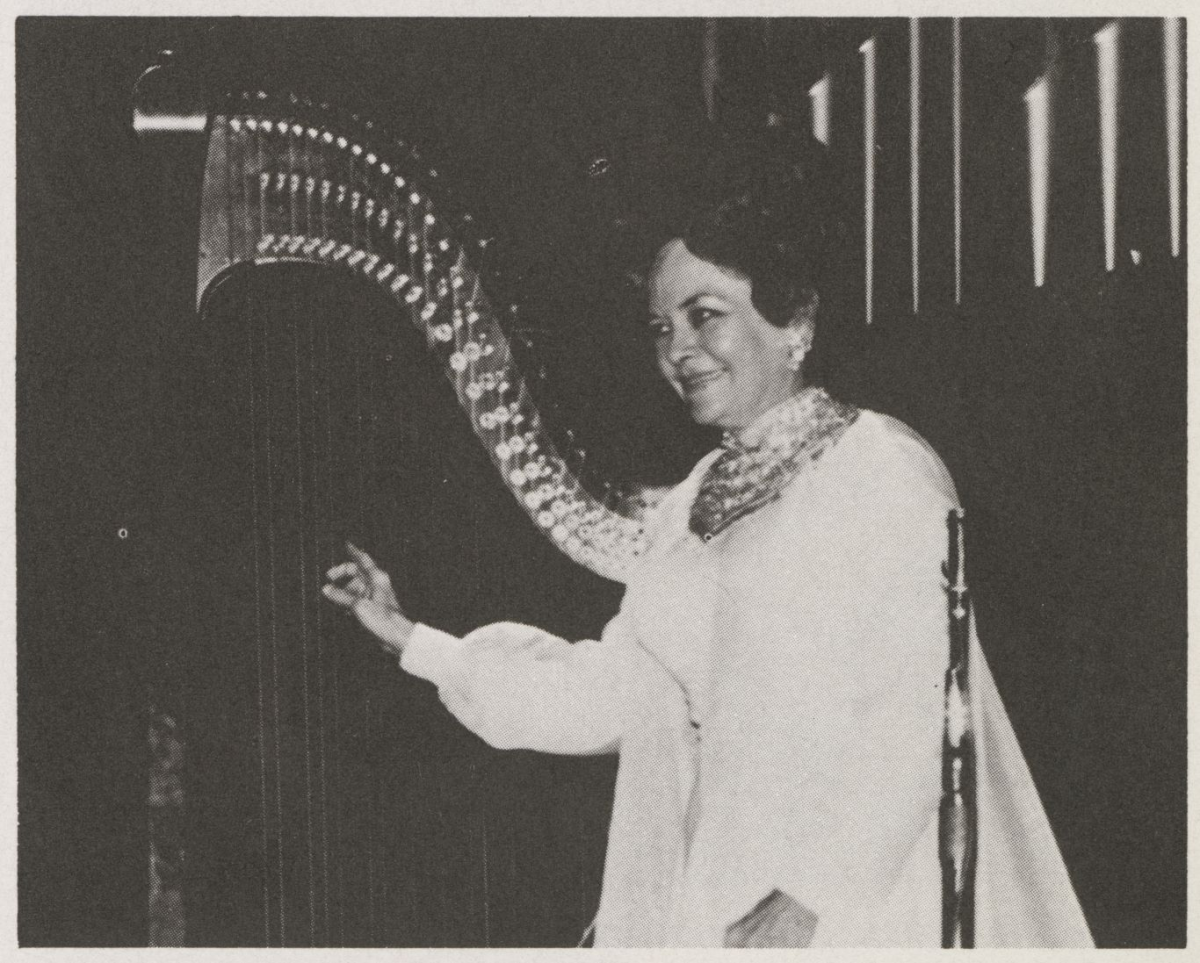 |
Mimi Allen began studying the piano as a toddler, and added the harp at age 14. After graduating at age 18 with a Bachelor of Music degree from Stephens College, she moved to New York to study piano with Isidor Phillip and harp with Carlos Salzedo. Salzedo introduced her to jazz, asking her to improvise in various styles at both the piano and harp. She was greatly influenced by the jazz recordings of Casper Reardon, an earlier student of Salzedo's.
Returning to Missouri, Mimi further explored jazz harp, recording two albums for Decca Records: Strings Of My Heart, and There Goes My Harp. She released her third album, Mimi Allen Play Gershwin, independently. Eventually, she returned to studio and TV work in St. Louis and Memphis, and was featured as a soloist on both classical and jazz harp on the series of CBS specials, Montages. After hearing her play her arrangements of music by George Gershwin on Montages, Marcel Grandjany invited her to perform them at the first American Harp Society Conference to be held in New York.
LINKS:
AHJ, Vol. 9 No. 3, Summer 1984- MimI Allen
On The Lighter Side: The Classic Jazz of Mimi Allen by Carrol McLaughlin
AHJ, Vol. 20 No. 1, Summer 2005 - Mimi Allen Obit
In Memoriam: Mary Emma Allen Smitten July 30, 1925-March 1, 2005 by Elizabeth Huntley
(1930-1986)
 |
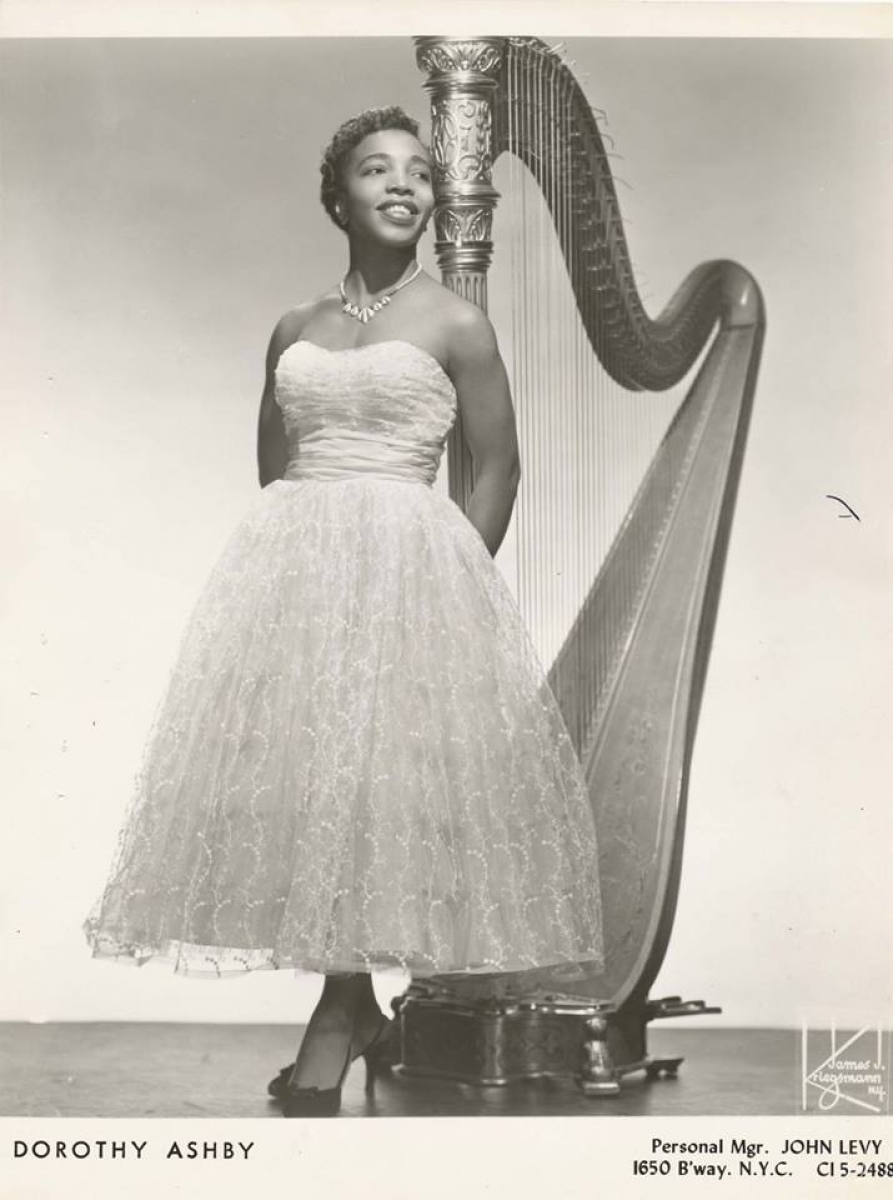 |
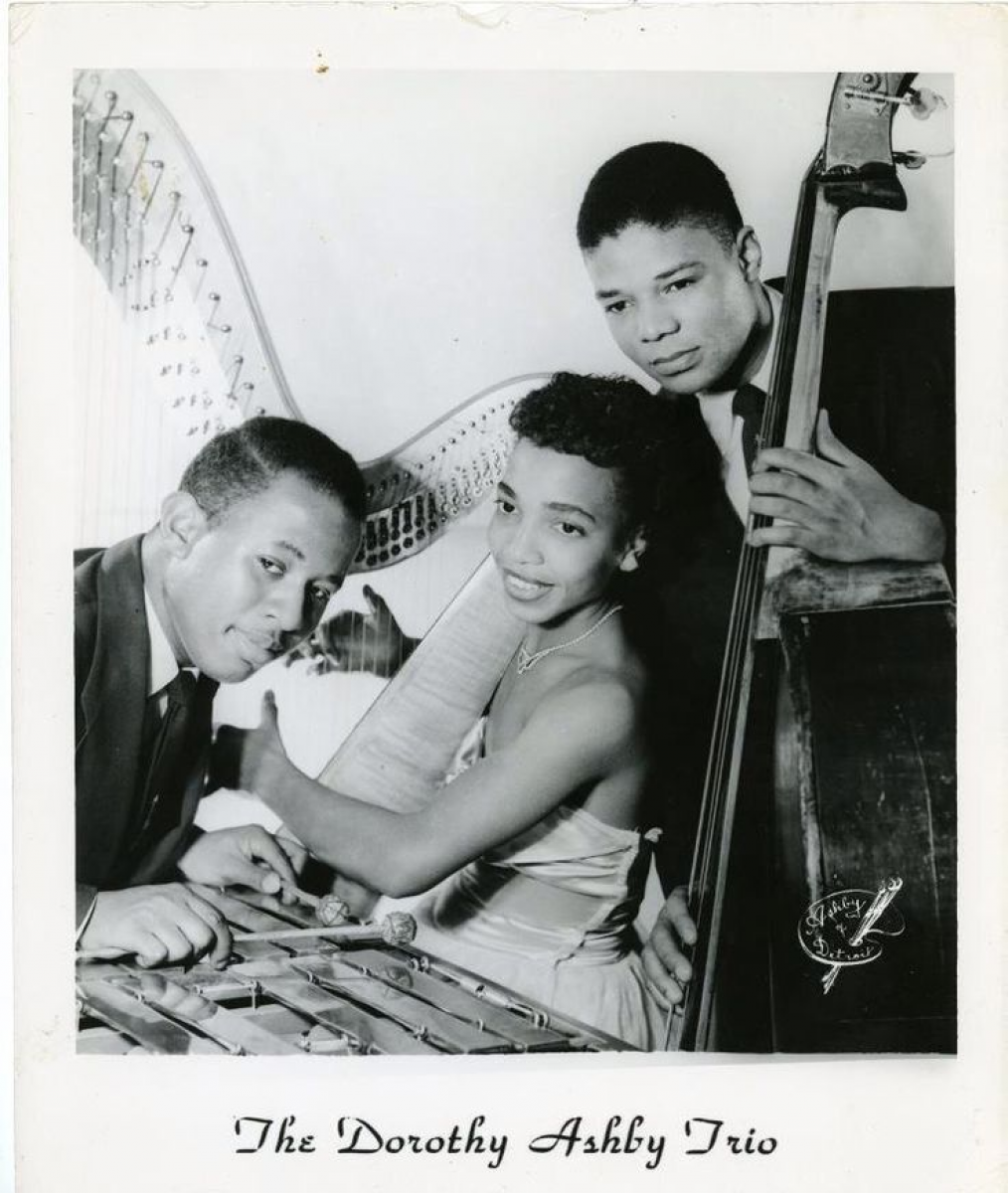 |
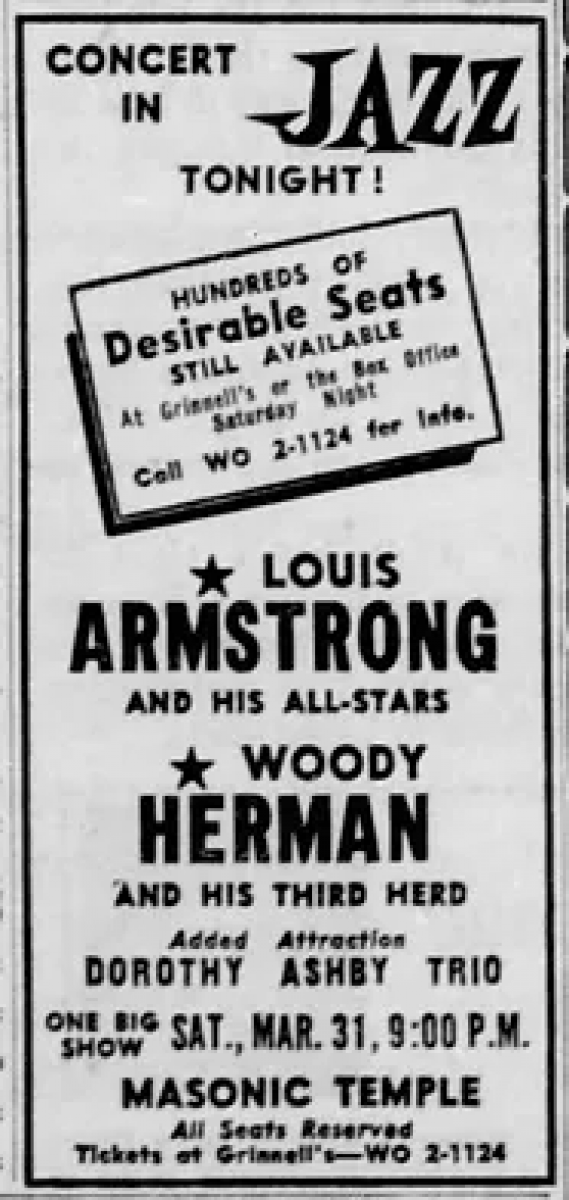 |
Dorothy Ashby was an American jazz harpist, singer and composer, who has been hailed as one of “the most unjustly under-loved jazz greats of the 1950s.” She established the instrument as a prominent element in jazz compositions. proving the harp could play bebop as adeptly as the instruments commonly associated with jazz. As an African-American woman in a male-dominated genre, the prolific artist overcame considerable obstacles to release 11 solo albums, including her most important, the 1968 release, Afro-Harping.
LINKS:
AHJ, Vol. 8, no. 4, Winter 1982 - Dorothy Ashby
(REPRINTED: 2020 summer-On The Lighter Side Mills Ashby Escosa Fell McLaughlin)
On The Lighter Side: Jazz Harpist Dorothy Ashby by Carrol McLaughlin
AHJ, Vol. 10 No. 4, Winter 1986- Ashby Obit
In Memoriam Dorothy Ashby 6 August 1930-13 April 1986 by Carol Robbins
2021 summer Dorothy Ashby
Dorothy Ashby’s Enduring Legacy by Jennifer Betzer
Unsung Women of Jazz – Dorothy Ashby
Dorothy Ashby's Wikipedia Page
Dorothy Ashby ~ The Jazz Harpist (LP, 1957)
Dorothy Ashby - The Fantastic Jazz harp of Dorothy Ashby (1965) (US, Harp Jazz)
Dorothy Ashby - Afro Harping (1968)
(1927-2007)
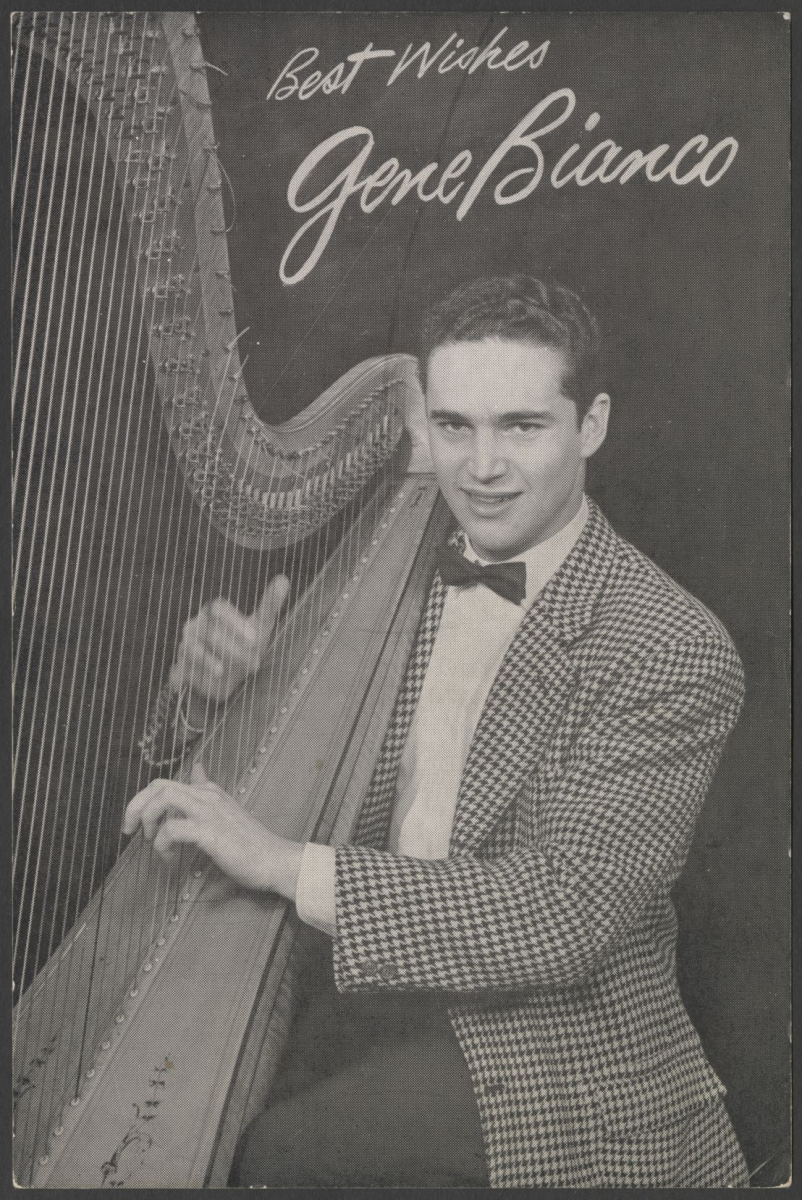 |
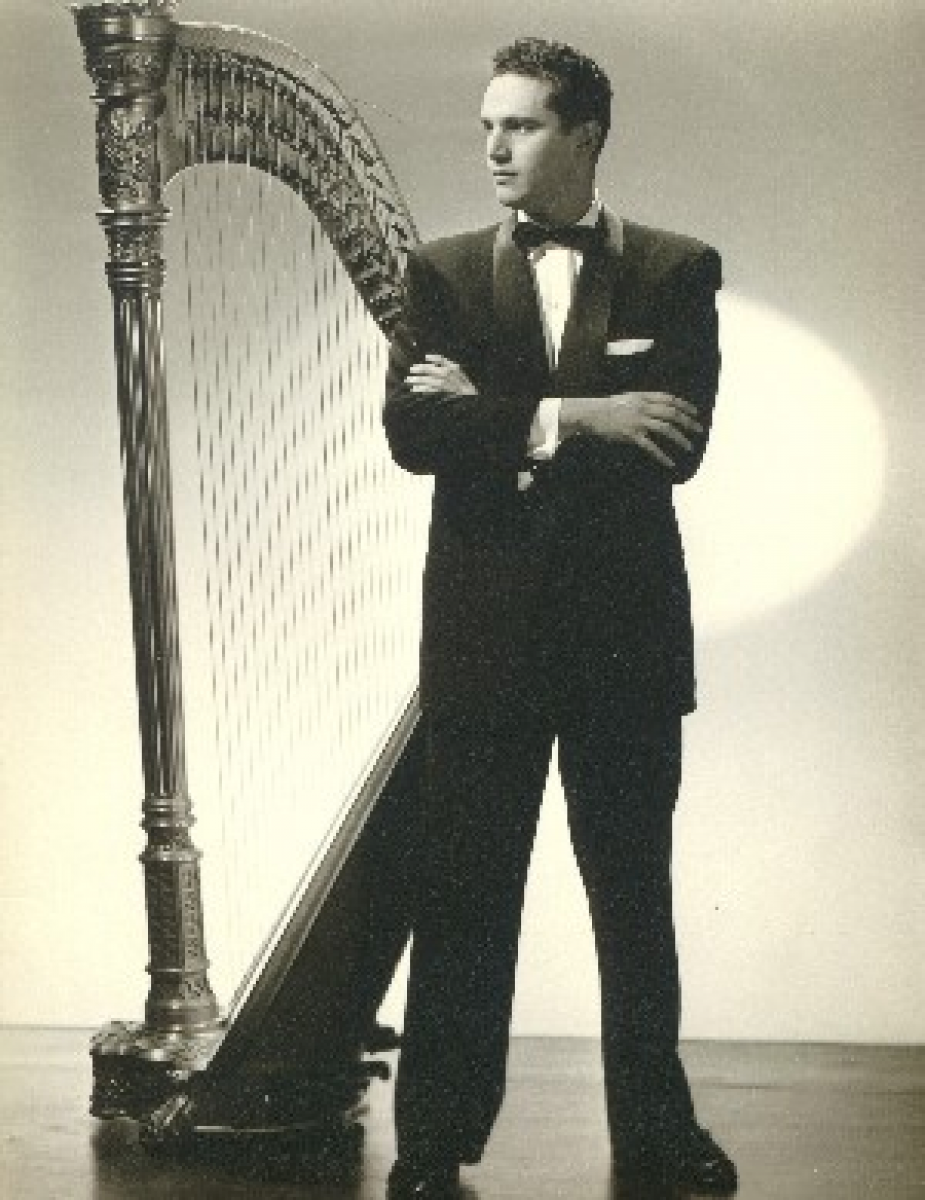 |
Born Eugene Capobianco near Hartford, Connecticut in 1927, Gene Bianco began taking lessons from his grandfather Filippo Capobianco, at age 12. Soon Gene’s father was driving him into New York weekly to study with Marcel Grandjany. He studied with him for 10 years, eventually graduating from Juilliard. Soon after graduation he was awarded the position of first harp with the Radio City Orchestra, where principal conductor Raymond Paige suggested he shorten his name to Gene Bianco, a change he later regretted.
Bianco appeared as a solo act in a variety of New York nightclubs, later teaming up with guitarist Mundell Lowe and percussionist Joe Venuto to form a jazz trio. They released an album, and were soon signed by RCA to a three-album contract, under which the albums Stringin' the Standards and Harp, Skip and Jump! were released. For a new record club partnership with Readers Digest, RCA bought out the existing contract and entered into a new contract with Gene Bianco to produce easy-listening albums, with orchestra and chorus.
Gene became one of busiest studio harpists in New York City during the 60’s and 70’s. He was the first call for any jazz recording, playing on dozens of jazz recordings with performers such as Paul Desmond, Gil Evans, and Herbie Mann; and jazz singers including Carmen McCrae and Marlena Shaw. He worked with acts as diverse as Mary J. Blige, D Train, Stevie Nicks, Natalie Cole, and even Ray Charles.
After 30 years as a studio player, Bianco went into the recording booth as a musical coordinator and contractor, screening and hiring musicians for recording sessions.
LINKS:
AHJ, Vol. 19 No. 1, Summer 2003 - Gene Bianco
(REPRINTED: 2020 summer-Gene Bianco)
Gene Bianco and the Soft Push by Sam Milligan
(PRINTED: 15. Harp News, Fall 1957-2: Gene Bianco ad Advertisement for “Stringin’ the Standards”)
Gene Bianco Featuring Mundell Lowe – Harp, Skip & Jump
Gene Bianco – Your All-Time Favorite Songs
Links to recordings of Gene Bianco in The Great 78 Project
Gene Bianco's Obituary, Local 802, AFM
Gene Bianco Biography and Discography on Space Age Pop
Gene Bianco's Biography and Discography on Discogs
(b. 1933)

Los Angeles native Stella Castellucci is an internationally known harpist, composer, teacher, lecturer, and author. One year after graduating from high school Stella became staff musician for the American Broadcasting Company in Hollywood, performing six radio broadcasts and two live television shows a week, playing cue music and accompanying guests artists such as Bing Crosby, Dinah Shore, Tony Martin and Judy Garland. In 1953, Stella began an eight year stint playing with famed singer Peggy Lee as part of the jazz sextets and quintets that backed Miss Lee on her recordings and tours of the United States. She began to do lots of studio playing, recording albums with Mel Tormé, Ella Fitzgerald, Louis Armstrong, and many more. Later, she began working regularly with Motown, performing on recordings by the Jackson 5, the Supremes, and many others.
Beginning in the mid-1970s, Stella began giving workshops in jazz harp at music schools and universities around the country, as well as at Lyon & Healy Harp Fests.
Stella has published many beautiful arrangements of popular music, and has recorded four volumes of Light and Shadows solo harp CDs. Her books, Rhythm for Harp, co-authored with the late Verlye Mill Brilhart, and An Approach to Jazz and Popular Music for the Harp, are invaluable to harpists and arrangers. Stella tells the story of her life in the book Diving Deep for Sea Shells, written with Edgar Amaya.
LINKS:
AHJ, Vol. 11 No. 2, Winter 1987-Stella Castellucci
On The Lighter Side: Stella Castellucci by Carrol McLaughlin
AHJ, Vol. 17 No. 3, Summer 2000 - Stella Castellucci
Stella Castellucci: A Life in Music by Phillip D. Atteberry
2011_summer - Castellucci-Kastner
Stella Castellucci looks back on Her Studies with Alfred Kastner and at Her Career by Stella Castellucci with Dominique Piana
AHS Interview Series: Stella Castellucci with Ellie Choate (2018)
Stella's Biography on Harp Spectrum
Stella's Goodreads Blog
Stella's article about arranging for the harp.
Stella Castellucci on Peggy Lee’s Sea Shells (Decca, 1958)
(1937-2007)
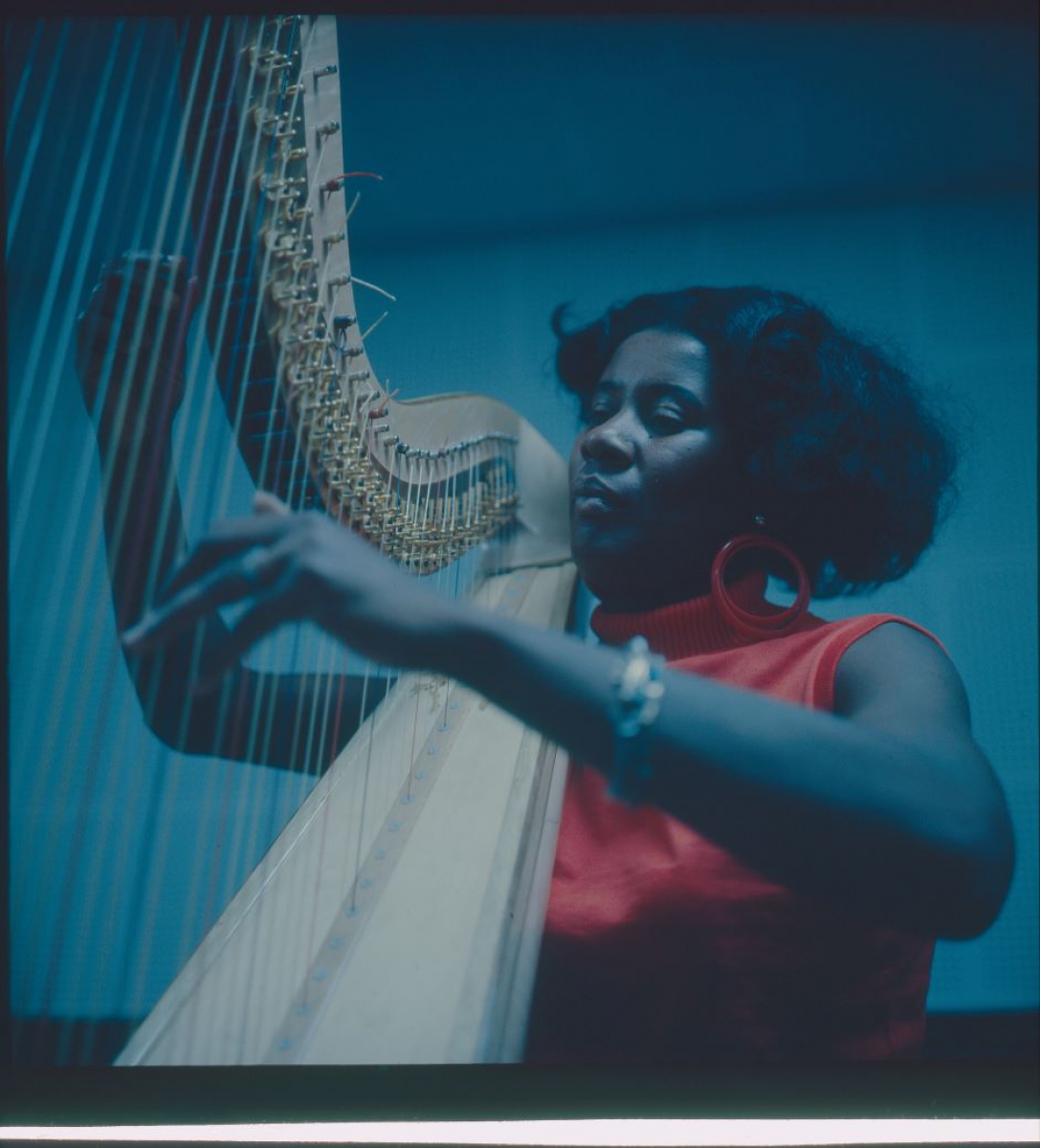 |
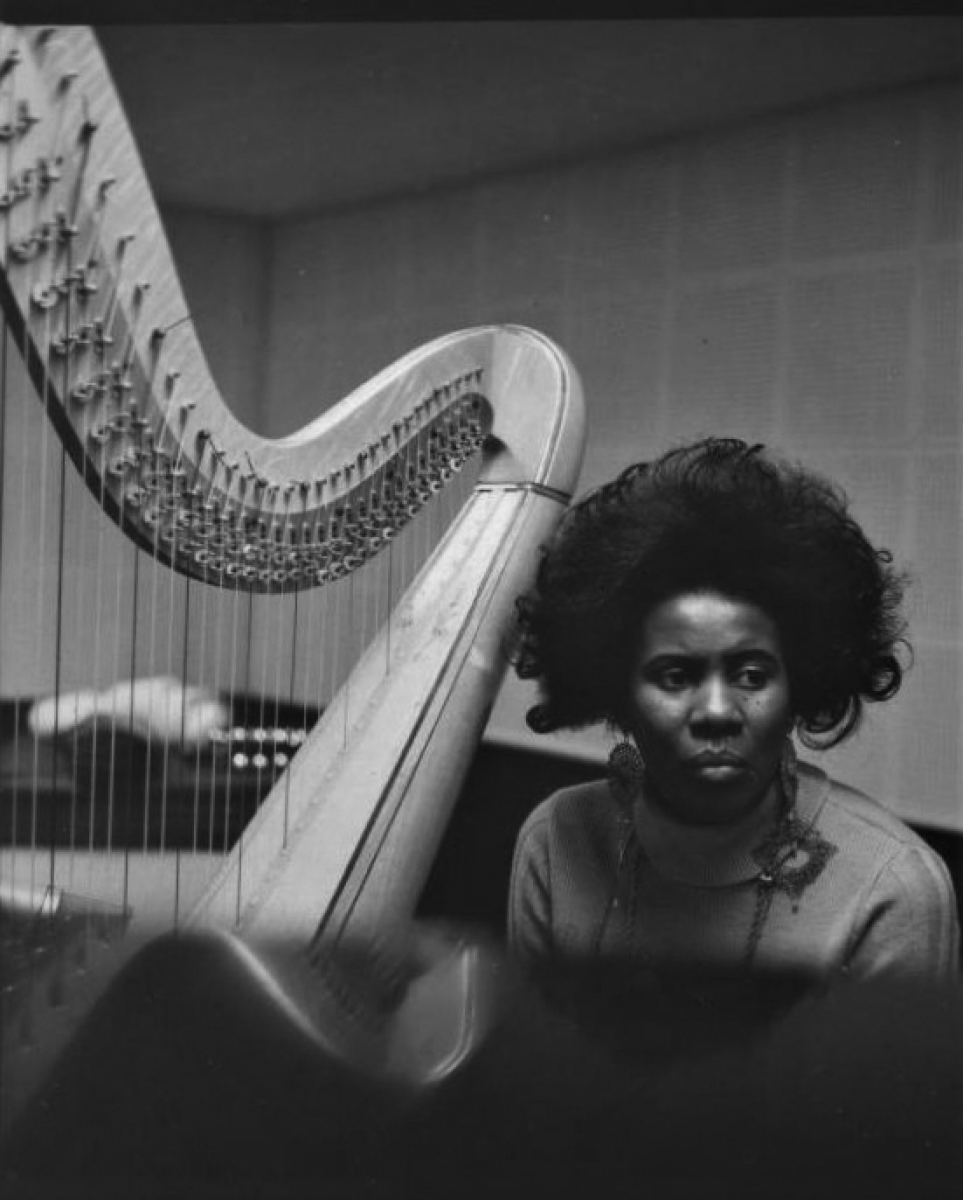 |
Alice Coltrane was a woman pioneer in jazz and musical spirituality. An accomplished pianist and one of the few harpists in the history of jazz, she developed her own style on the piano, organ, harp, and even on Indian instruments. Alice recorded many albums for Impulse! and other record labels beginning in the late 1960s and early 1970s.
Alice was married to the jazz saxophonist and composer John Coltrane, with whom she performed in 1966–1967. He had suggested that she add the element of harp to her music. After her husband died from cancer in 1967at age 40, Alice pursued the harp more vigorously as a tribute to his memory, and immersed herself in performance, practice and recording. By the 1980s she had stopped performing professionally, choosing to follow her spiritual path instead.
LINKS:
2008_summer – Alice Coltrane
(REPRINTED 2020 summer-Alice Coltrane)
A Faith in Music: A Profile of Alice Coltrane by Alyssa Franklin
2018_winter- Alice Coltrane
Alice Coltrane: The Swamini and the Harp by Ashley Kahn
Alice Coltrane: The Harpist and Her Legacy by Brandee Younger
Alice Coltrane's Website
Documentary about Alice Coltrane
Alice Coltrane's Facebook Page
Alice Coltrane's Wikipedia Page
Summer 2020 Extras - Alice Coltrane Playlist
Alice Coltrane - Reflection on Creation and Space
Alice Coltrane - Turiya And Ramakrishna
(1900-1992)
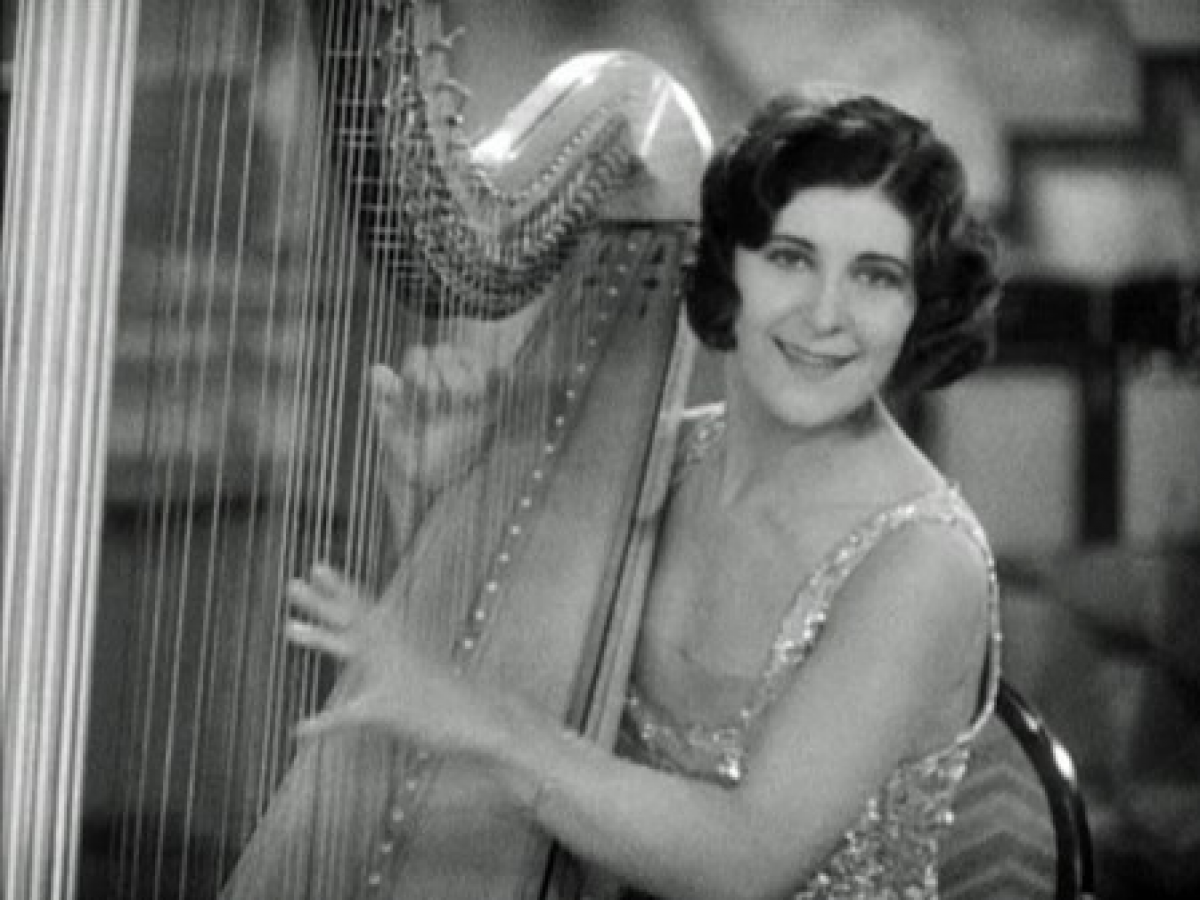 |
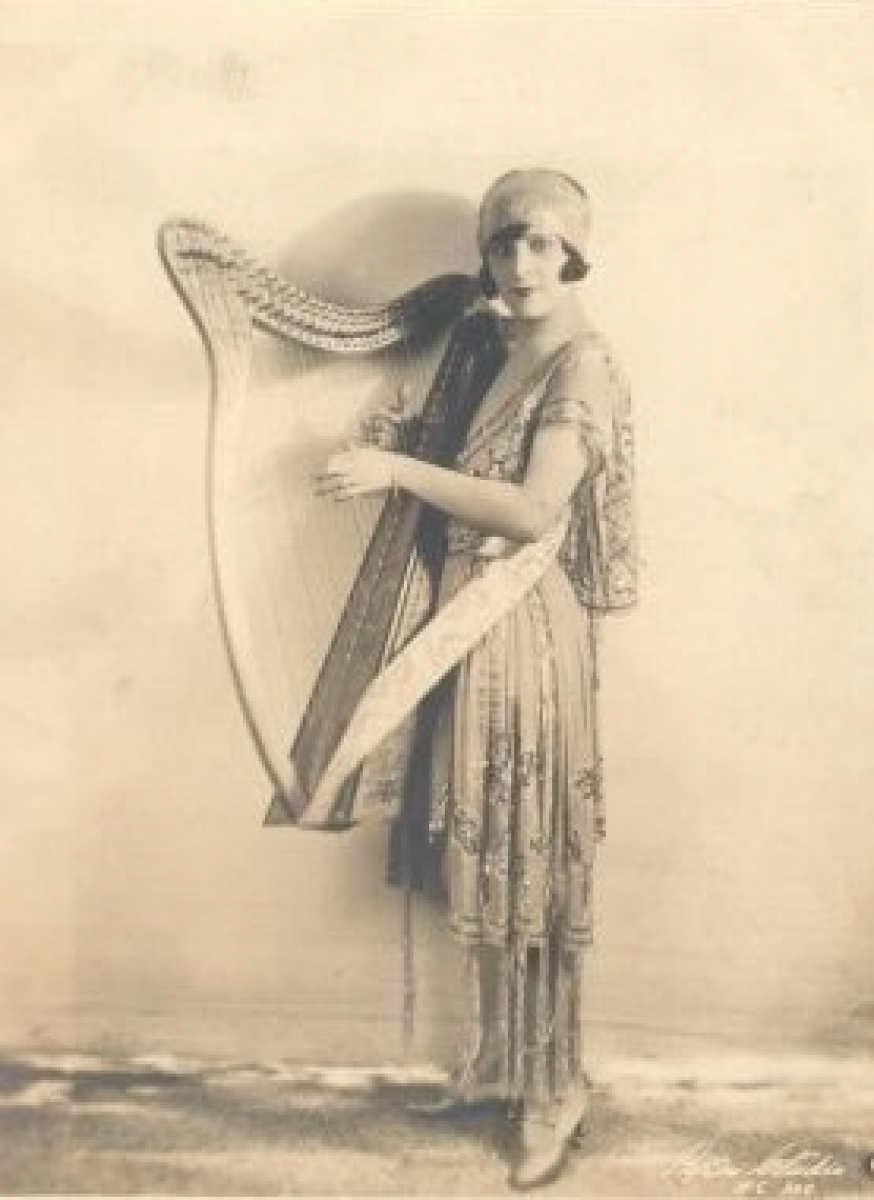 |
In 1919, at age 19, Carlena Diamond was already playing professionally, billed as "vaudeville's youngest harpist". She performed with the Earl Carroll Vanities, then later went on to join Phil Spitalny's All Girl Orchestra. She is best remembered today for her 1929 Vitaphone short, Carlena Diamond, Harpist Supreme, in which she plays her harp, dancing and talking while she plays. Her father, Charles Diamond, did a similar act, dancing while playing the harp.
LINKS:
Carlena Diamond in Vitaphone Short: Harpist Supreme (1929)
Carlena Diamond: Dancing Harp Player
Ad for Carlena's performance in the Statesman Journal, Salem, Oregon • Sun, Nov 17, 1929
(1912-1986)

Internationally known harpist, Laura Erb Muench, left her imprint in the Cleveland, Ohio area, where, for decades, she wove magic with her melodic strings. Her versatility with arrangements of contemporary music broadened the scope of harp literature for entertainment. Her two books of popular music for the harp, “Pops for Harp” and “Pops Goes The Harp” published by Hansen, gave harpists everywhere the opportunity to perform her arrangements. Simulating bells, music boxes, waterfalls, and even the chill winds of December, Laura’s special effects brought life to her music.
She also arranged many pieces, of both popular and classical music, for harp ensemble. And the arrival of the Lyon & Healy troubadour lever harp was loved and promoted by Laura, enabling many more aspiring harpists to realize their dreams.
Born Laura Lambrix, into a musical family in Chicago, she began playing the harp at age 10. Growing up in Buffalo, New York, her serious studies began at D’Youville College. Through her teacher Lucille Rosenbloom, Laura won an honorary scholarship for her excellence in performance on the harp, to the Eastman School of Music in Rochester, New York. There, she was privately tutored by Carlos Salzedo. Laura was First Harpist in the Buffalo Philharmonic Orchestra and a staff harpist for two local radio stations.
In 1954, she and her husband, the late Louis R. Erb, an Industrial Sales Engineer, settled in the Cleveland area. Her teaching as Professor of Harp at Baldwin-Wallace College in Berea spanned 21 years; after which, she gave private lessons in her home. Laura’s personal interest in her students produced lasting friendships, and a sizeable number of professional harpists from the Cleveland area.
Her marriage to retired Commercial Photographer, Robert Muench of Chicago, moved her briefly back to the state of her birth. She then relocated to Naples, Florida, where she and Bob resided near her daughter, Laura Lou Erb Roth, and her grandchildren.
Laura’s final performance, in December 1985, was with her daughter Laura Lou, in the Naples Concert Band. It included Laura’s cadenza in “Glory of the Gulf” composed by Dan Puriel. Laura died on February 1, 1986, and a Memorial Concert was held in July of 1986 in Rocky River, Ohio, with many of her students performing.
(1928-1991)
 |
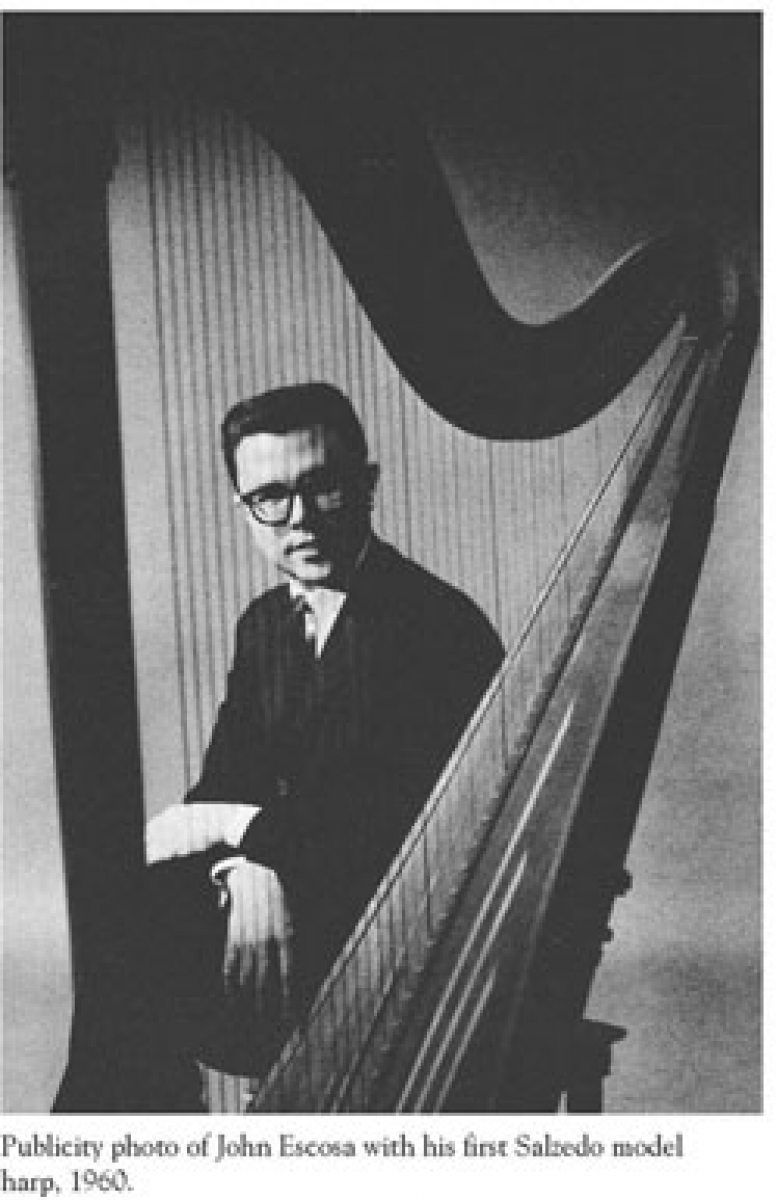 |
 |
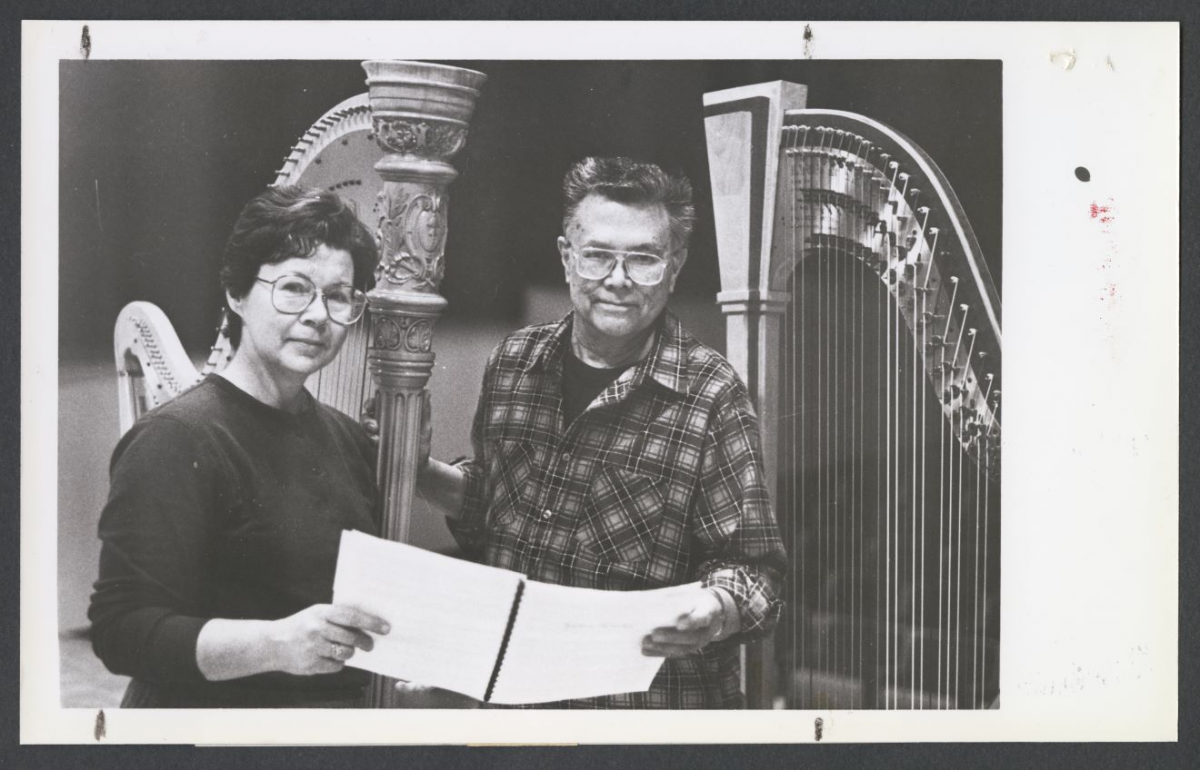 |
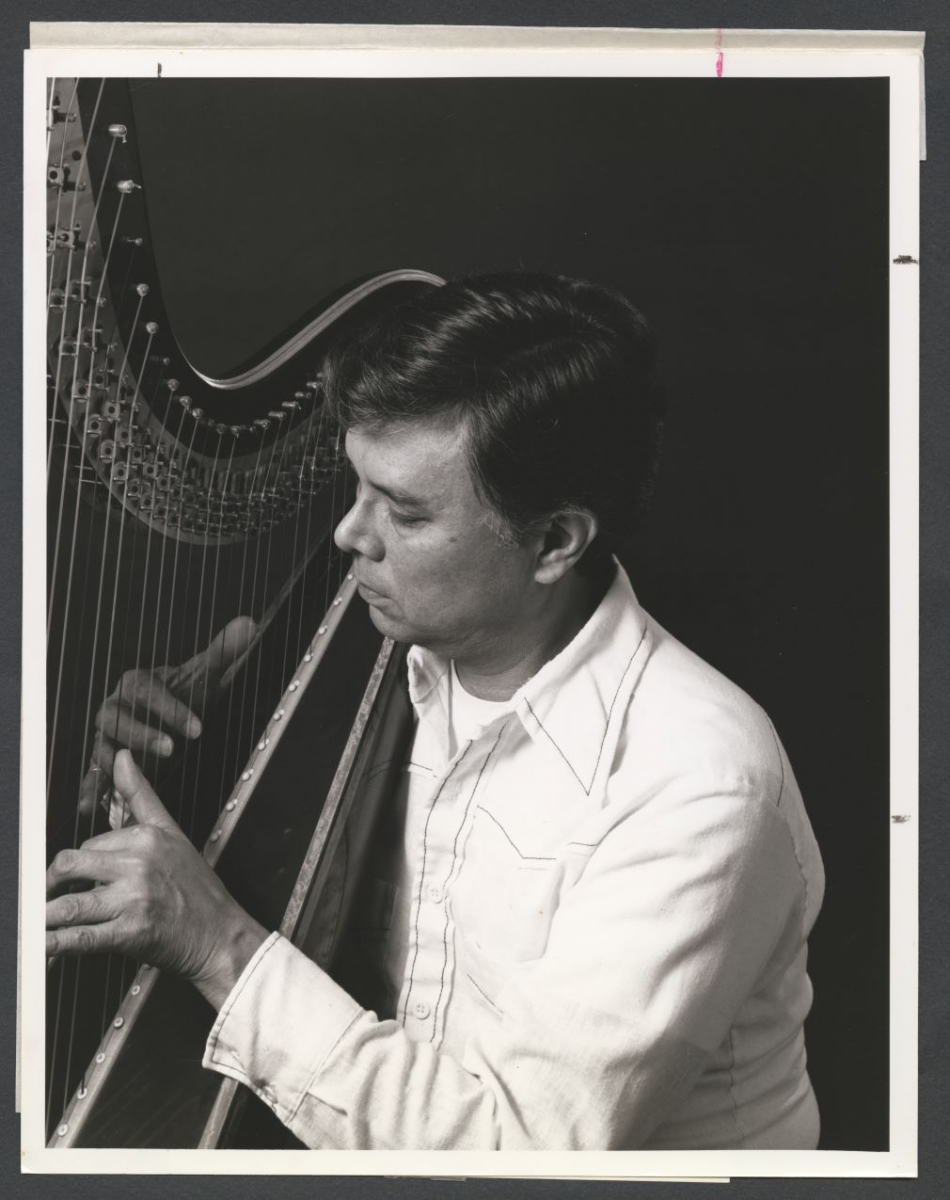 |
|
John Briscoe Escosa was born in 1928 in Fort Wayne, IN. He started piano lessons at age 4, adding pipe organ at 8, and harp at 10. He credited his organ teacher, Clare Edwards with giving him invaluable training for the pop harp field. At his first lesson, at age 8, he was asked to reharmonize a hymn tune, and then to improvise a chorale prelude on the piece, putting the tune in the soprano voice. In subsequent lessons the tune was to be played in alto, tenor, and bass voices.
John had a varied career. He substituted as harpist at various radio stations in New York, and served as Chaplain's Assistant in the Army, where he helped organize a 40 member choir. From 1953-1957 he and a friend operated a ballet school in Fort Wayne, IN. He also served as musical director at the Civic Theatre and Arena Dinner Theatre, and, for 20 years, as organist/choirmaster of the United Church of Christ in Fort Wayne. He taught jazz harp at many jazz harp festivals, and entertained as both pianist and harpist in many fine hotels and restaurants. John is best known for his lovely harp arrangements and his many performances, touring as a concert harpist for over 25 years, giving over 1800 concerts in the United States and Canada in harp duos with Joseph Longstreth, James Pinkerton, and Michael Rado.
LINKS:
AHJ, Vol. 12 No. 1, Summer 1989-John Escosa
(REPRINTED 2020 summer-On The Lighter Side Mills Ashby Escosa Fell McLaughlin)
On The Lighter Side: John Escosa by Carrol McLaughlin
AHJ, Vol. 13 No. 2, Winter 1991 – Escosa Obit
In Memoriam: John B. Escosa, Sr. (1928-1991) by Faith Carman
An Evening With John Escosa & James Pinkerton, Duo Harpists
Longstreth & Escosa – On Stage
(1924-2013)
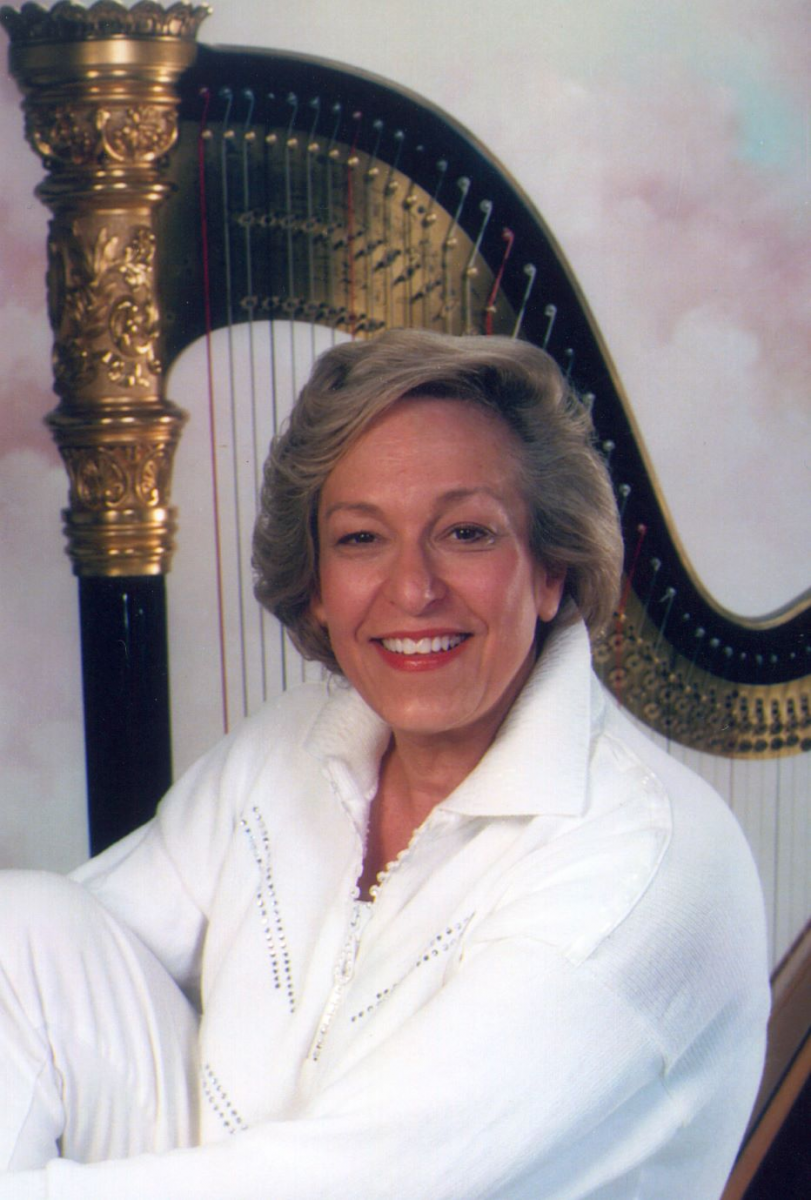 |
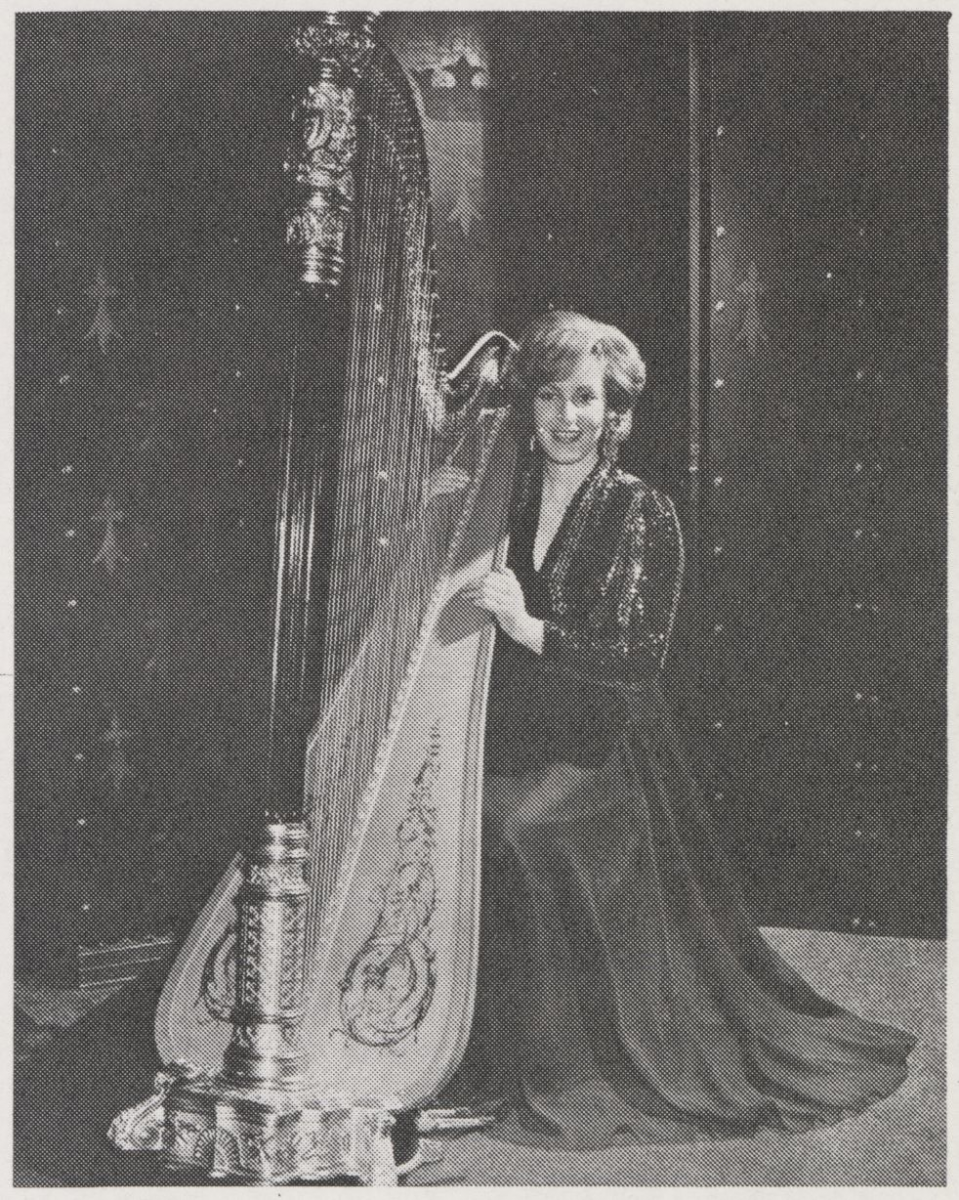 |
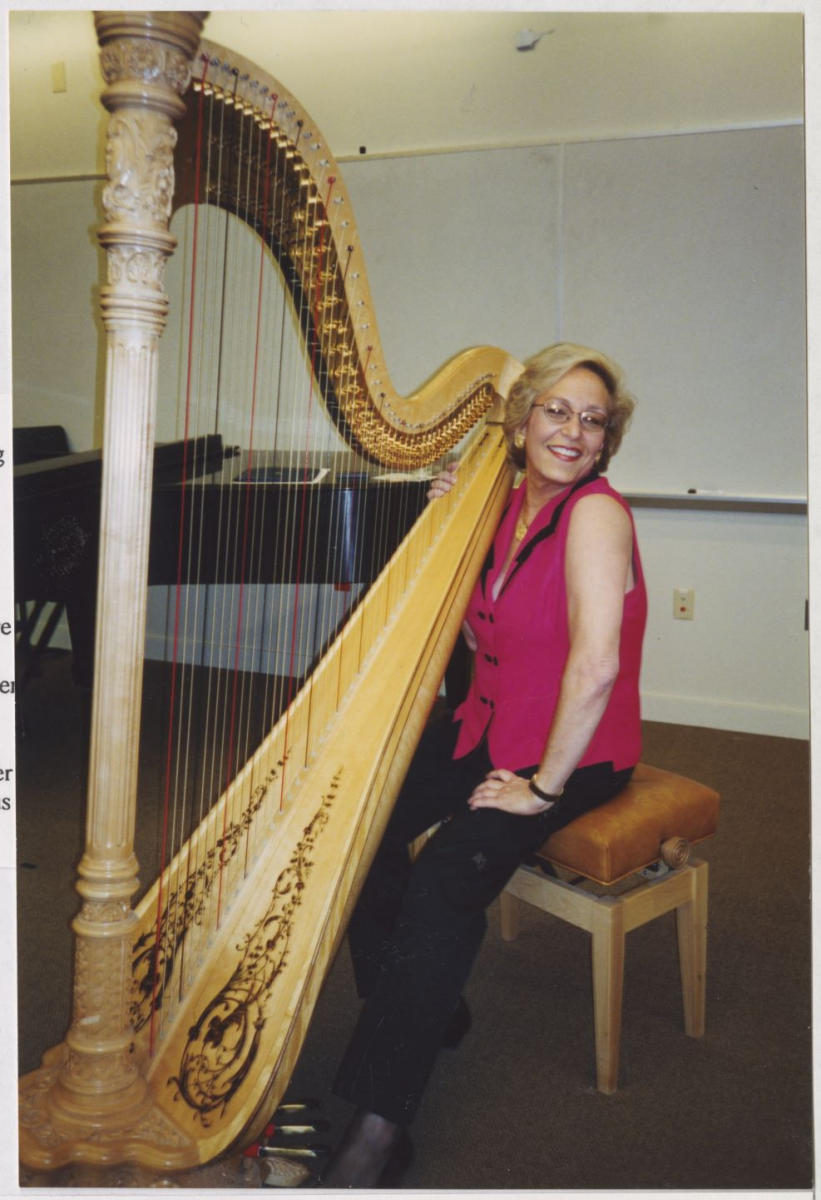 |
Eleanor Rae Fell was born to Irving and Rose Fell in Chicago on July 29, 1944. She grew up in Bloomington, Indiana, attending pre-school through high school there at University School. She graduated in Harp Performance from Indiana University.
Her professional life as a harpist took her to South Africa, where Eleanor moved away from classical repertoire and became one of the first "pop" harpists. She began transcribing and arranging music from the Beatles to Broadway. She married Lee Caulfield, and together they formed Vanderbilt Music Company, a business that has served to employ young harpists and publish harp music--including many of her own arrangements.
LINKS:
AHJ, Vol. 10 No. 4, Winter 1986-4 Eleanor Fell
(REPRINTED: 2020 summer-On The Lighter Side Mills Ashby Escosa Fell McLaughlin)
On The Lighter Side: Eleanor Fell by Carrol McLaughlin
2013_summer - Eleanor Fell
In Memoriam: Eleanor Rae Fell June 29, 1944-June 16, 2013
Eleanor Fell – "Harp Mania" at the USAIHC
Eleanor Fell plays pop selections
Eleanor Fell's obituary on Harp Column
Memorial photos of Eleanor Fell (2013 USAIHC Harp Competition - no sound)
(1933-1997)

DeWayne Fulton began study of the harp with Kajetan Attl, first harpist with the San Francisco Symphony. After hearing Edward Vito perform with the NBC Orchestra under the direction of Toscanini, he arranged to study for a year with Vito in New York, while also attending classes at Juilliard. Later, he studied with Hubert Helinek at the Academy of Music in Vienna and joined the Vienna Philharmonic and the Vienna State Opera Orchestra. He was the first American invited to join the Berlin Philharmonic Orchestra under the legendary conductor Herbert von Karajan. Fulton started playing pop harp in Honolulu at the Captain's Galley in Waikiki Beach, after accepting the offered position of first harpist with the Honolulu Symphony. He played at the Warehouse in Marina del Rey for more than 20 years, where the lounge featured a large amplification system which Fulton designed. Fulton was also a pioneer in electronically amplifying harps, experimenting with phase shifters, tremolo, reverb, and more. He recorded 20 albums, many on his own label.
LINKS:
AHJ, Vol. 8 No. 3, Summer 1982 DeWayne Fulton
On The Lighter Side: Pop Harpist De Wayne Fulton by Carrol McLaughlin
AHJ, Vol. 16 No. 1, Summer 1997 - Fulton Obit
In Memoriam: DeWayne Fulton 1933-1997 by Wenonah Govea
DeWayne Fulton plays "Tenderly"
DeWayne Fulton LA Times Obituary
(1913-1993)
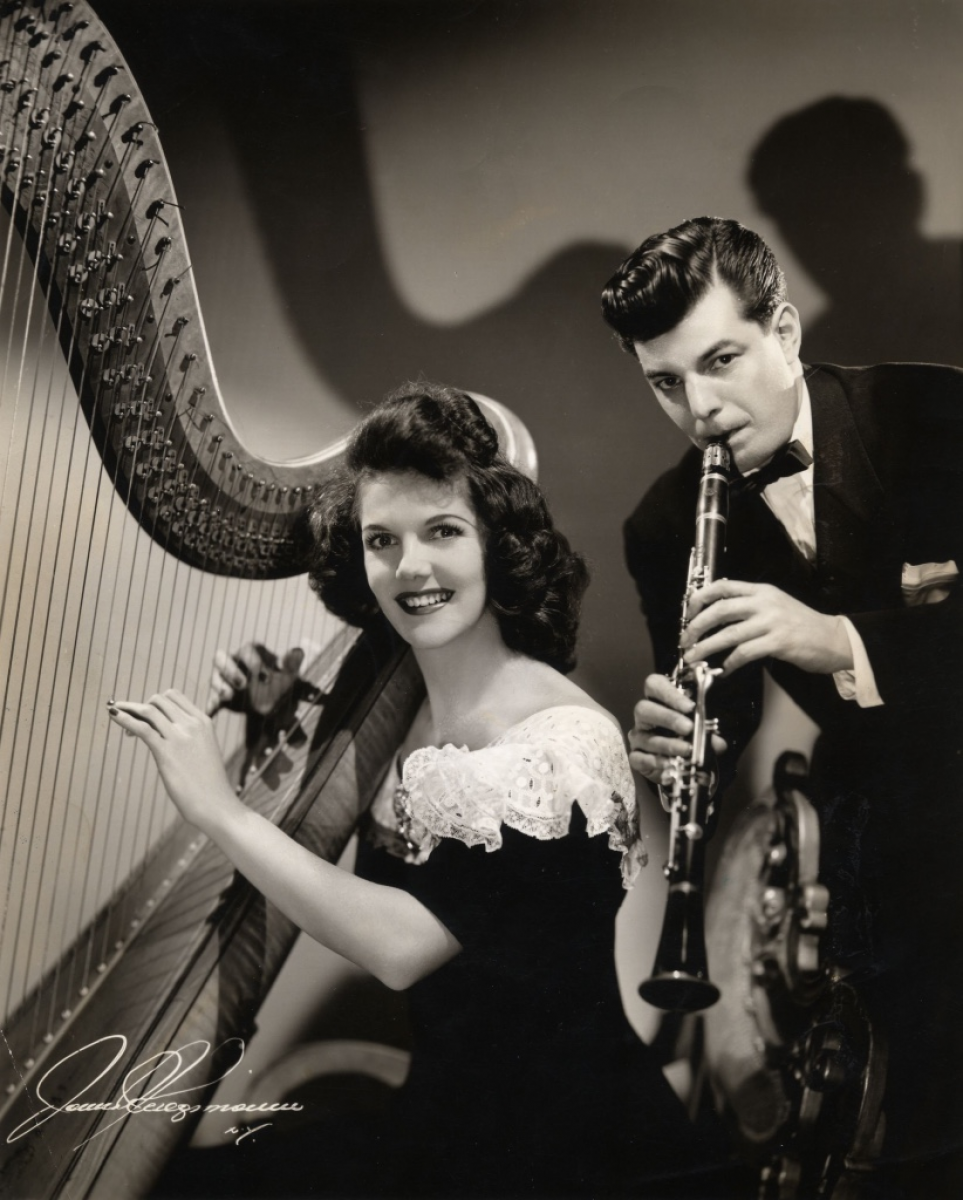 |
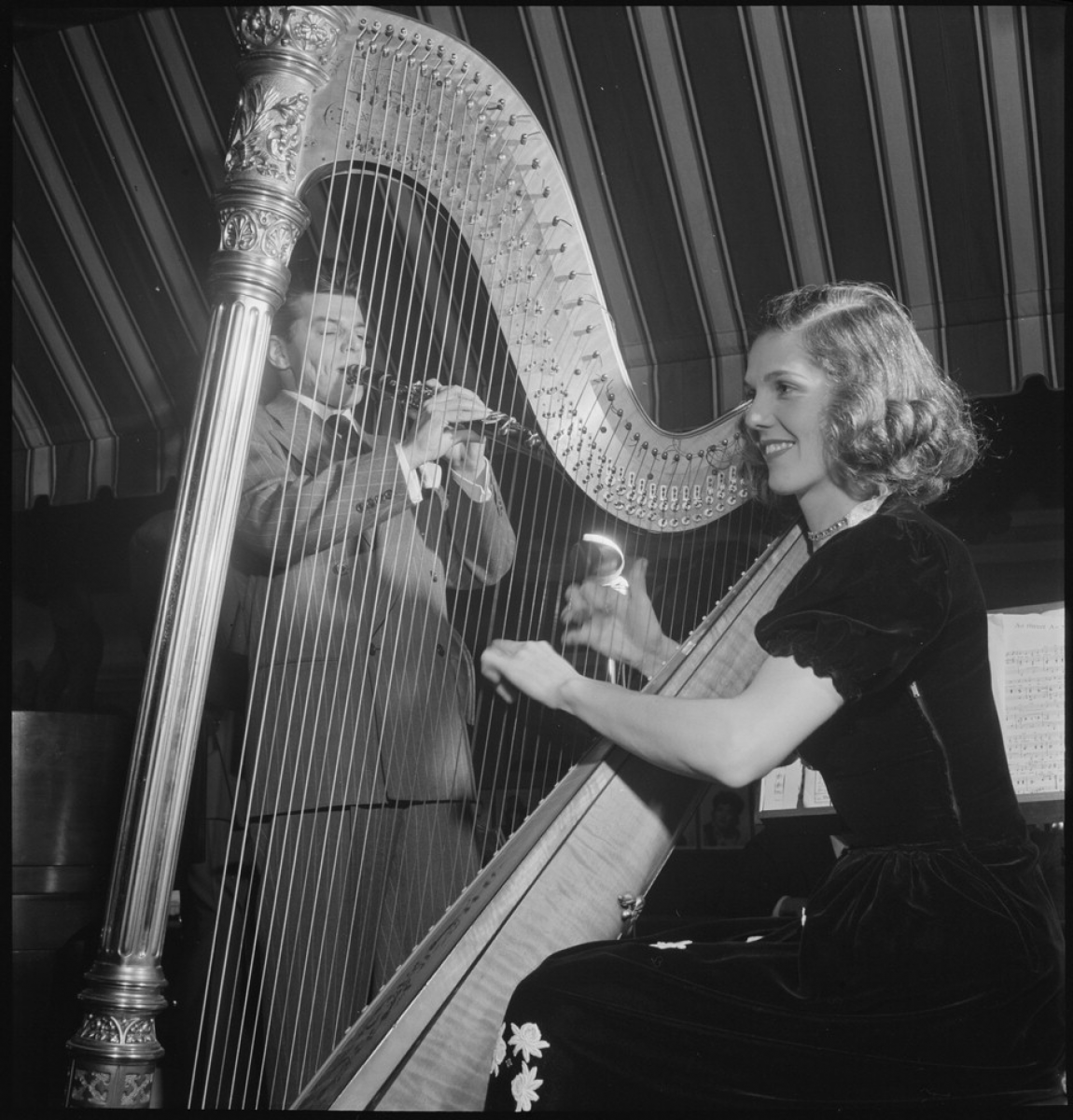 |
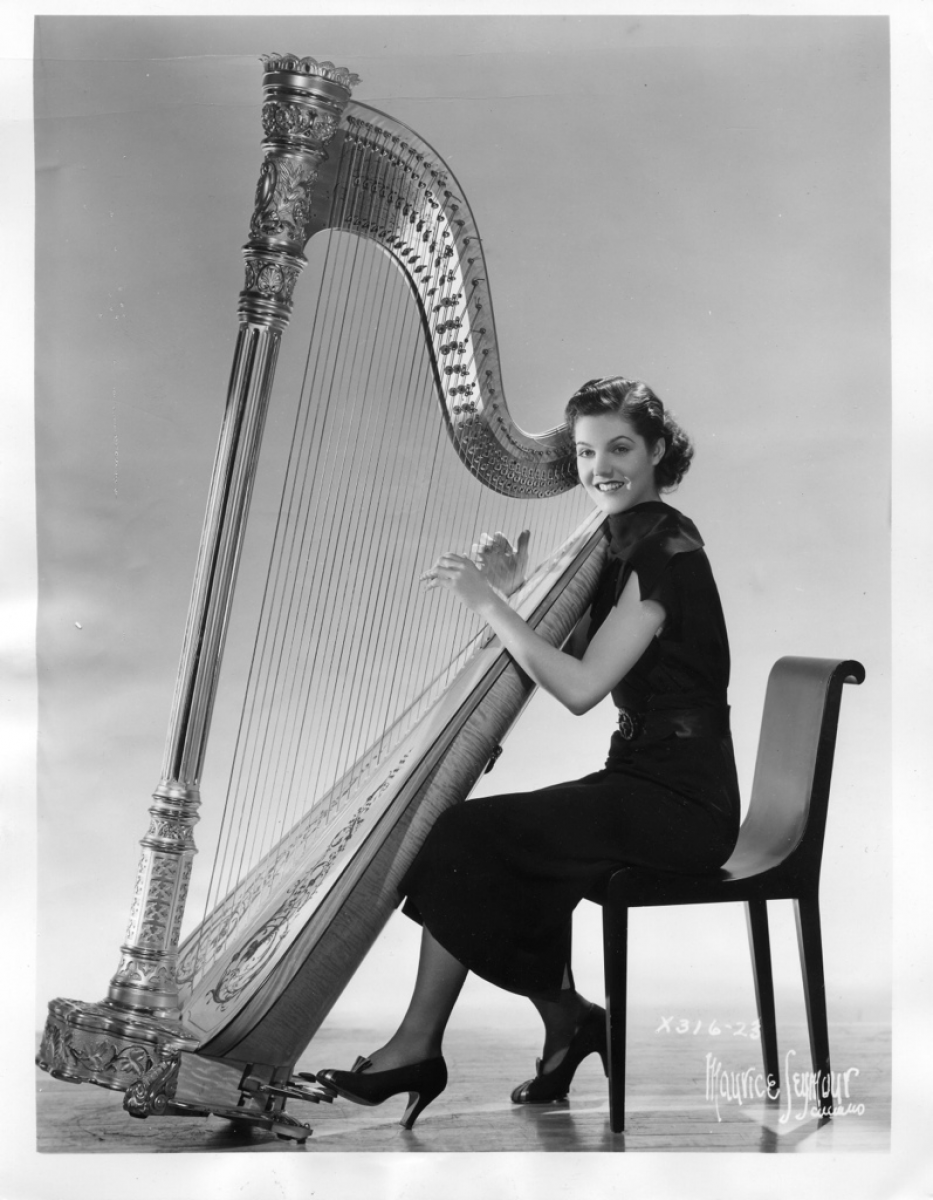 |
Adele Girard Marsala is known as one of the best jazz harpists. She is credited as the first woman to popularize the harp in jazz music. As the daughter of a violinist and an opera singer, Adele learned how to sing and play the piano from a young age. She learned the harp at age fourteen, but initially began work as a vocalist. In 1933, she began playing the harp in orchestras, eventually joining a group known as “The Three T’s”, replacing notable jazz harpist Casper Reardon. In 1939, Adele married Joe Marsala, a jazz clarinetist. She joined his band, and together they performed with other popular jazz musicians for ten years. The two of them embarked on various musical projects over the years, such as performing as studio musicians in Hollywood, writing musicals, and founding a music publishing company called “Beatrice Publishing.” In addition to being a talented harpist, Adele acted in numerous productions and taught drama at the University of California.
LINKS:
(REPRINT: 2020 summer-Adele Girard and Joe Marsala (Editor’s Note, 2020: This article was originally published in The Mississippi Rag in 1994 (which ceased publication in 2008) and reprinted in The American Harp Journal, vol. 17, no. 1, Summer 1999. All efforts to contact The Mississippi Rag were unsuccessful.))
Adele Girard and Joe Marsala: The Sweethearts of Swing by Phillip D. Atteberry
AHJ, Vol. 9 No. 4, Winter 1984-Adele Girard
On The Lighter Side The Jazz Harp of Adele Girard by Carrol McLaughlin
AHJ, Vol. 14 No. 3, Summer 1994-Girard Obit
In Memoriam: Adele Girard by Jane B. Weidensaul
2005_winter – Adele Girard Marsala
Annals of the Harp Adele Girard Marsala: First Lady of the Jazz Harp by Eleisa Marsala Trampler
2024 Winter-2 The Marsalas (Adele Girard)
The Marsalas: A Love Story by Lynn René Bayley
Adele Girard and Joe Marsala's Facebook Page
Adele Girard's Wikipedia Page
Summer 2020 Extras Playlist - Adele Girard & Joe Marsala: The Sweethearts of Swing
Adele Girard Trio - Harp Boogie (1940s)
"Jazz on Harp" Featuring Adele Girard on harp - Al Casamenti on guitar - Felix Giobbi 0n bass - Mory Feld on drums
Girard/Marsala Recordings on The Great 78 Project
(1913-1990)
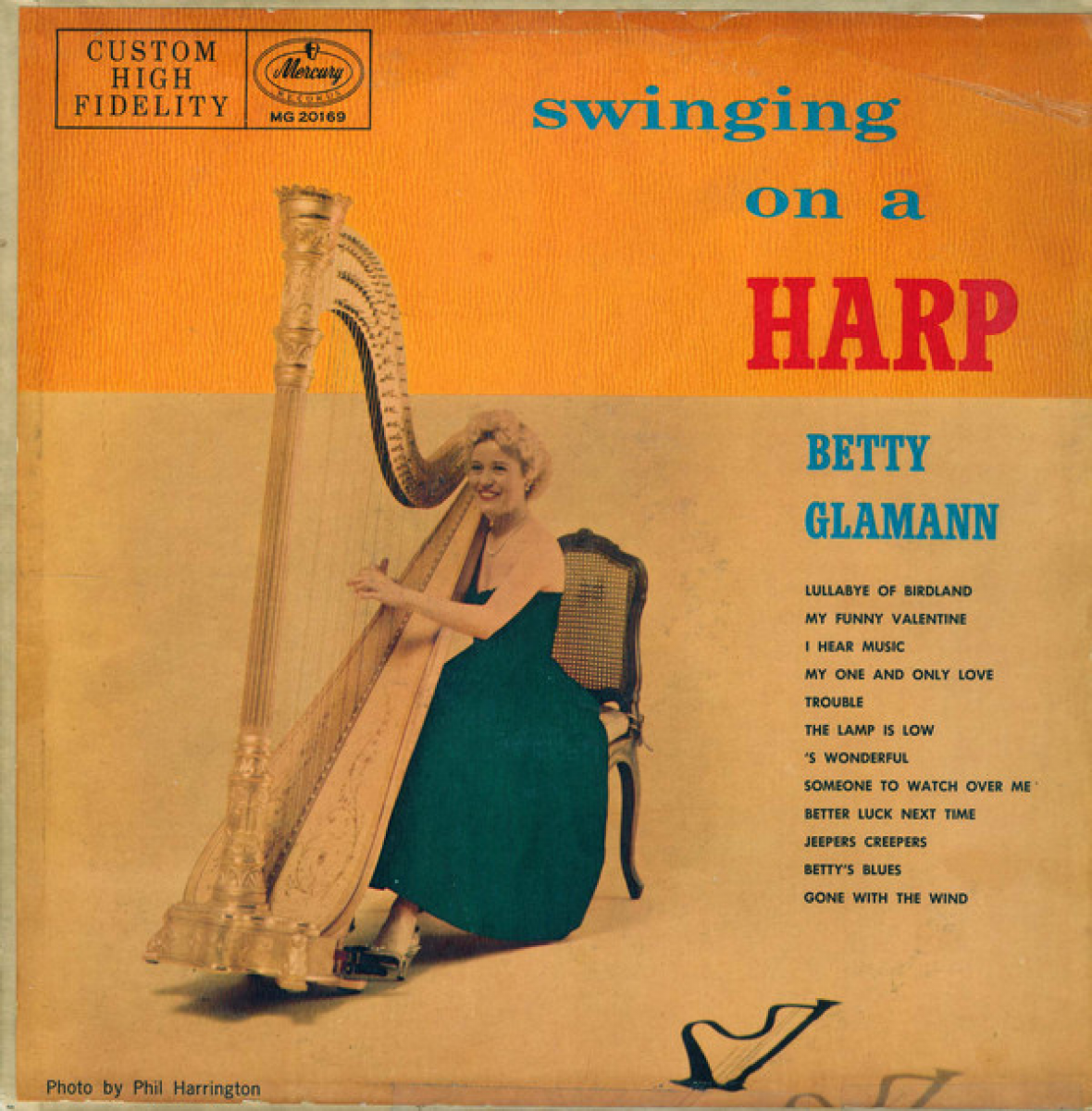 |
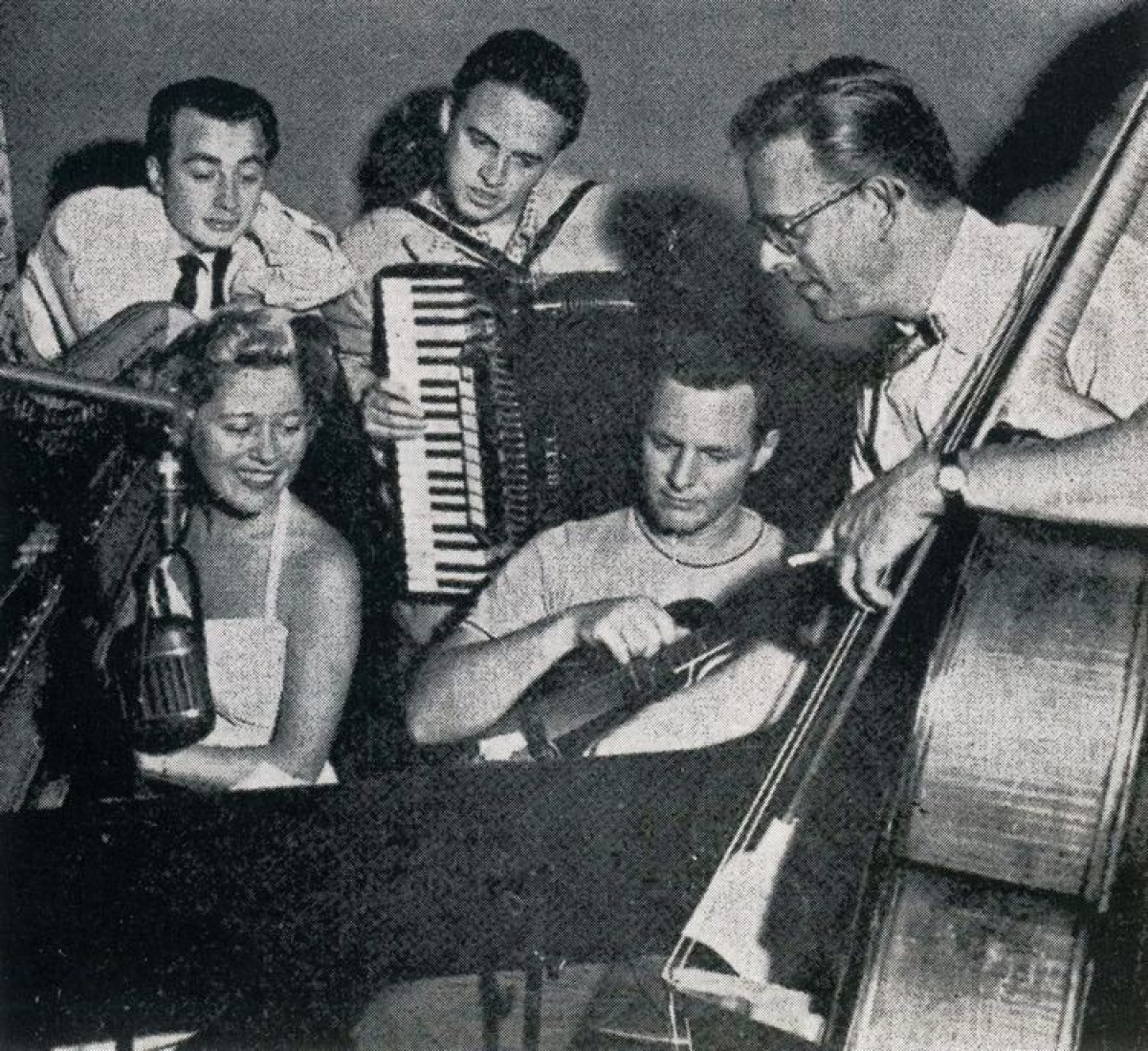 |
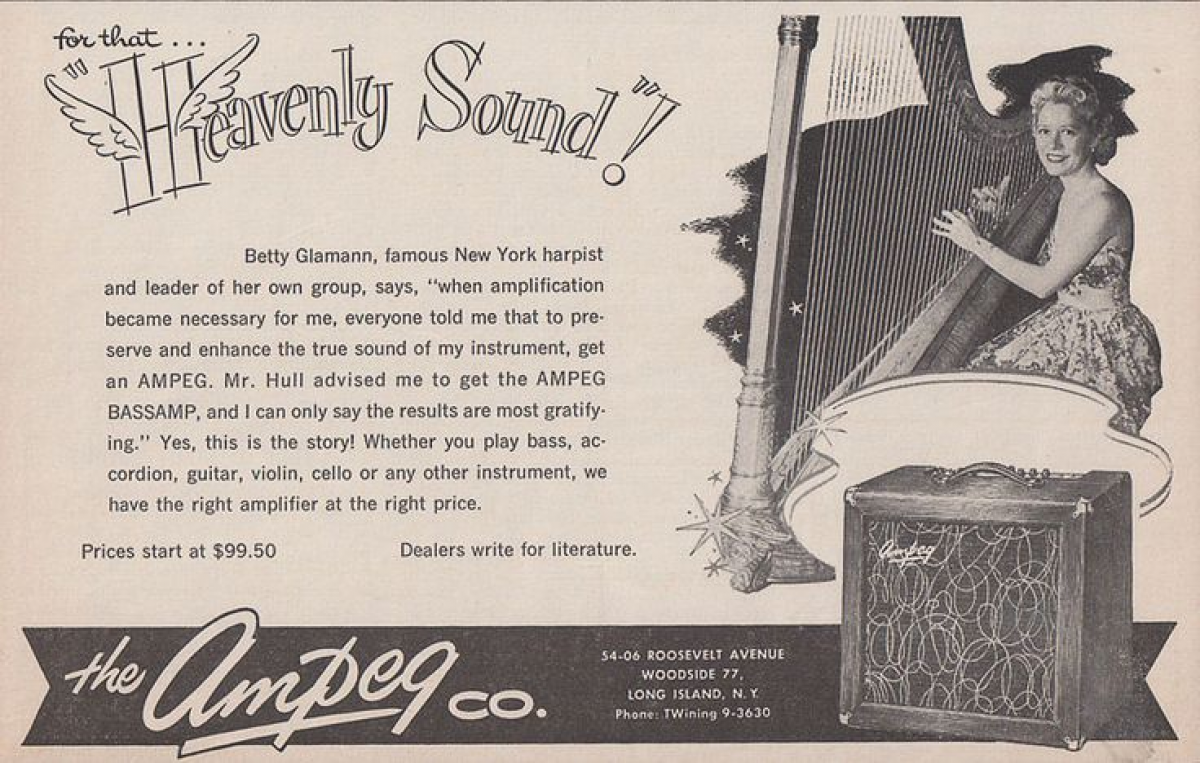 |
Betty Glamann studied the harp at Peabody Conservatory with Joseph Pizzo. She appeared with the Baltimore Symphony Orchestra for three years and was staff harpist for WBAL and WTBR in Baltimore. Following the symphony position, she joined Spike Jones and His Orchestra. She appeared as a guest on the Fred Allen, Gary Moore and Steve Allen TV shows. Betty played harp for numerous Broadway productions, including Antony and Cleopatra, and Jacobowsky and the Colonel. The Smith-Glamann Quintet, with Rufus Smith, arranger and jazz bass player, performed several times for Arthur Godfrey's TV show. Duke Ellington, after hearing Glamann in 1955, added a place for the harp in his orchestra, appointing Betty to the position. Betty was a sideman on two Michel Legrand albums: Legrand Jazz (Columbia, 1958) and Michel Legrand Meets Miles Davis (Philips, 1970).
LINKS:
The Smith -Glamann Quintet -Poinciana -1955 (FULL ALBUM)
Betty Glamann biography on From the Vault
Betty Glamann's Wikipedia page
(1936-2005)
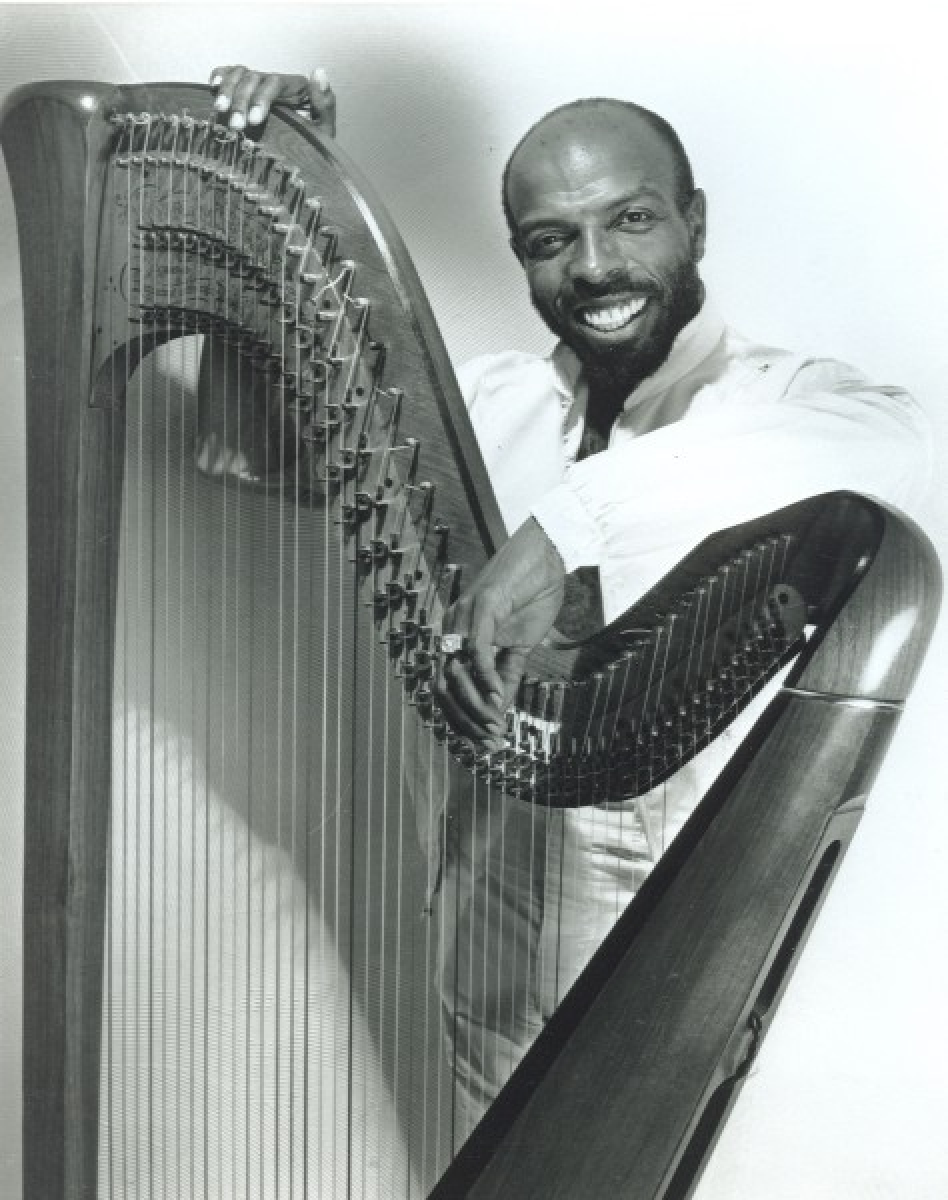 |
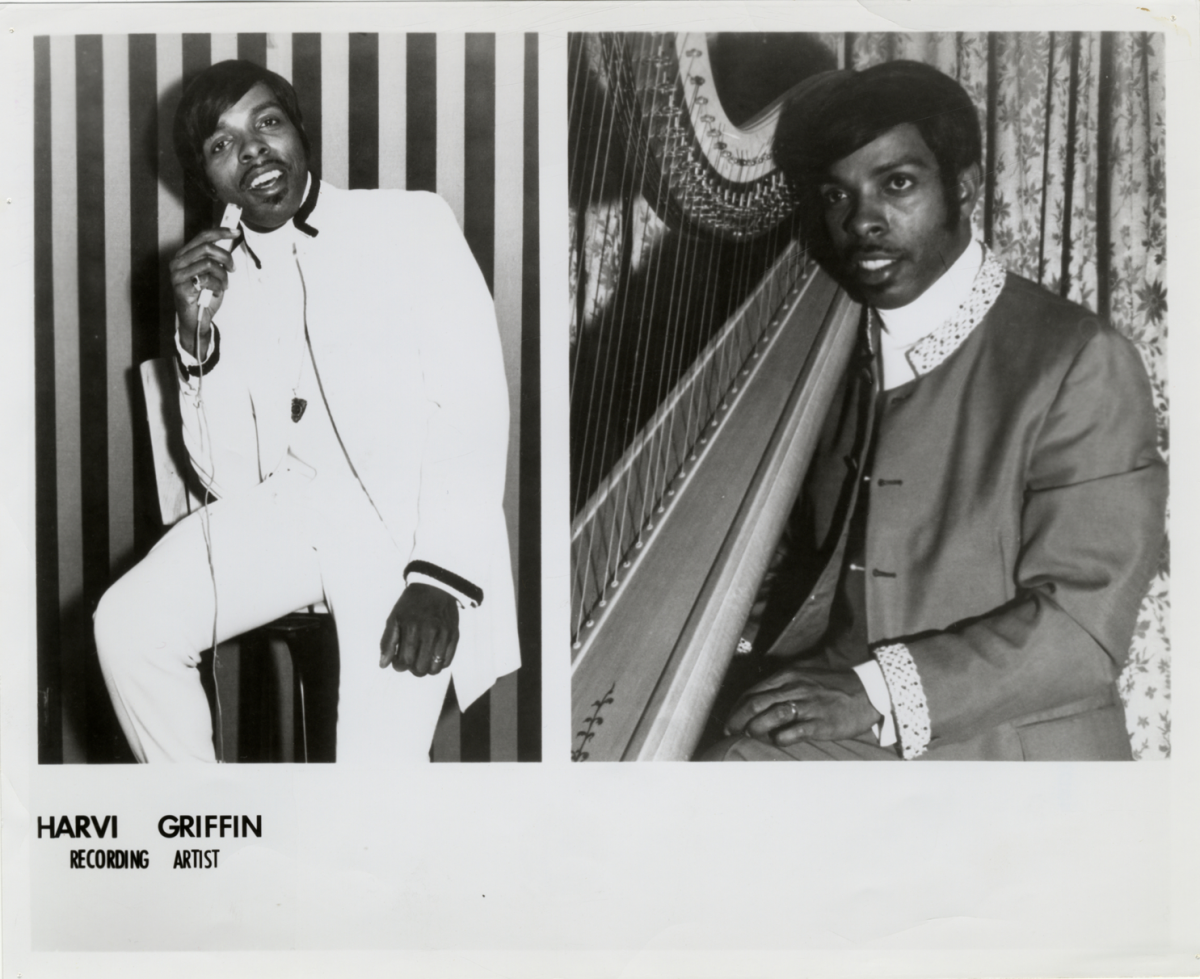 |
Harvi Alonzo Griffin was an American harpist and singer. Born in Detroit, he was the first man to be accepted into the harp program at Cass Technical High School, where he studied with Velma Froude. Harvi was principal harpist with the Detroit Symphony Orchestra, the National Symphony Orchestra and The United States Army Band. He appeared regularly at the White House, performing for visiting dignitaries. He performed at the Century Park Sheraton Hotel in Manila, the Hotel Pontchartrain in Detroit, and appeared at Caesar's Palace in Las Vegas. Following his Washington days, Harvi spent many years touring eleven months a year, giving over 100 concerts annually, with programs that included classical, country and western, and his signature jazz music.
LINKS:
AHJ, Vol. 11 No. 3, Summer 1988 Harvi Griffin
On The Lighter Side: Harvi Griffin by Carrol McLaughlin
2005_winter - Harvi Griffin
In Memoriam: Harvi Griffin December 14, 1936-August 9, 2005 by Elizabeth Huntley
Harvi Griffin – Volume II. Contemporary
The Two Sides Of Harvi Griffin (full album) [1971 Detroit Harp Jazz]
(1915-2002)
 |
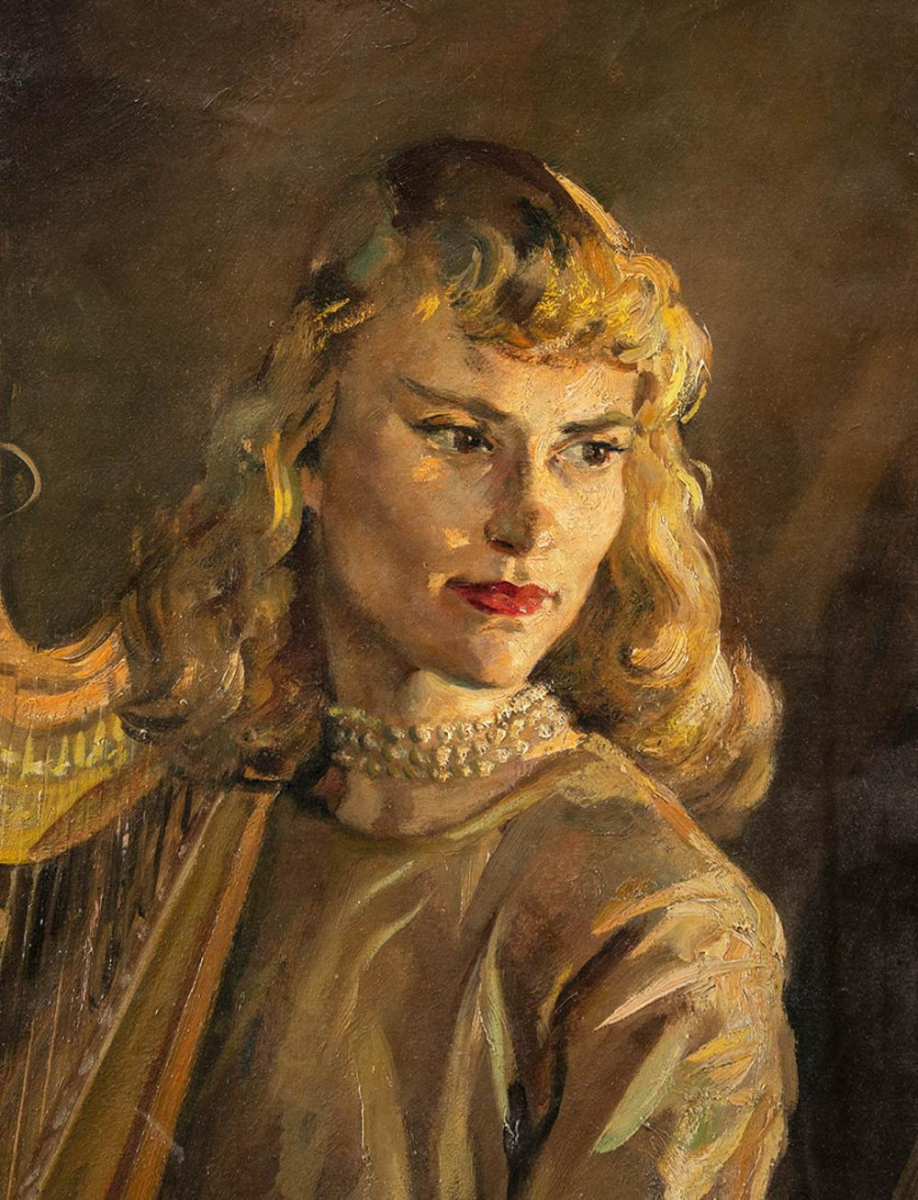 |
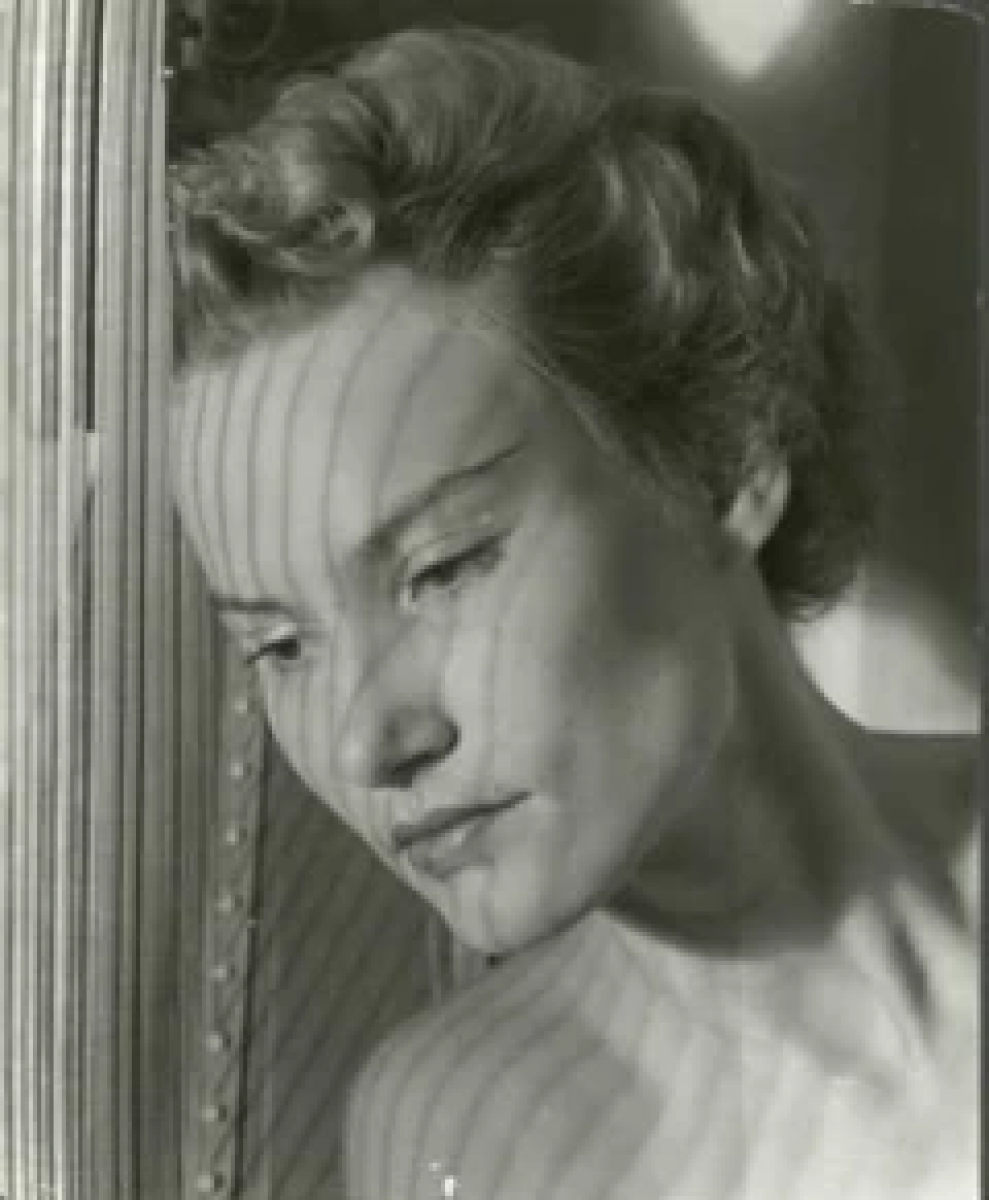 |
Daphne Hellman was a jazz harpist who performed around the world, and played for three decades at the Village Gate in New York City. However, she is probably best known for playing in the New York subway system.
Daphne began lessons at age 12 with Mildred Dilling, then went abroad to study with Henriette Renie in France. When she was 16, Daphne stopped playing the harp for several years to give full attention to drama school. After hearing Niconar Zabaleta playing at a hotel in Haiti, her love of the harp was rekindled. She returned to New York and studied with several teachers, including Carlos Salzedo, Mario De Stefano, and Marcel Grandjany.
Daphne started her performing career in a famous New York cabaret, Le Ruban Bleu. Jazz harpist Caspar Reardon had been performing at the club, and when he left, Daphne auditioned for his position. She performed off and on at the Reuban Bleu for twelve years, often sharing the bill with artists such as Billie Holiday. At this time Daphne also began performing solo classical concerts for the Community Concerts Association. In the 1950s, Daphne formed Hellman's Angels, consisting of harp, bass, and guitar, which performed all over the world.
LINKS:
AHJ, Vol. 11 No. 1, Summer 1987-Hellman's Angels
On The Lighter Side: The Angel of Hellman’s Angels by Carrol McLaughlin
AHJ, Vol. 16 No. 4, Winter 1998 - Daphne Hellman
Harp Lady by Whitney Valliett
AHJ, Vol. 18 No. 4, Winter 2002 - Hellman Obit
In Memoriam: Daphne Hellman 1915-2002 by Park Stickney
Daphne Hellman's Facebook Page
Daphne Hellman's Wikipedia Page
Daphne Hellman (Harpist) (In Memory) Interview on The Woman's Connection® w/Barrie-Louise Switzen
Holiday For Harp - Daphne Hellman Quartet 1959 Stereo LP (Columbia Records)
(1921-1985)
 |
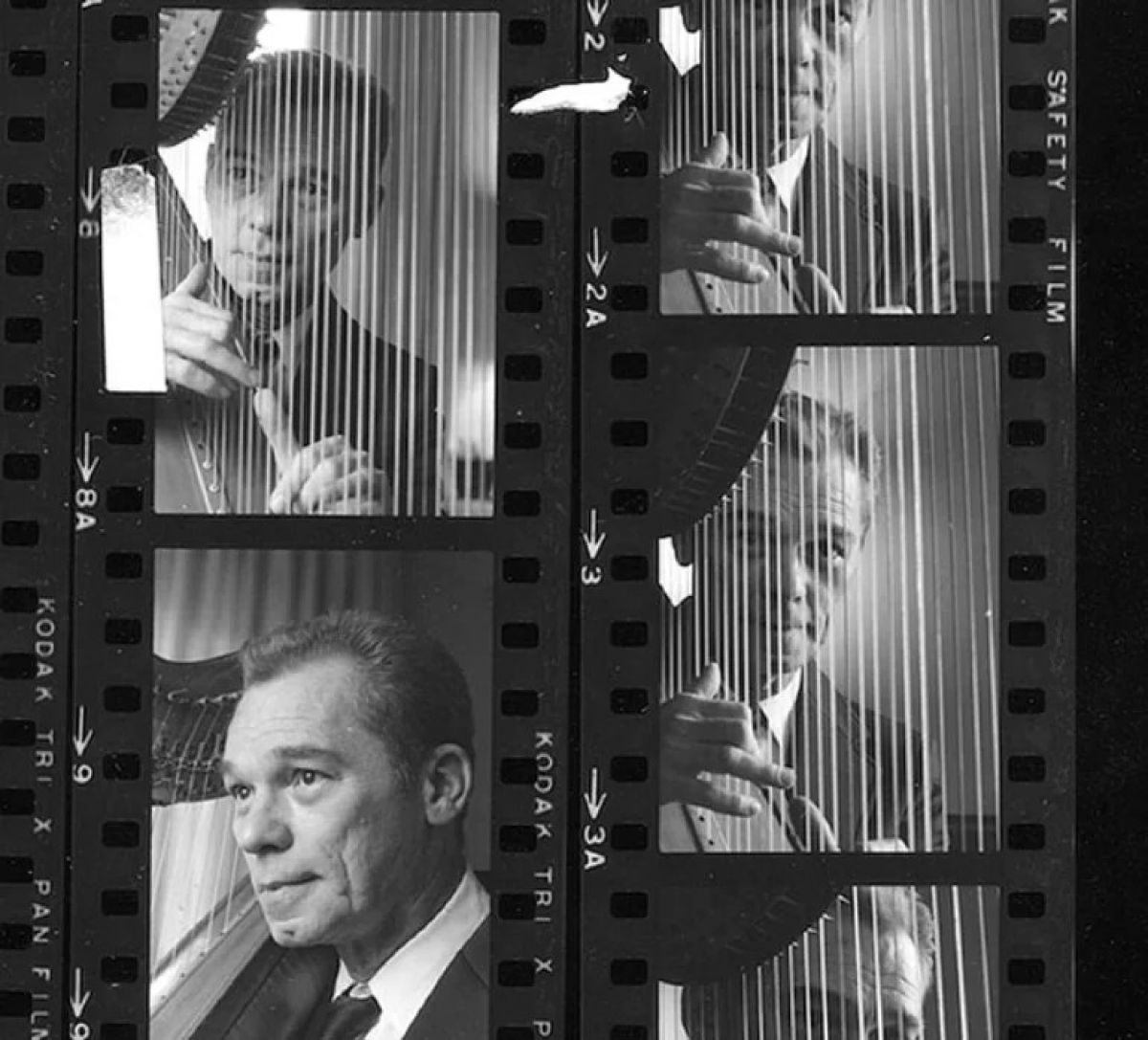 |
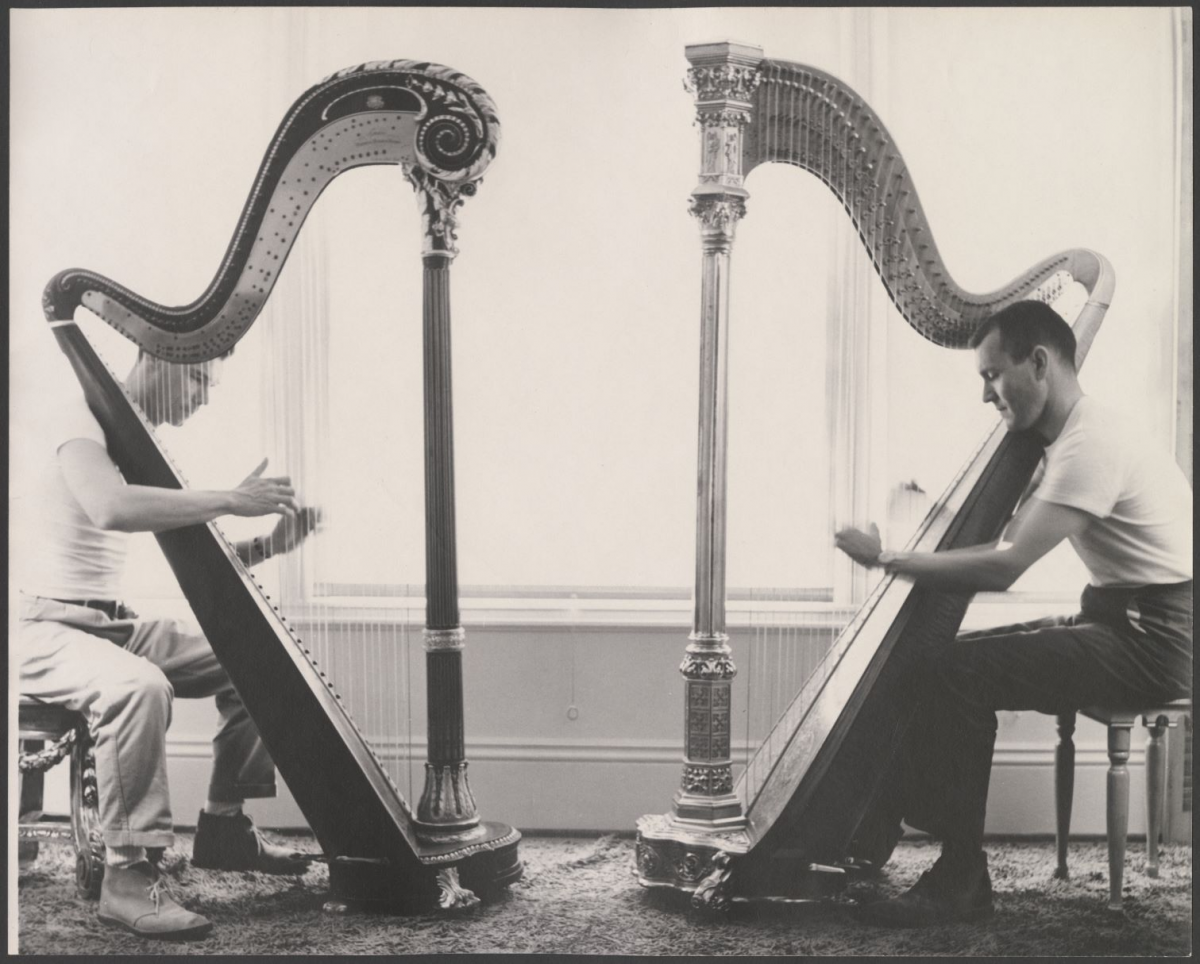 |
Gail Laughton (1921-1985), was an American jazz harpist. He worked in Hollywood, playing on many film and cartoon soundtracks. Originally from Oklahoma, Laughton was touring Panama and Cuba with his family's orchestra as a young child. Laughton's first experience in live radio broadcasting came in 1939, when he became staff harpist with Eliot Roosevelt's Texas State Network, in Forth Worth, Texas. Laughton had his own weekly half-hour show featuring classical harp music, in addition to playing twenty broadcasts with the Texas State Network Orchestra. Laughton moved to California in the 1940s, where he worked with Harpo Marx, Cary Grant and numerous other Hollywood celebrities.
His first all-jazz harp record was released by RCA Victor in 1942. It included many Ellington tunes, and featured Spike Jones on drums. The track "Pompeii 76 A.D." from his album Harps of the Ancient Temples, a suite of eleven of his own compositions, was used in the movie Blade Runner.
LINKS:
AHJ, Vol. 7 No. 3, Summer 1980 OTLS - Gail Laughton
On The Lighter Side: Gail Laughton, Jazz Harpist by Carrol McLaughlin
AHJ, Vol. 10 No. 3, Summer 1986-Gail Laughton Obit
In Memoriam: Gail Laughton 1921-1985 by Carrol McLaughlin
Gail Laughton's Wikipedia Page
Harp of the Ancient Temples (1969)
(1931-1994)
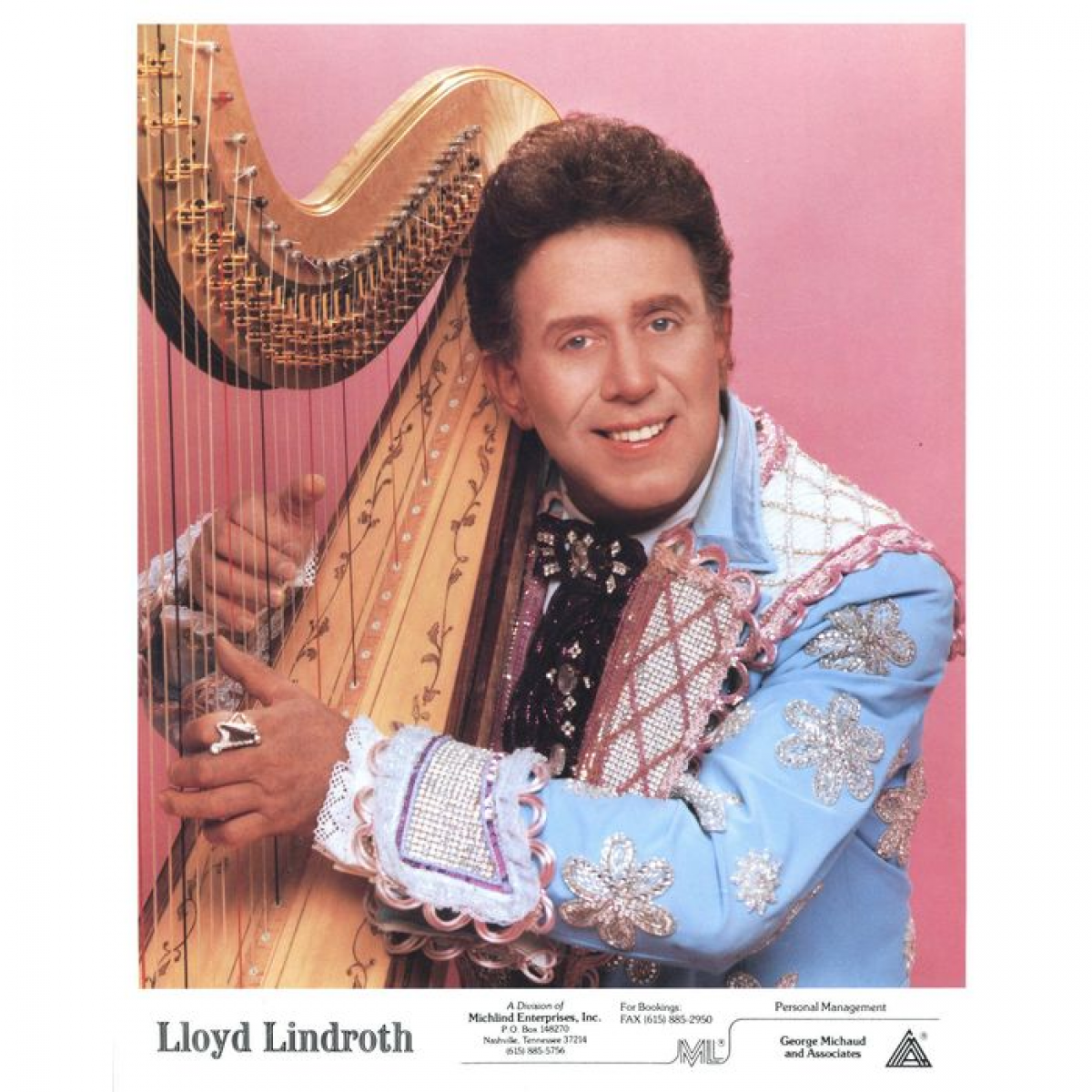 |
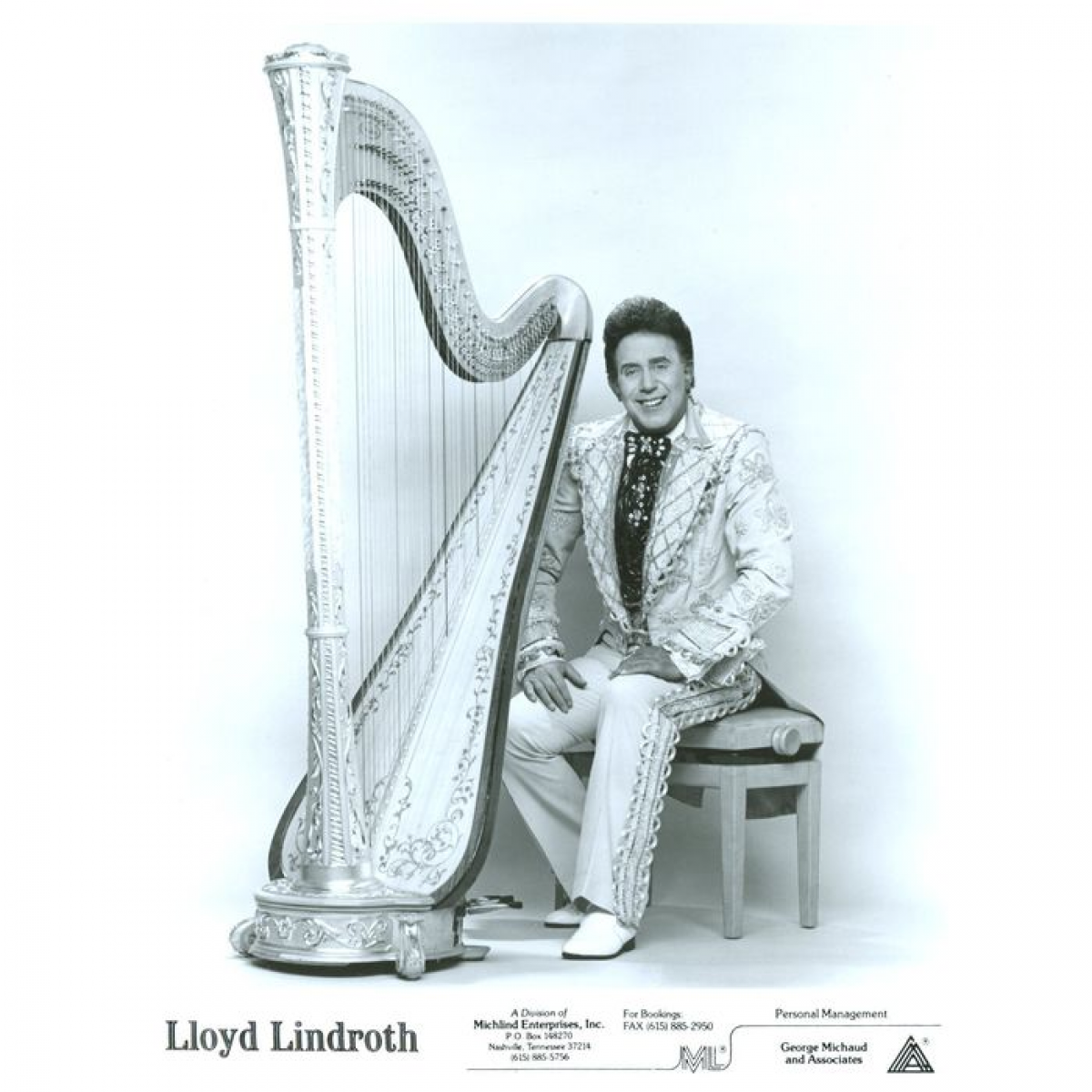 |
Lloyd Lindroth was a Seattle native who was known as "the Liberace of the harp." He began playing the harp at age 14. After studying with Herbert Graff at Seattle University, he went directly into the United States Army Band as their solo harpist. During his three years of service he gave five command performances at the White House. He worked on his electronic sound while in the service, eventually inventing an amplification system called the “Voice of the Harp,” which became a registered trademark of his company, HARPLAND.
Lloyd was the first harpist ever to appear at the Grand Ole Opry. He played more than thirty times on TNN’S “Nashville Now Show” and was also the first harpist ever to appear as a headliner in a main showroom in Las Vegas, Reno, and Lake Tahoe. Wearing flashy costumes, he performed for nearly eleven years at the Opryland Hotel’s famous Cascades with its Dancing Waters and laser light show. He was the main attraction to Music City USA visitors, playing live concerts twice nightly, six days a week, for millions of visitors annually.
LINKS:
AHJ, Vol. 5 No. 2, Winter 1975 50 Lindroth Tribute Mills-Castellucci: Ad
AHJ, Vol. 4 No. 3, Spring 1974 Lloyd Lindroth
Do I Hear A Harp? By Lois Adele Craft
AHJ, Vol. 14 No. 4, Winter 1994 - Lindroth Obit
(REPRINTED: 2020 summer-Lloyd Lindroth)
In Memoriam, Lloyd Lindroth 6 June 1931 - 9 June 1994 by George Michaud
AHS Lindroth Summer 2020 Extras Playlist:
Lloyd Lindroth's Wikipedia Page
Lloyd Lindroth - Superharp (Full Album)
(1894-1967)
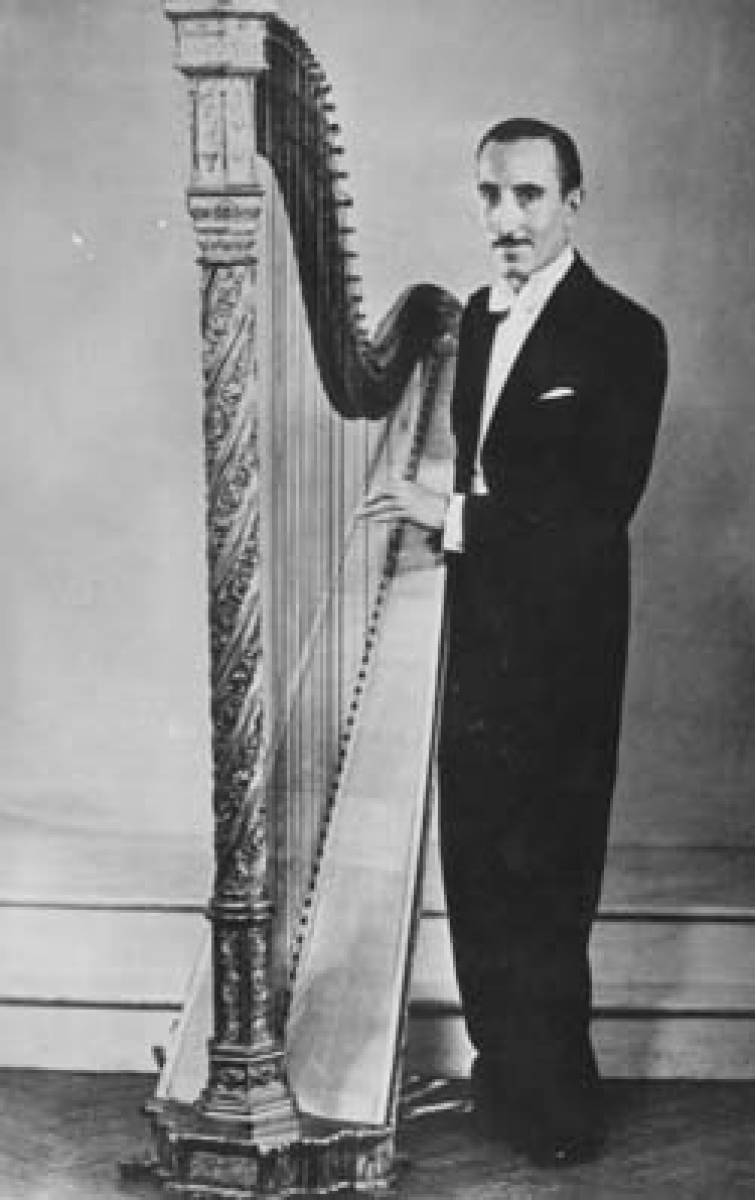 |
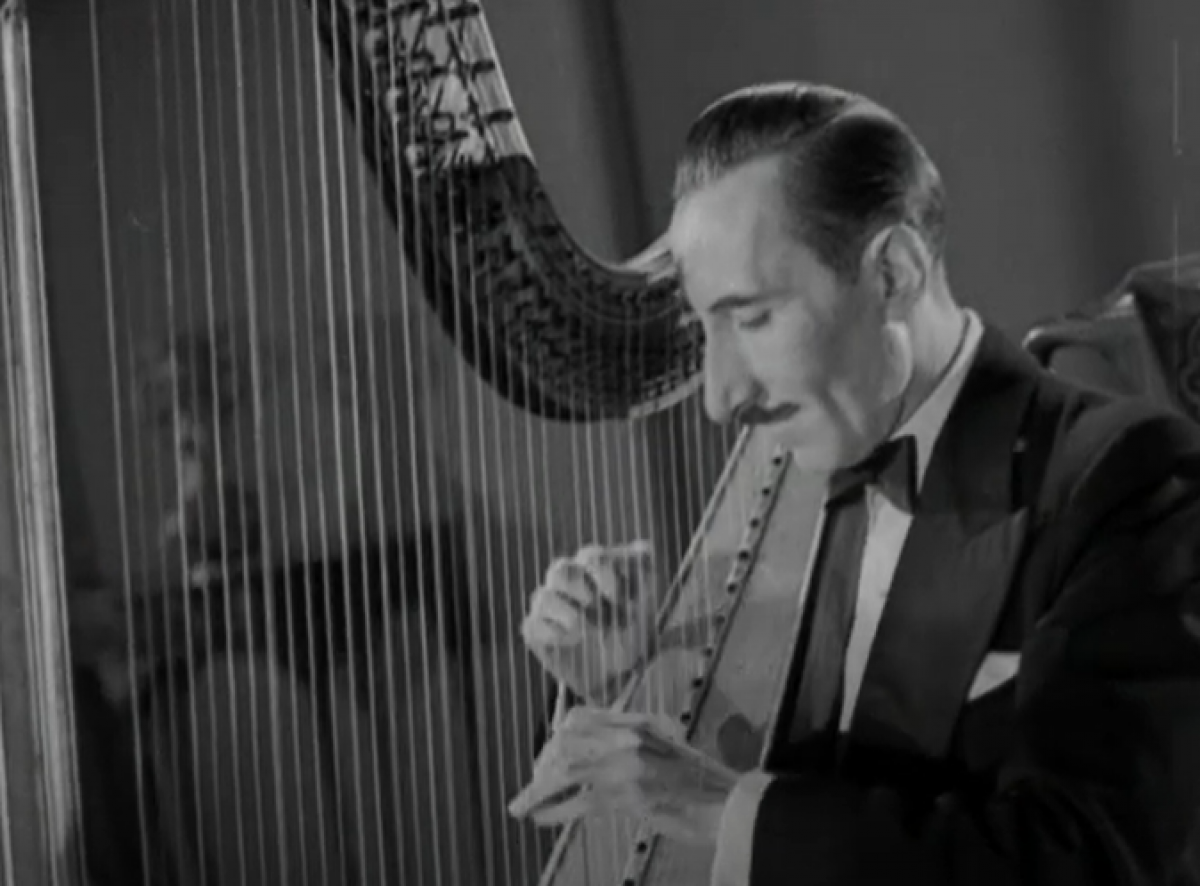 |
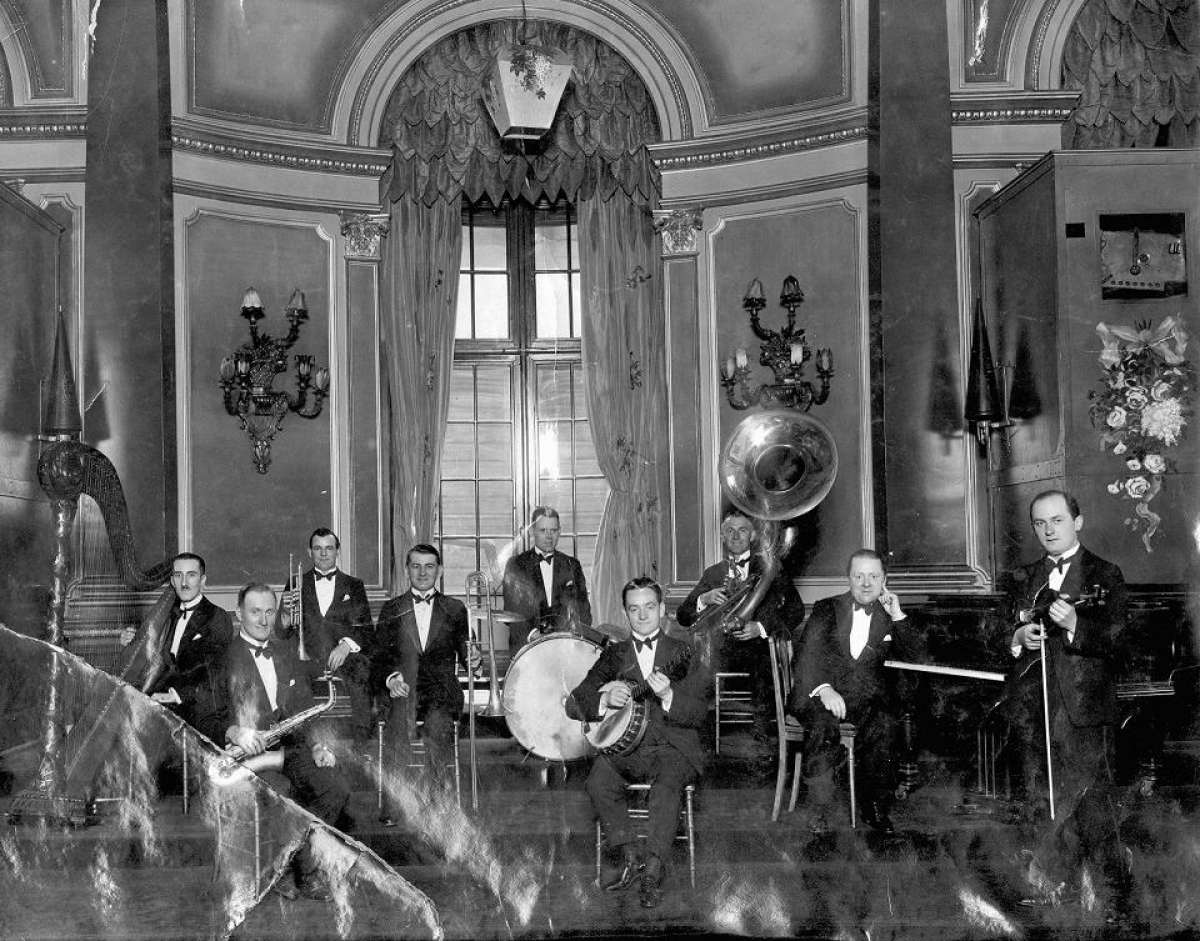 |
Born in Florence in 1894, Mario Lorenzi was the son of Giorgio Lorenzi, who taught harp at the Royal Musical Institute of Florence. In 1908, Mario earned his diploma at the age of just 14, and was already an established concert performer, engaged in a series of concerts throughout Italy. His family decided to move to London in 1909, where Mario almost immediately found work at the Beecham Opera Company. His great versatility and ability to easily improvise allowed him to play in the new popular genres of ragtime, swing, and jazz. Within a few years Lorenzi achieved incredible success, earning the nickname "King of the Harp."
In 1926 he was invited by the famous bandleader Jay Whidden to play harp, sax and clarinet in his band. On October 12th, 1926 Mario recorded “I Don’t Want Nobody But You,” one of the earliest appearances of a harp on a dance band recording. Mario also played with Fred Elizaldes' band. In the 1930s he made a series of recordings under his own name. In a video dated 1939 Lorenzi announces: “Now I will show you how to swing on the harp. Don't be afraid, it's not dangerous!"
LINKS:
Biography of Mario Lorenzi on From the Vaults
Mario Lorenzi Recordings in The Great 78 Project
"I Don't Want Nobody But You" - Jay Whidden and his New Midnight Follies Band (1926)
One of the earliest dance band recordings in which the harp appears
Videos of Mario Lorenzi on British Pathé
(1888-1964)
 |
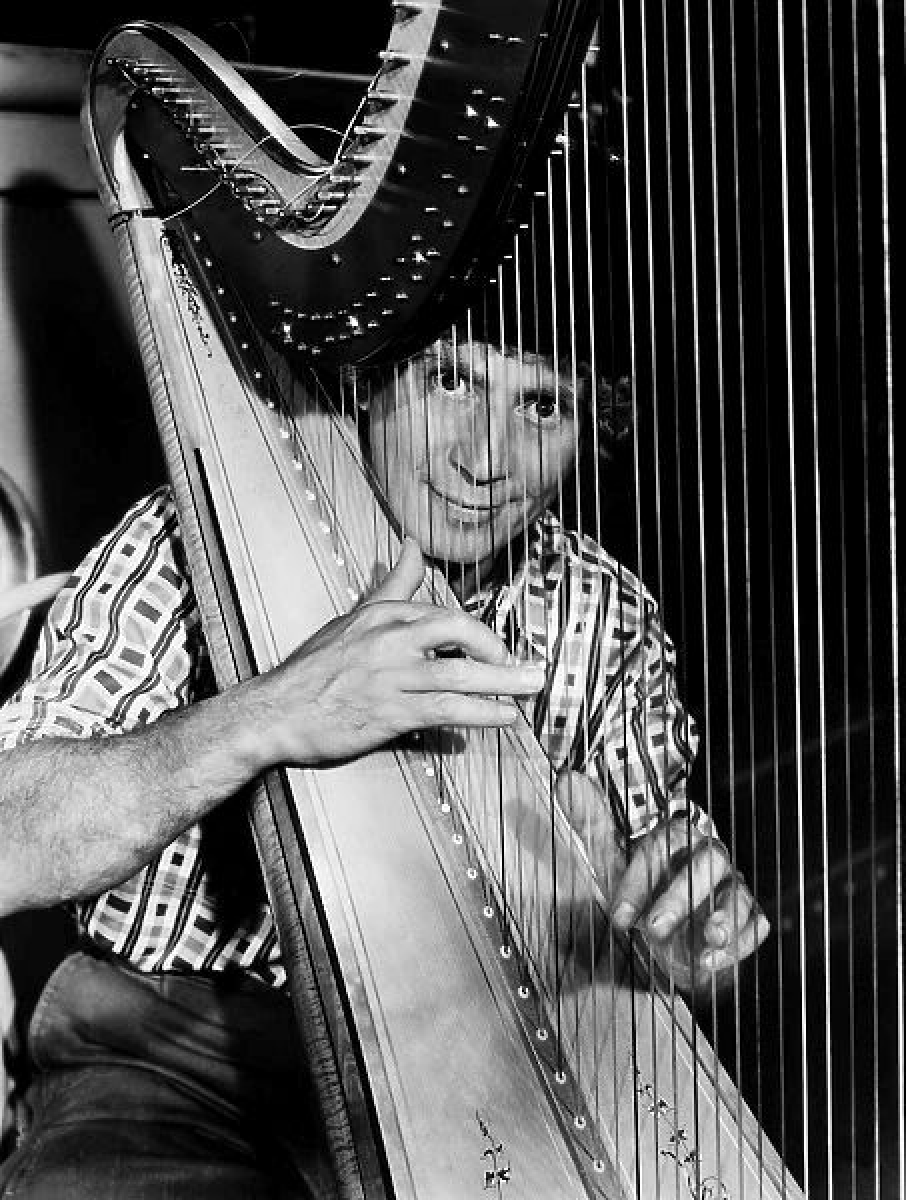 |
 |
Arthur "Harpo" Marx (born Adolph Marx) was an American comedian, actor, mime artist, and harpist. He was primarily a self-taught harpist, although he did study with Mildred Dilling, and was greatly influenced by swing harpist Gail Laughton. His trademark outfit consisted of a trench coat with over-large pockets, red wig (he switched to a blond one for every film after The Cocoanuts), top hat, and the comical horn heard in his movies.
Harpo earned an international reputation performing in over 20 films with the Marx Brothers, as well as in stage shows around the globe. He also made numerous concert appearances throughout the United States. In 1933, he was the first American to perform behind the "Iron Curtain." During World War II, he spent four years entertaining with his harp on the G.I. circuit. After the Marx Brothers completed their motion picture careers, Harpo remained in the public eye, appearing as the guest star on the television shows of Red Skelton, Lucille Ball, Donald O'Connor and Ed Sullivan. Harpo recorded three solo harp albums: Harp By Harpo (1951/2), Harpo In Hi-Fi (1957) and Harpo at Work (1959).
LINKS:
29. Harp News, Fall 1964 Harpo Marx Obit
Harpo Marx is Gone by May Hogan Cambern
AHJ, Vol. 9 No. 1, Summer 1983 Harpo Marx
On The Lighter Side: Harpo Marx by Carrol McLaughlin
AHJ, Vol. 16 No. 4, Winter 1998 - Harpo Marx
A Harpist in Spite of Himself by Alan Wheelock
2009_winter Remembering Harpo
Remembering Harpo: His Life and Legacy by Rod Calvin
The official Arthur Harpo Marx family online collection
Harpo on Wikipedia
Photos of Harpo
All Harpo Marx's Movie Harp Solos 1929-1949
(1921-2012)
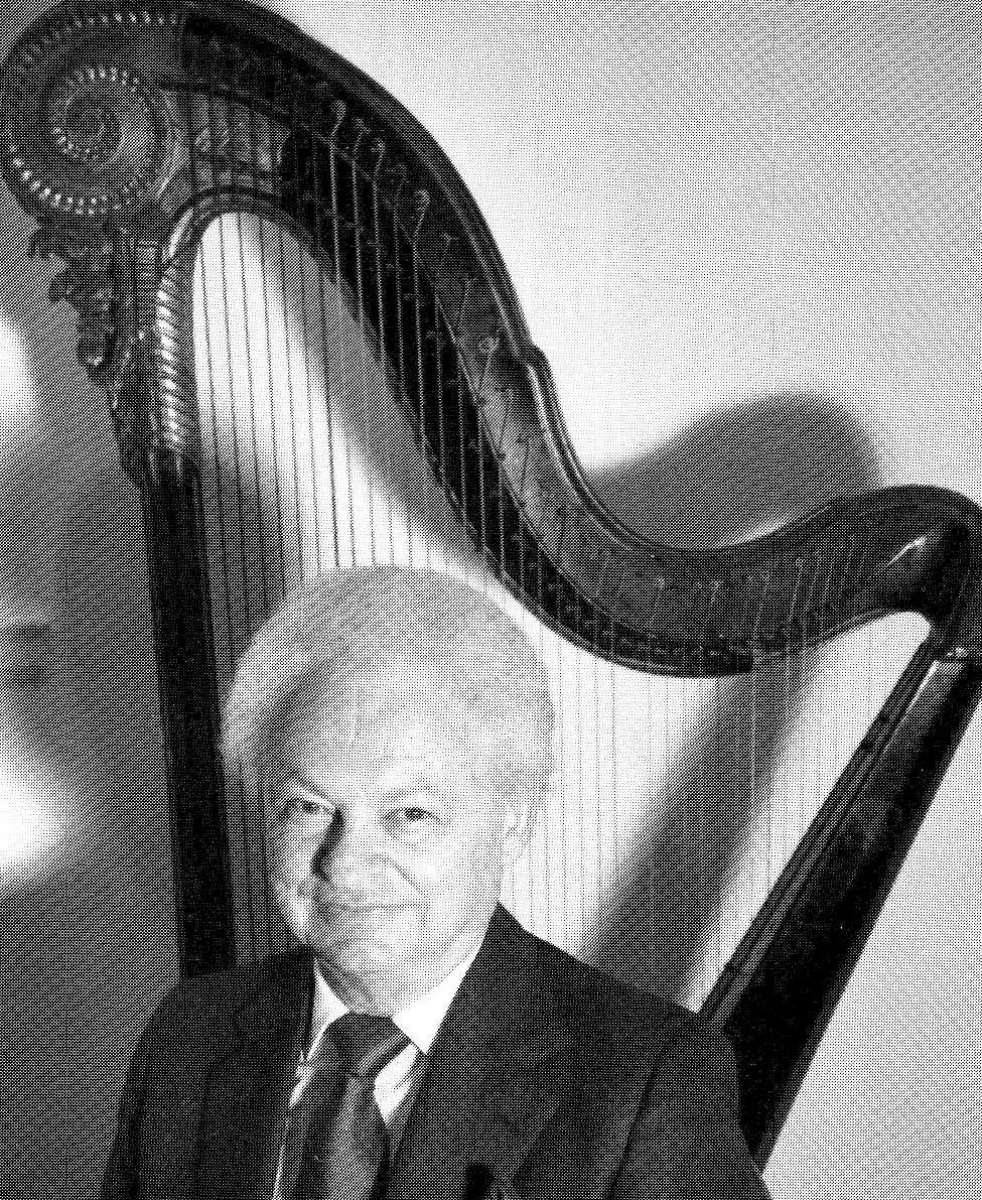 |
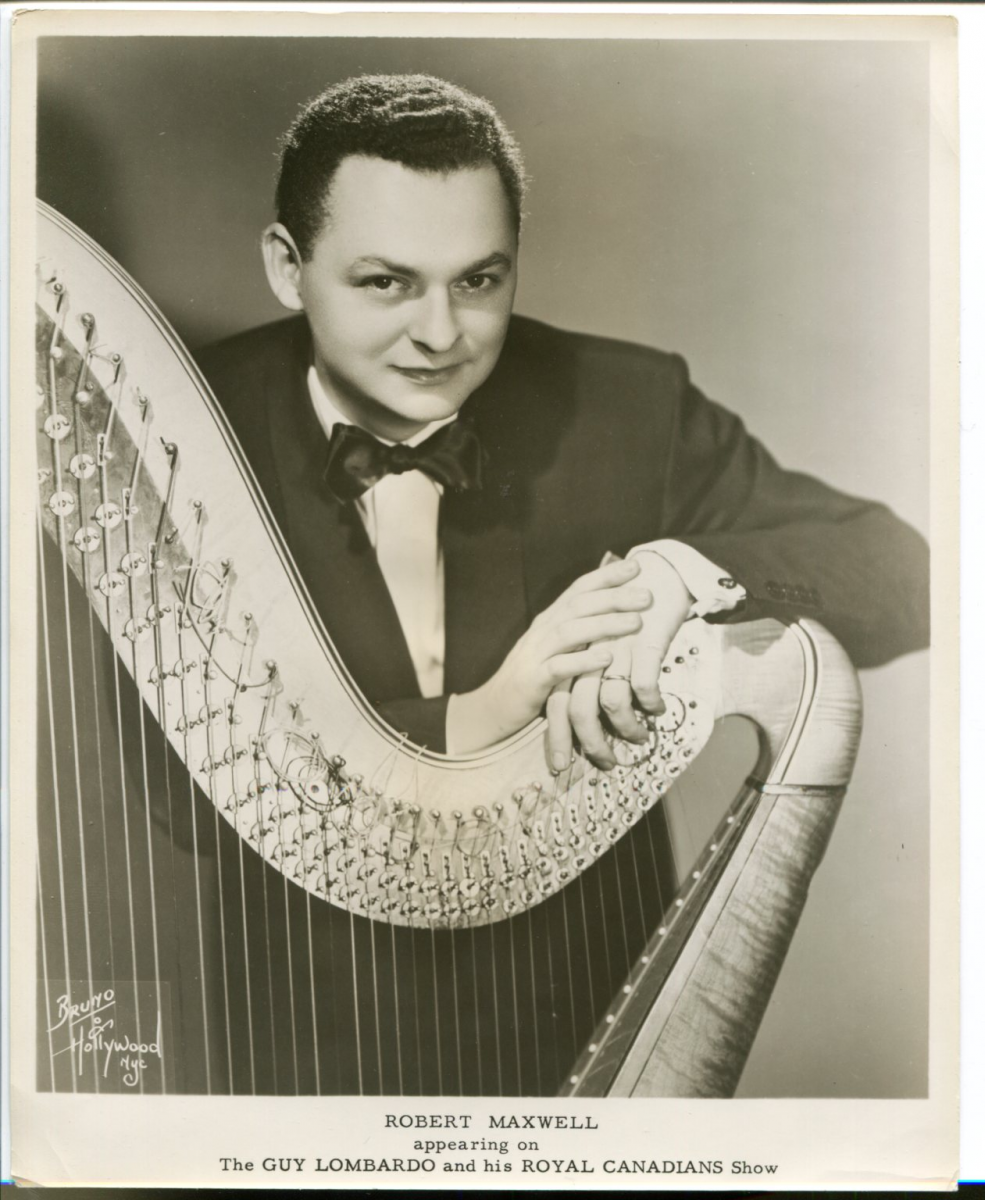 |
 |
Robert Maxwell (a stage name) was the youngest of three brothers who became harpists: Abe Rosen, Myor Rosen, and Max Rosen. The Rosen brothers received harp lessons and access to an instrument through the efforts of the Philharmonic Scholarship Committee of New York City.
Although classically-trained, Maxwell was enthralled by the possibilities of jazz improvisation and popular music. Over his career he recorded 33 albums, was a member of Matty Malneck’s band, spent World War II playing with Rudy Vallee and the 11th Naval District Coast Guard Band, and performed at fashionable supper clubs in New York, Hollywood, San Francisco, Chicago, and Las Vegas. He appeared on television shows hosted by Jackie Gleason, Milton Berle, Ed Sullivan, Steve Allen, Jack Paar and Johnny Carson.
Beyond playing the harp, Maxwell was a successful composer. He wrote tunes that landed on the Billboard Music Charts including "Ebb Tide" and "Shangri-La," as well as much more music for television and film.
LINKS:
13. Harp News, Fall 1956 Robert Maxwell
The Robert Maxwell Story by June Hunzinger
AHJ, Vol. 10 No. 4, Winter 1986-Robert Maxwell
(REPRINTED: 2020 summer-Robert Maxwell)
Robert Maxwell: A Profile by June Reig
AHJ, Vol. 18 No. 4, Winter 2002 - Robert Maxwell
Robert Maxwell: A Life in Music by Phillip D. Atteberry
2012_winter - Robert Maxwell Obit
In Memoriam: Robert Maxwell 1921-2012 by Sam Milligan
AHS Founding Board Member, Robert Maxwell
Robert Maxwell's Wikipedia Page
Time - Music: Swinging the Harp, Monday, Sept. 10, 1951
Robert Maxwell's Obituary on Harp Column
Robert Maxwell Performing "Ebb Tide" (1953)
Robert Maxwell Playing (1950))
Robert Maxwell Recordings in the Great 78 Project
Summer 2020 Extras - Robert Maxwell & Myor Rosen Playlist
YouTube Topic: Robert Maxwell
(1952-2018)
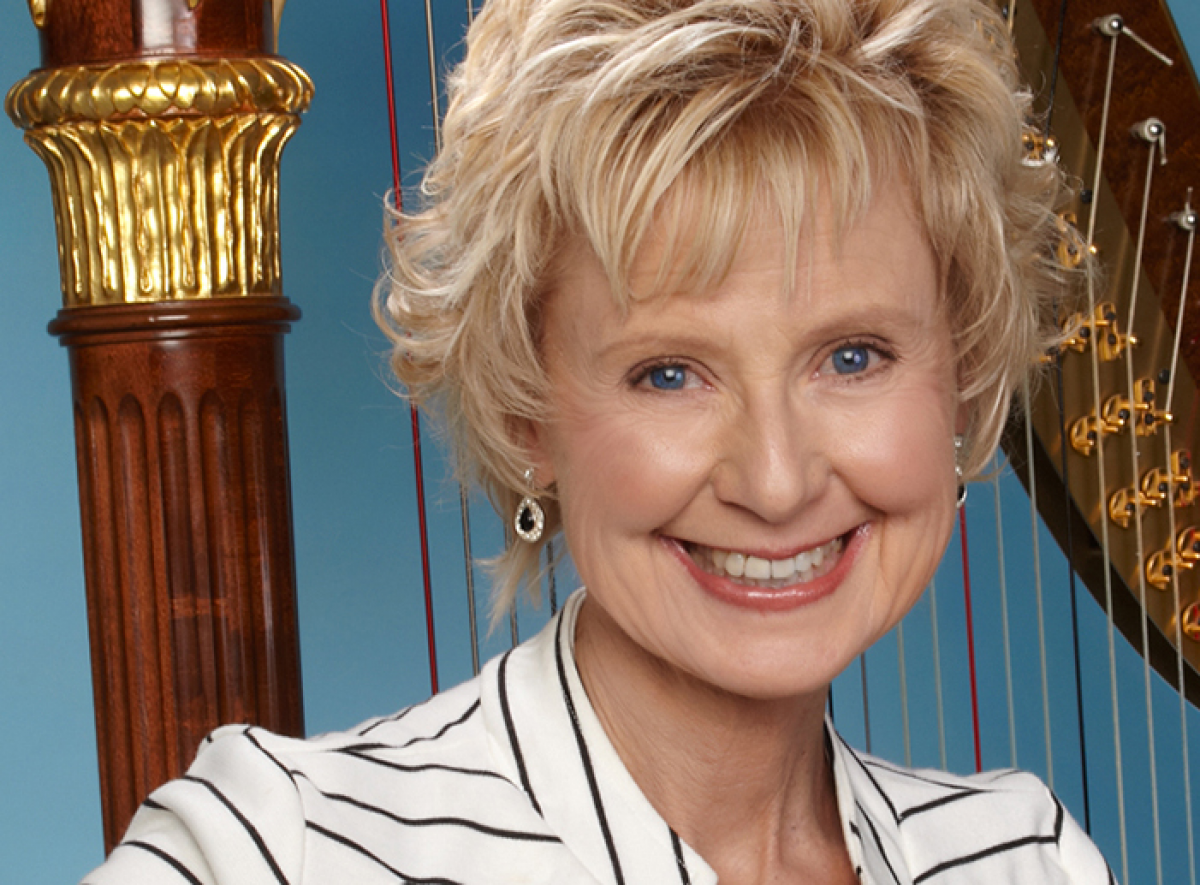 |
 |
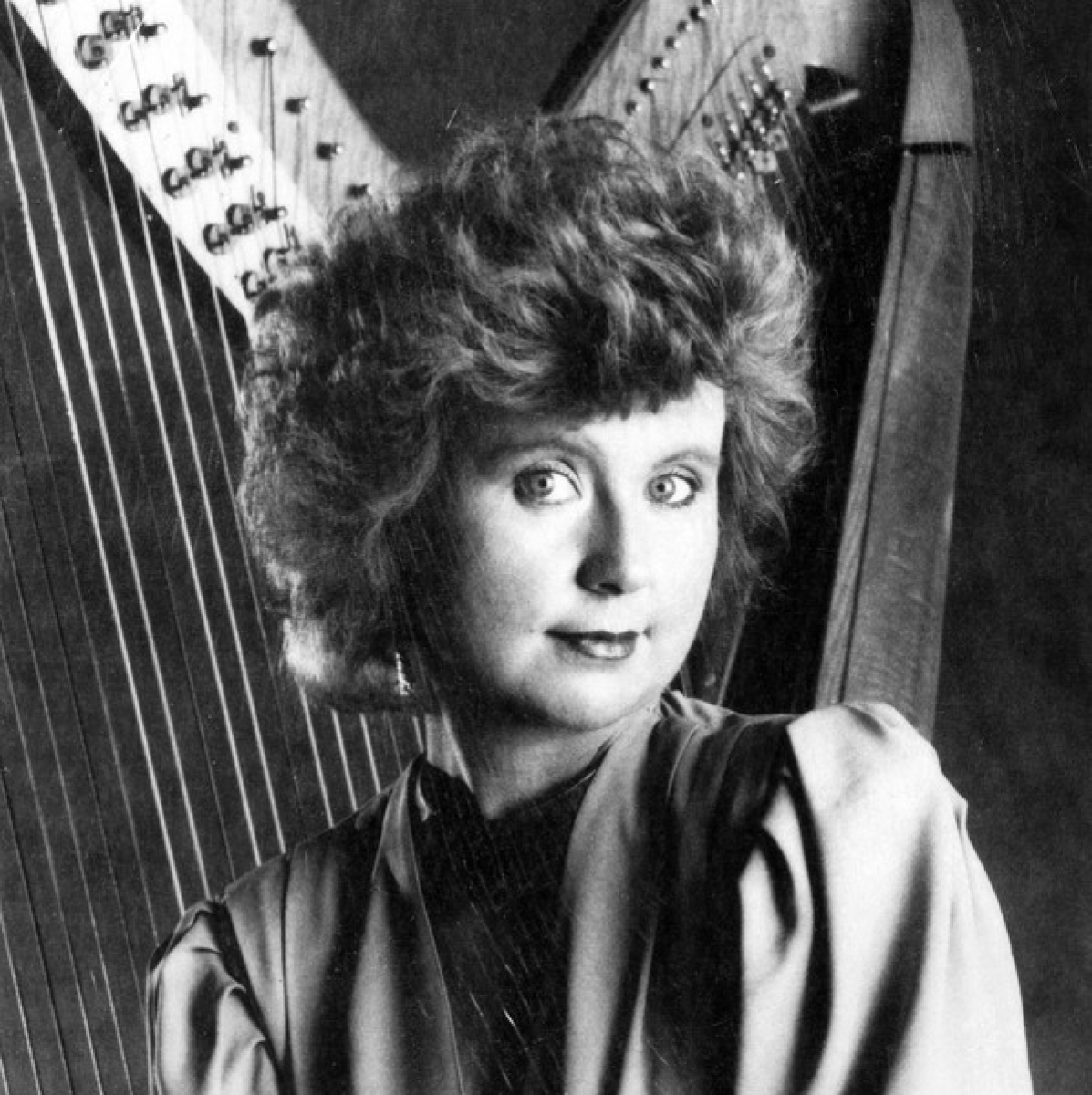 |
Born in Grande Prairie, Alberta, Canada Carrol McLaughlin began playing the harp at age six. By age 14 she was principal harpist with the Calgary Philharmonic. Carrol studied at the Juilliard School with Susann McDonald, obtaining an MM in Harp Performance. Also during that time, she won the Salvi Jazz Harp Competition with her arrangement of “Cantina Band Song” from Star Wars. Carrol went on to earn her DMA with Susann McDonald at the University of Arizona, and then moved to London and studied with the famed Russian harpist Maria Korchinska. She later settled in Los Angeles, working in the studios.
For eleven years, she served as the jazz editor to The American Harp Journal, where she started the "On the Lighter Side" article series. One of her interviews for the Journal was with Bill Marx, son of Harpo Marx. Bill asked Carrol to transcribe some of his father’s compositions, as Harpo didn’t read music. Eventually Carrol and Bill made a CD together entitled From Harpo With Love, and toured with Columbia Artists Management.
Carrol became Professor of Harp at the University of Arizona where she taught for 30 years. She established HarpFusion, the world’s largest touring harp ensemble at that time. She performed around the world as a solo artist, and performed extensively as a concerto soloist with orchestras throughout the U.S., Japan, Russia, Canada and South America. A prolific composer and author, Carrol published books and music, and recorded numerous solo and collaborative CD’s.
LINKS:
2018_summer - Carrol McLaughlin
In Memoriam: Carrol Mae McLaughlin 1952-2018 by Dr. Cathryn Calyton and Kelly Mae Harris
Dr. Carrol McLaughlin plays Harpo Marx's Music
Carrol McLaughlin playing the harp. (and speaking)
Carrol McLaughlin – Jazz Harp
(1911-1983)
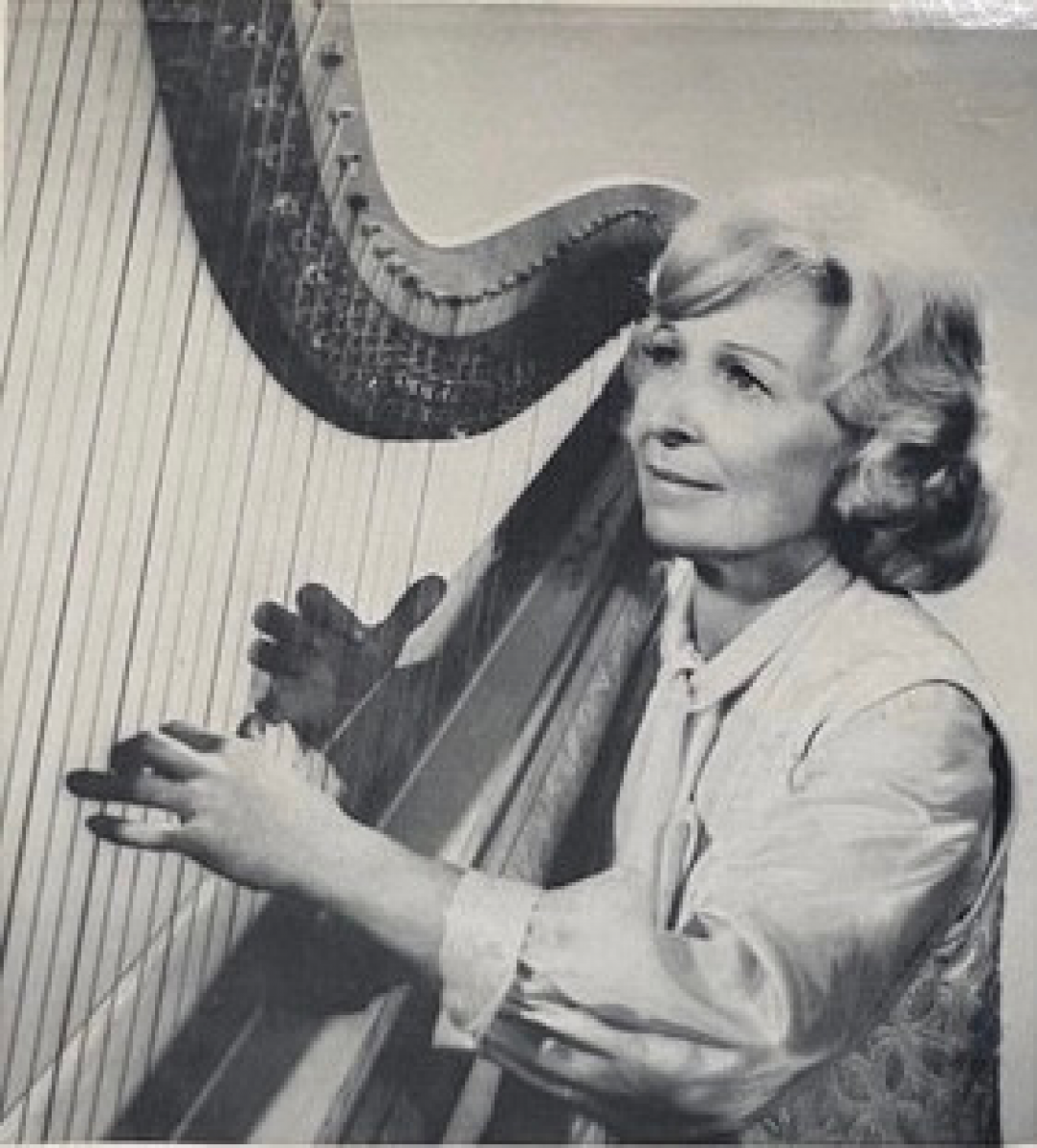 |
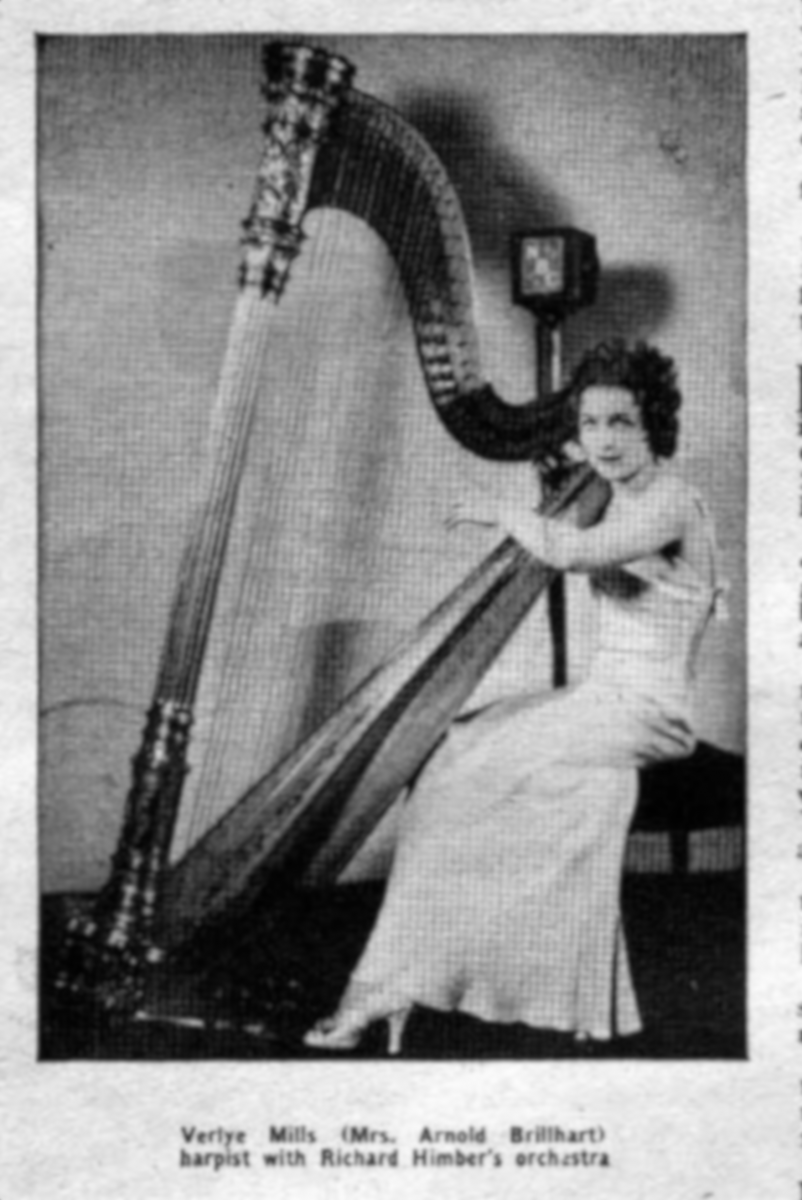 |
Verlye Mills was one of of the top studio harpists in Los Angeles, with exceptional rhythm harp, improvisation and arranging skills. In the 1930s, in addition to being harpist with the Cleveland Orchestra, she had her own dance band, "Verlye Mills and Her Boyfriends." She later became solo harpist in Fred Waring's famous band in New York, where she was the only woman in his seventy-piece ensemble. Verlye was one of the main musicians in many "5-a week" radio and television shows which aired live five days each week, often using only organ and harp, or harp and percussion, or harp alone. At one point, Verlye was appearing on four different radio programs in New York, as well as playing solos with radio and television orchestras. In the 1950's, Verlye Mills moved to the Los Angeles area. For eleven years she played regularly for the "Carol Burnett Show."
Verlye Mills wrote three books: New Harmony For Harp, co-authored with Harry Zimmerman, Rhythm For Harp, co-authored with Stella Castellucci, and Harp With A Beat, as well as recording several solo albums.
LINKS:
10. Harp News, Spring 1955 - Verlye Mills
Modern Harp Playing by Verlye Mills
AHJ, Vol. 8 No. 1, Summer 1981 - Verlye Mills
(REPRINTED: 2020 summer-On The Lighter Side Mills Ashby Escosa Fell McLaughlin)
On The Lighter Side: Verlye Mills by Carrol McLaughlin
AHJ, Vol. 9 No. 3, Summer 1984-Verlye Mills Obit
In Memoriam: Verlye Mills Brilhart by Toni Robinson-Bogart
Article: Brilhart, Verlye Mills (16th December 1911-2nd October 1983)
Verlye Mills on Sound Cloud - 10 tracks, from Magic Harp and Harp with a Beat
Verlye Mills - 01 - Bem Te Vi Atravido - from The Magic Harp of Verlye Mills (1956 mono reel)
(1924-1996)
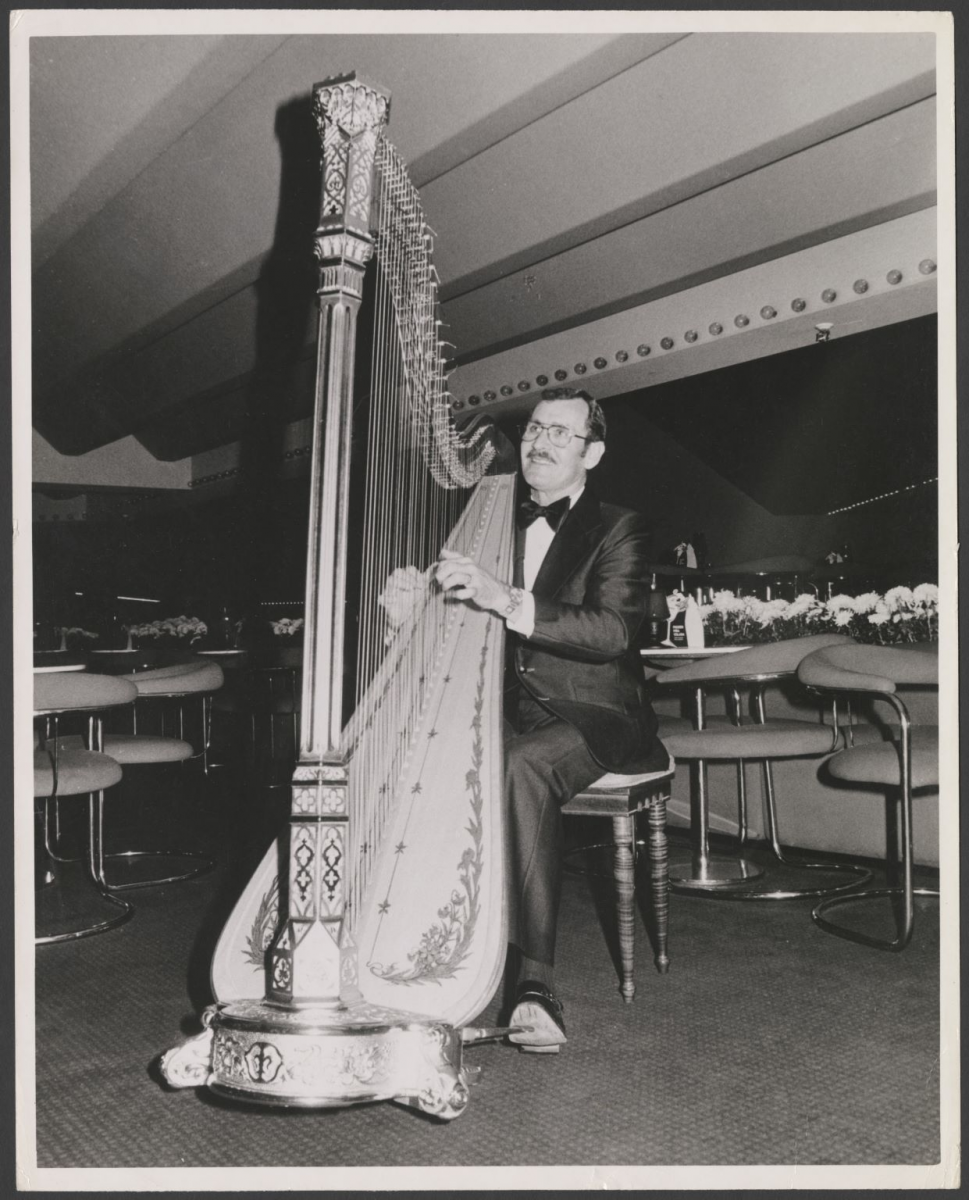 |
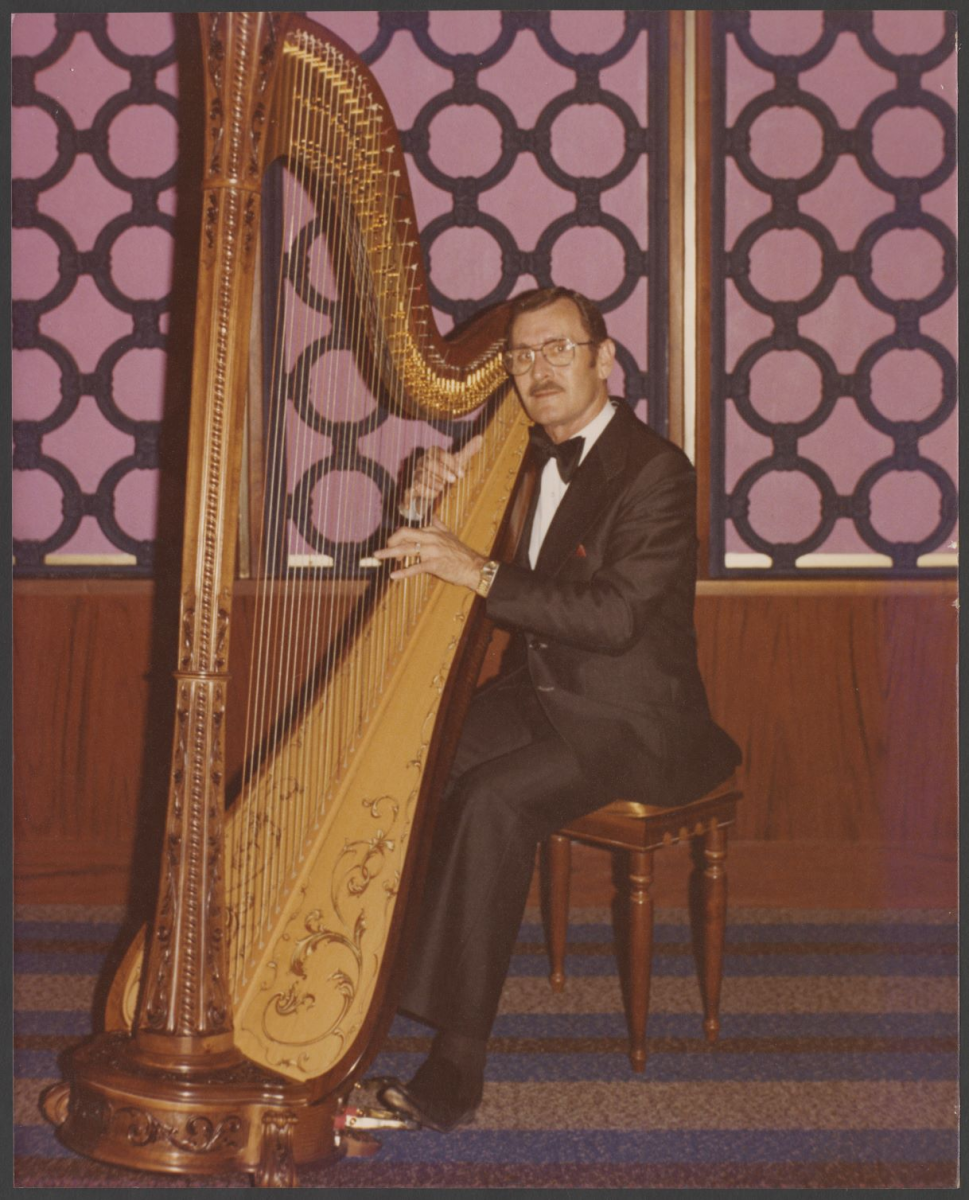 |
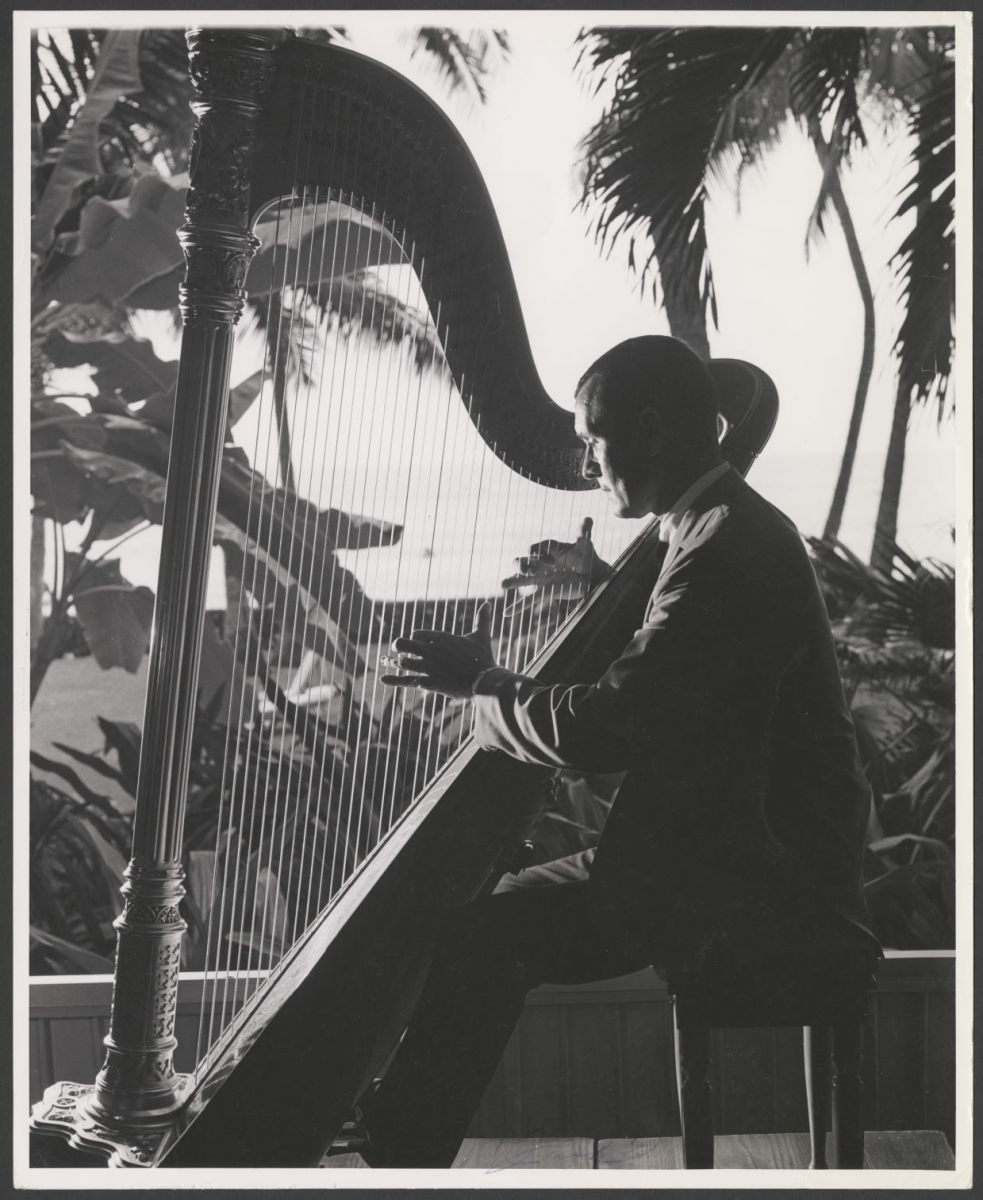 |
 |
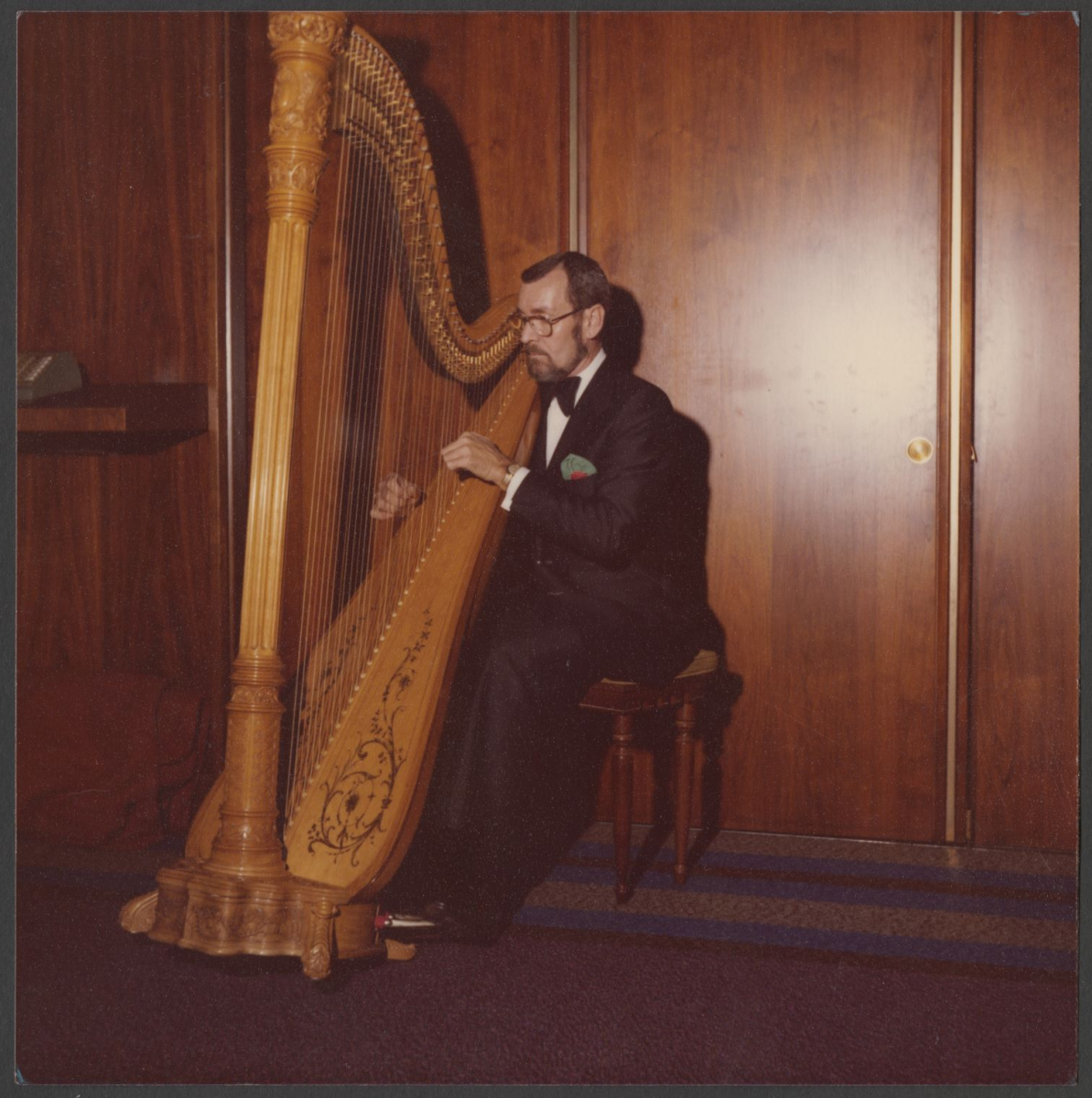 |
|
Jack Nebergall was widely respected for his unique ballad style which was rich with complex jazz chords and an impeccable elegance. He had an extensive career as a pop and jazz harpist, including serving as staff harpist for CBS Radio and performing with numerous dance bands, accompanying such soloists as Nat "King" Cole and Ethel Merman. For many years, Jack performed with Danny Yale and the Regency Strings, playing both at their "home base," the Hyatt Regency Embarcadero, San Francisco, and at summer harp festivals when Jack flew the group in to give workshops. Jack was teacher and performer at many summer pop and jazz harp festivals.
LINK:
AHJ, Vol. 9 No. 2, Winter 1983
On The Lighter Side Jack Nebergall
AHJ, Vol. 15 No. 4, Winter 1996 - Nebergall Obit
In Memoriam: Jack Nebergall (1924-1996)
AHJ, Vol. 19 No. 3, Summer 2004 - Nebergall Stylings
(Reprinted: 2020 Summer-Jack Nebergall)
The Jazz Stylings of Jack Nebergall Through the Eyes and Ears of a Non-Harpist by Glenn Griffith
AHJ, Vol. 19 No. 3, Summer 2004 – Jack Nebergall
Jack Nebergall by Alexandra Perdew and Wenonah Govea
Jack Nebergall plays Summertime
(1907-1941)
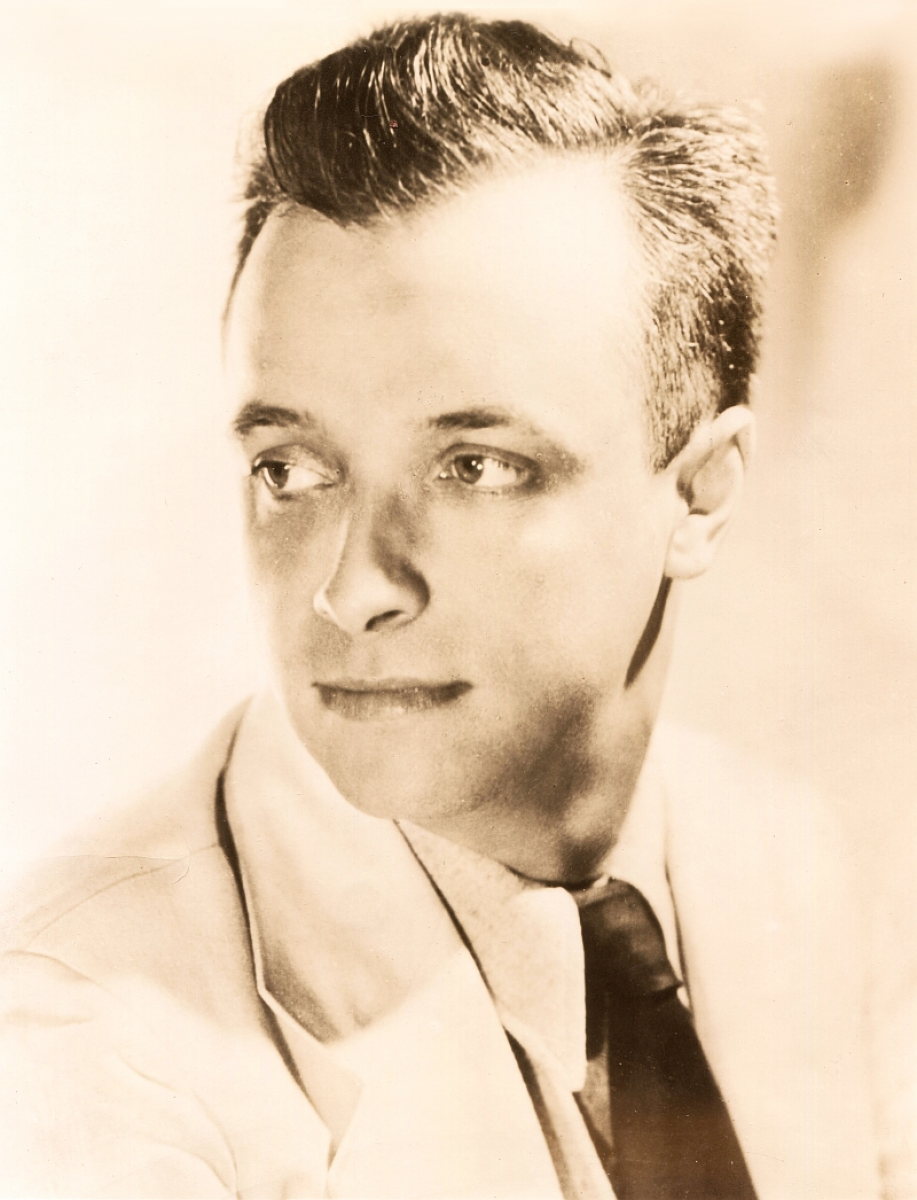 |
 |
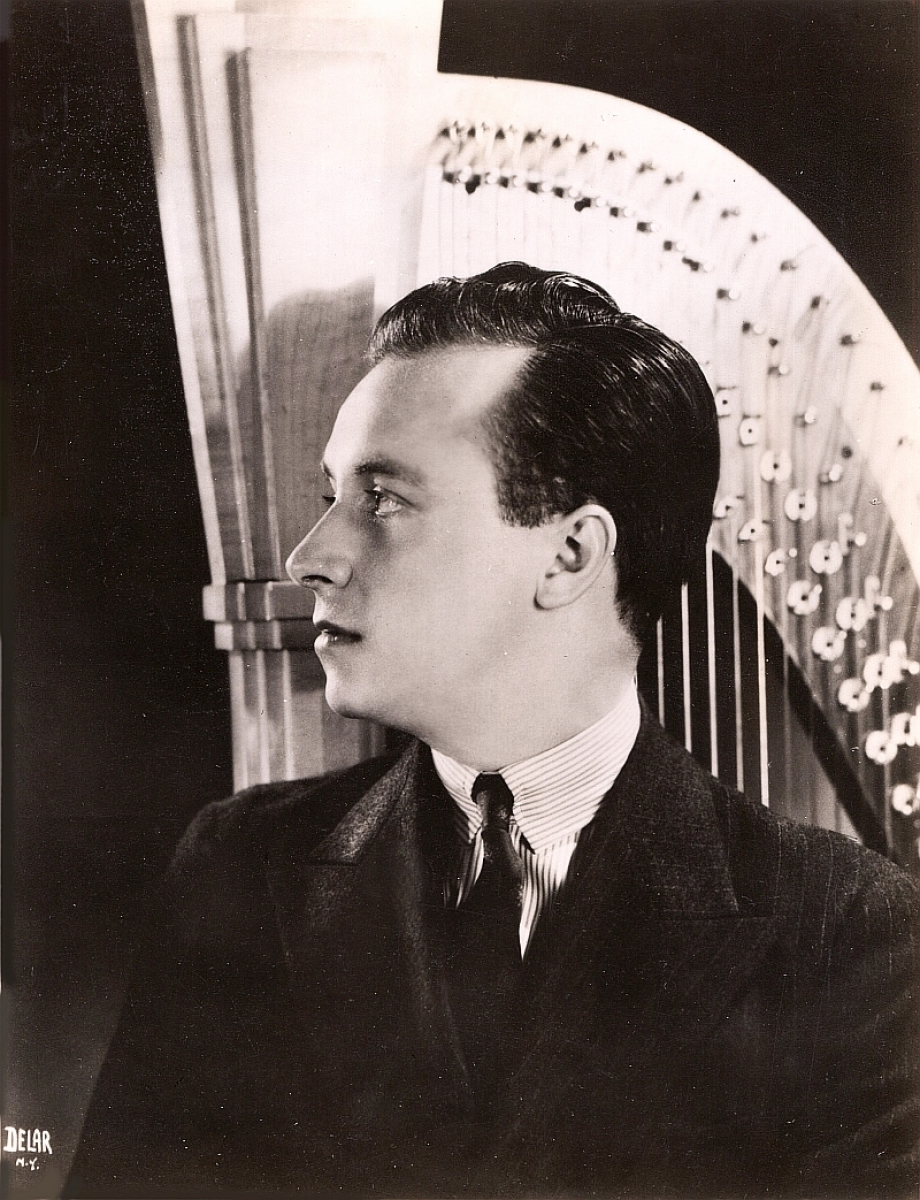 |
Casper Reardon studied harp with Carlos Salzedo at the Curtis Institute of Music. A well-accomplished classical harpist, he played with the Philadelphia Orchestra and served as principal harpist of the Cincinnati Symphony for several years. While in this post, Reardon taught harp at the Cincinnati Conservatory. Reardon gave several faculty recitals at the conservatory, including works by Fauré, Tournier, Caplet, Debussy, transcriptions (by Salzedo) of Couperin, Corelli, and Haydn, as well as Salzedo’s Sonata for harp and piano (with the conservatory’s piano faculty member and acclaimed performer Karin Dayas).
Introduced to jazz by his harp students at the conservatory, Reardon began to explore this genre on the harp. He performed on George Gershwin’s Feen-a-mint radio show, and appeared frequently as part of Bunny Berigan’s orchestra (including on the popular “Saturday Night Swing Club” radio show) as well as part of Paul Whiteman’s orchestra. His jazz harp solos can be heard on many recordings, most famously on Jack Teagarden’s recording of “Junk Man”. Reardon also recorded music intended for dance class rehearsals, most of this as a pianist.
At one point, Reardon asked composer, arranger, and lyricist Dana Suesse to write something for him; this resulted in a three-movement suite Young Man With A Harp for harp, piano, and percussion that was performed many times, including for then-president Franklin D. Roosevelt.
Casper Reardon passed away at the early age of 33 after a brief but acute illness. Despite the short length of his life, he was able to enjoy high success in his career as both a classical and a jazz harpist.
LINKS:
4. Harp News, Spring 1952 - Casper Reardon
REPRINTED (Different Photos) AHJ, Vol. 4 No. 4, Winter 1974 - Casper Reardon
REPRINTED 2020 summer Casper Reardon (Same photos from AHJ above)
Casper Reardon (no author listed)
AHJ, Vol. 12 No. 4, Winter 1990 Casper Reardon
Casper Reardon: A Retrospective Portrait by Elizabeth Reardon Deveau, with Remembrances by Reinhardt Elster and Margaret Slaff
2024 Winter Casper Reardon Discography
Casper Reardon: A Comprehensive Discography by Peter Mintun and Emily Laurance
Casper Reardon's Biography on From the Vaults
Summer 2020 Extras Playlist - Casper Reardon
Film clip from the 1937 film You're A Sweetheart, showing Casper performing "Ain't Misbehavin'" and "St. Louis Blues".
A biography is included in the notes.
Link to Casper Reardon recordings on Great 78 Project
(1923-2019)

Texas harpist Louise Trotter (1923–2019) was a versatile harpist, composer and arranger. Starting piano at age 6 and harp at age 12, she went on to study harp at Texas Women's University. While her husband, an Army lieutenant, was overseas, Louise went to study with Mildred Dilling in New York. Miss Dilling helped her get an agent, who sent her to play at places two or three times a week, which required her to start learning pop tunes. Since there were so few pop pieces available for harp, she started to adapt piano arrangements for the harp. After her husband returned home, she returned to Texas and made her family a priority.
In the 1970s, Louise returned to the harp as a career, performing in Houston's finest hotels, restaurants and country clubs, and was a regular at harp events. Her arranging workshops focused on techniques to improvise and play with fake books. She is known for her pop, jazz and American folk music arrangements for both the lever and pedal harp, and has published a large catalog of music, as well as recording several CDs
LINK:
19. Harp News, Fall 1959 Commercial Work by Louise Trotter
How to Get into Commercial Harp Work by Louise Trotter
2020_winter Louise Trotter
In Memoriam: Louise Trotter 1923-2019 by Tracy Thornton
Podomatic interview with Louise Trotter
(1915-1986)
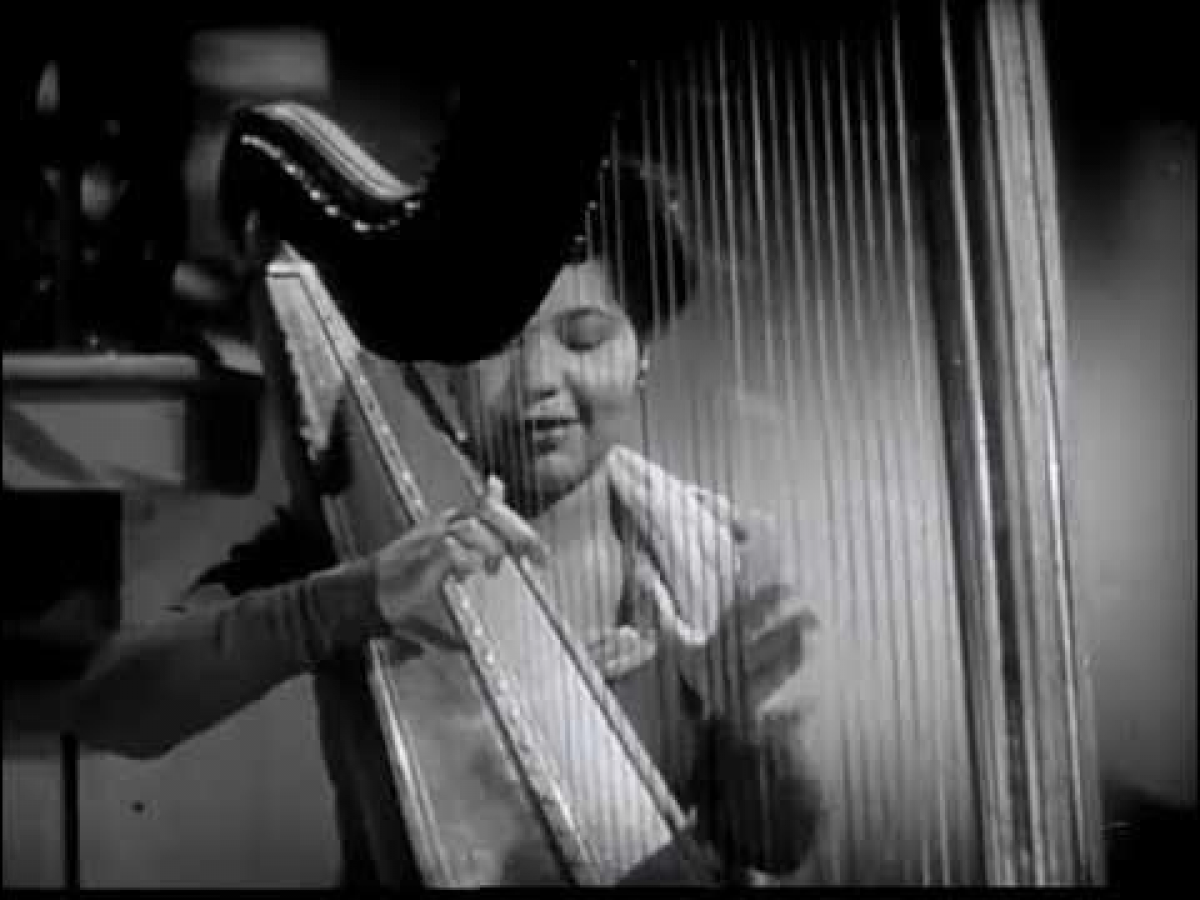 |
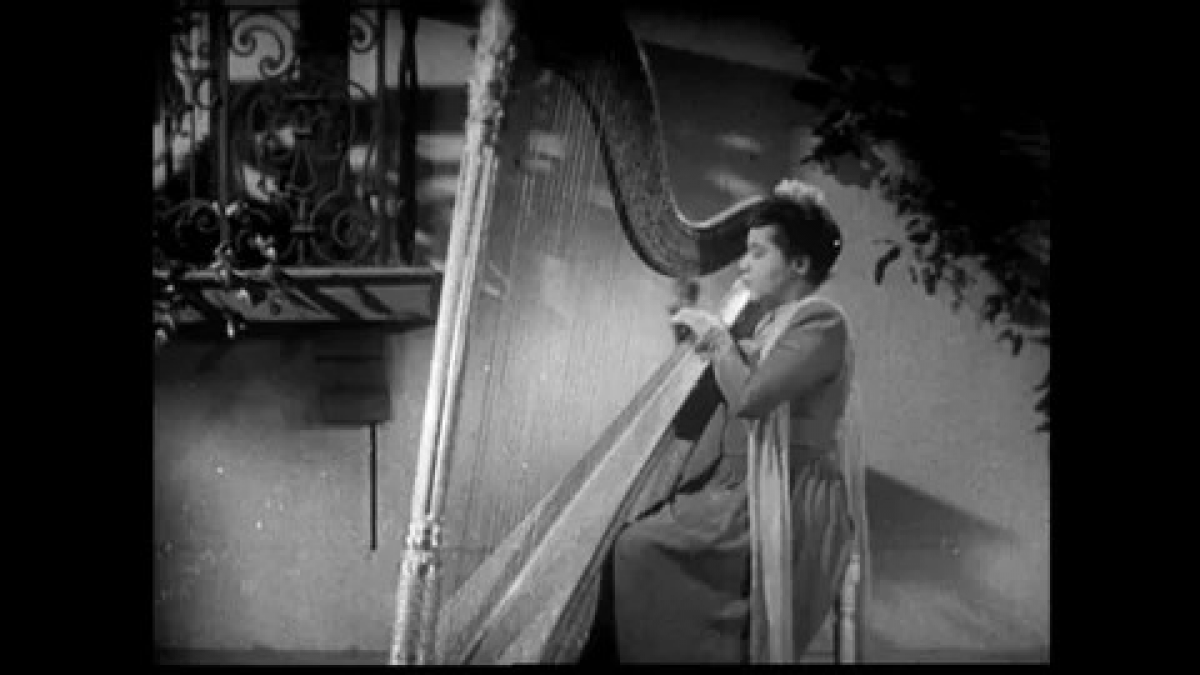 |
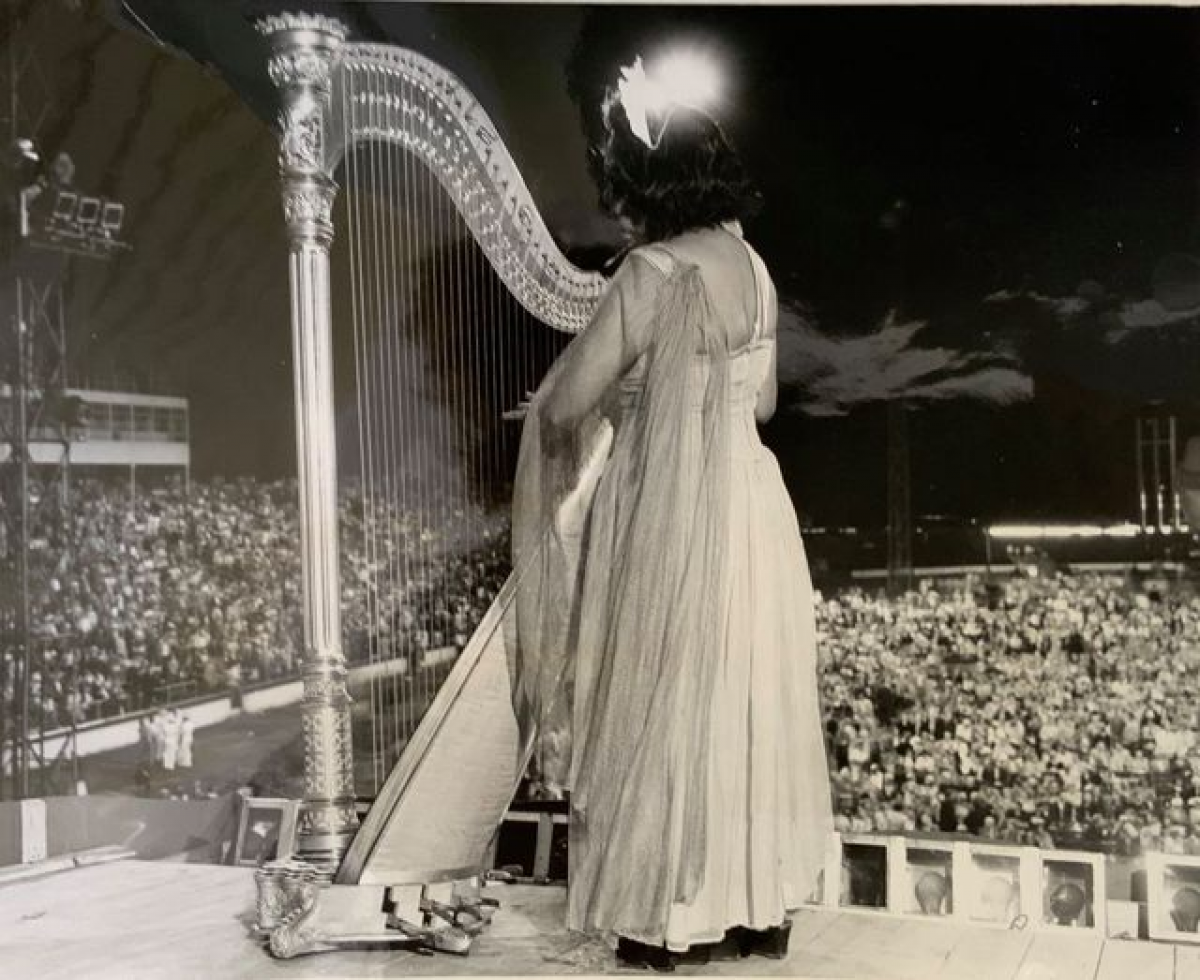 |
LaVilla Tullos was an organist, pianist and harpist. Born in Detroit, she attended Cass Technical High School and the University of Michigan. She performed with the Windsor Symphony and the Detroit Symphony Orchestras, and performed on radio and television.
In the 1940’s LaVilla was a member Earl Hines’s "draft-proof" 12-piece all-women group, which was sometimes enfolded into his regular all male jazz band. She toured coast-to-coast with them in 1943-1944.
LaVilla appears in a Soundie from 1944, titled “Swanee Swing,” a jazz version of Stephen Foster’s “Old Folks At Home.” Soundies were the precursors to music videos that were made between 1940-1946, which originally viewed on coin-operated “Panorams” which were typically found in nightclubs, bars, and restaurants.
LINK:
Swanee Swing – La Villa Tullos
LaVilla Tullos on Celluloid Improvisations
(1901-1990)
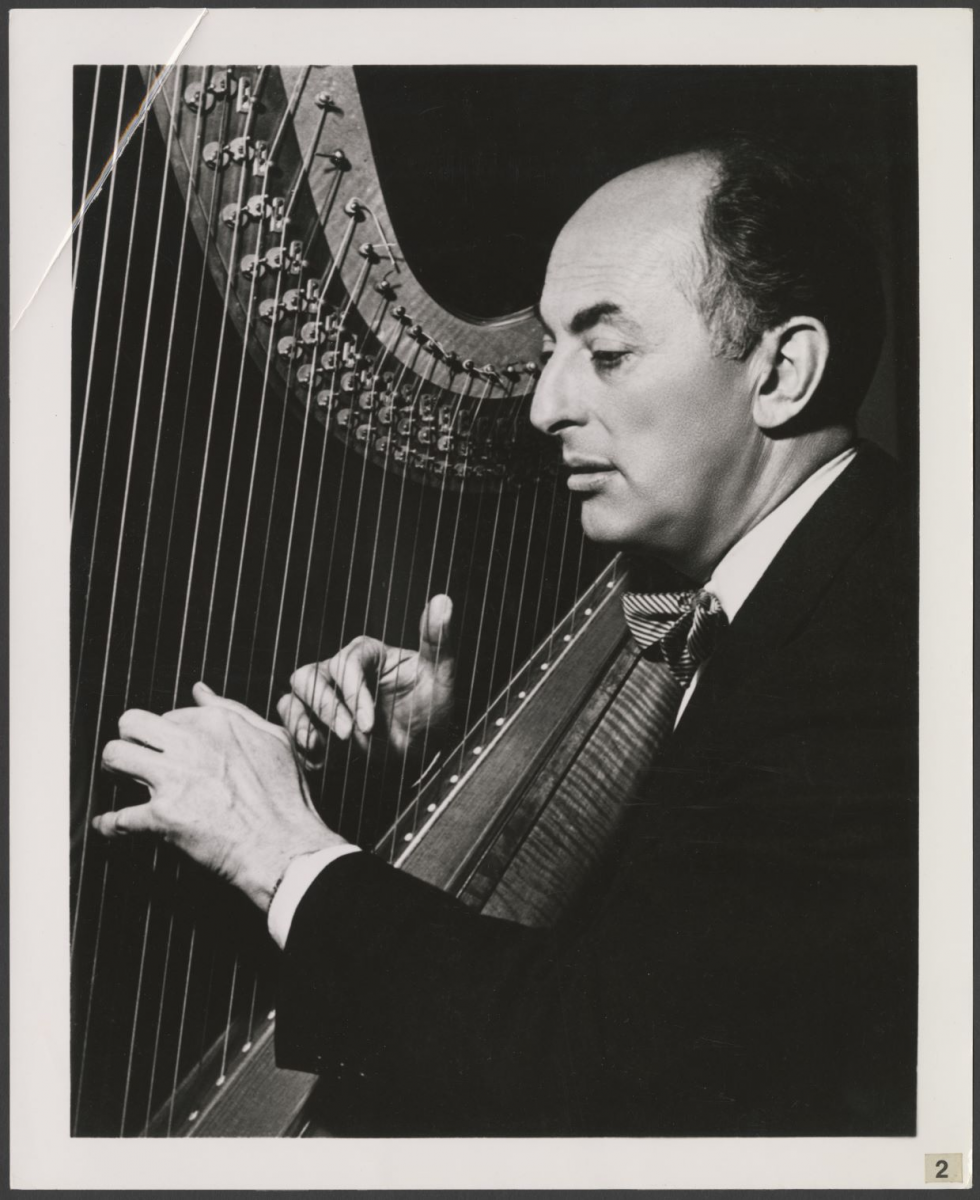 |
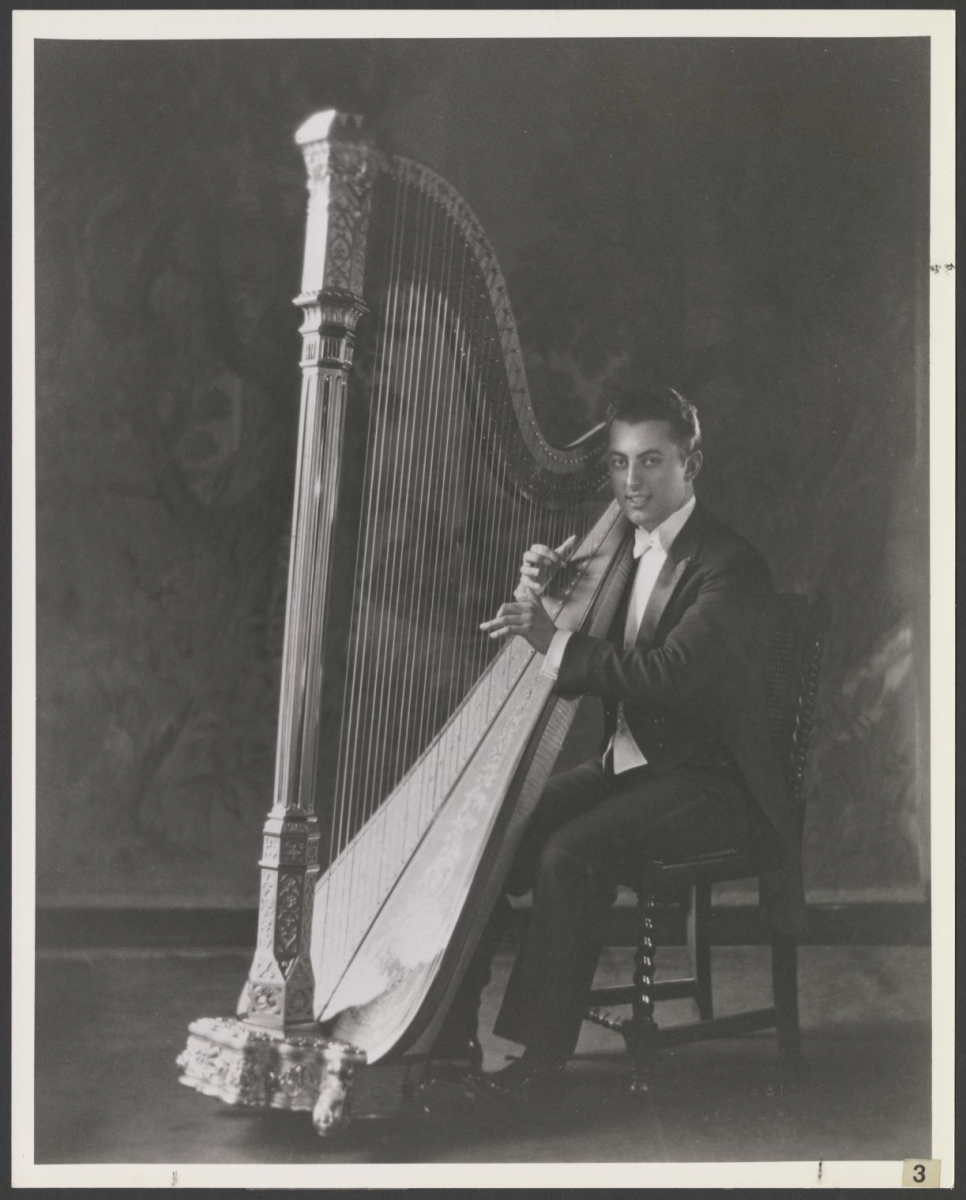 |
Edward Vito (1901-1990) was an American harpist, composer, and conductor. His brother, Joseph, was also a harpist, with whom he would sometimes play as a duo. His daughters, Annette Vito and Elaine Vito Ricci, were also harpists.
At the age of fifteen, Edward was a full-fledged member of the Cincinnati Symphony Orchestra. In 1928, while harpist with the Cleveland Symphony Orchestra, he joined the staff orchestra of the NBC Studios in Chicago as a performer and arranger. He had a flair for arranging harp parts for small orchestras featuring harp. As the premier harpist on the NBC staff he had first refusal of any commercial job in Chicago. While performing in Chicago with a full symphony orchestra on the NBC Carnation Contented Program, Edward was invited by the show's director, radio trailblazer Frank Black, who was also the director of music at NBC and originator of Sound Studies in New York, to join the "Toscanini Symphony." He agreed, and moved to Connecticut to play with the NBC Symphony under Arturo Toscanini. Edward performed with the NBC Symphony for 15 years, and is the harpist on all of Toscanini's records with the NBC Symphony.
Edward left a recorded legacy of over 20 solo harp albums, and may be heard improvising harp parts on the legendary jazz album, Charlie Parker with Strings.
LINKS:
AHJ, Vol. 11 No. 2, Winter 1987 Edward Vito
Edward Vito by Mary Brigid Roman
Edward Vito Question & Answer Biography on St. Francis Music
Edward Vito Profile and Discography on Discogs
Edward Vito improvises on the album Charlie Parker with Strings
Moon Love (Edward Vito, 1942)
Edward Vita plays "Deep Purple"
Norman Dello Joio: Harp Concerto (Edward Vito, 1947)
Edward Vito, Joseph Vito – Dual Harp (1952) - Harp Jazz
Edward Vito, YouTube Topic
(b. 1953)
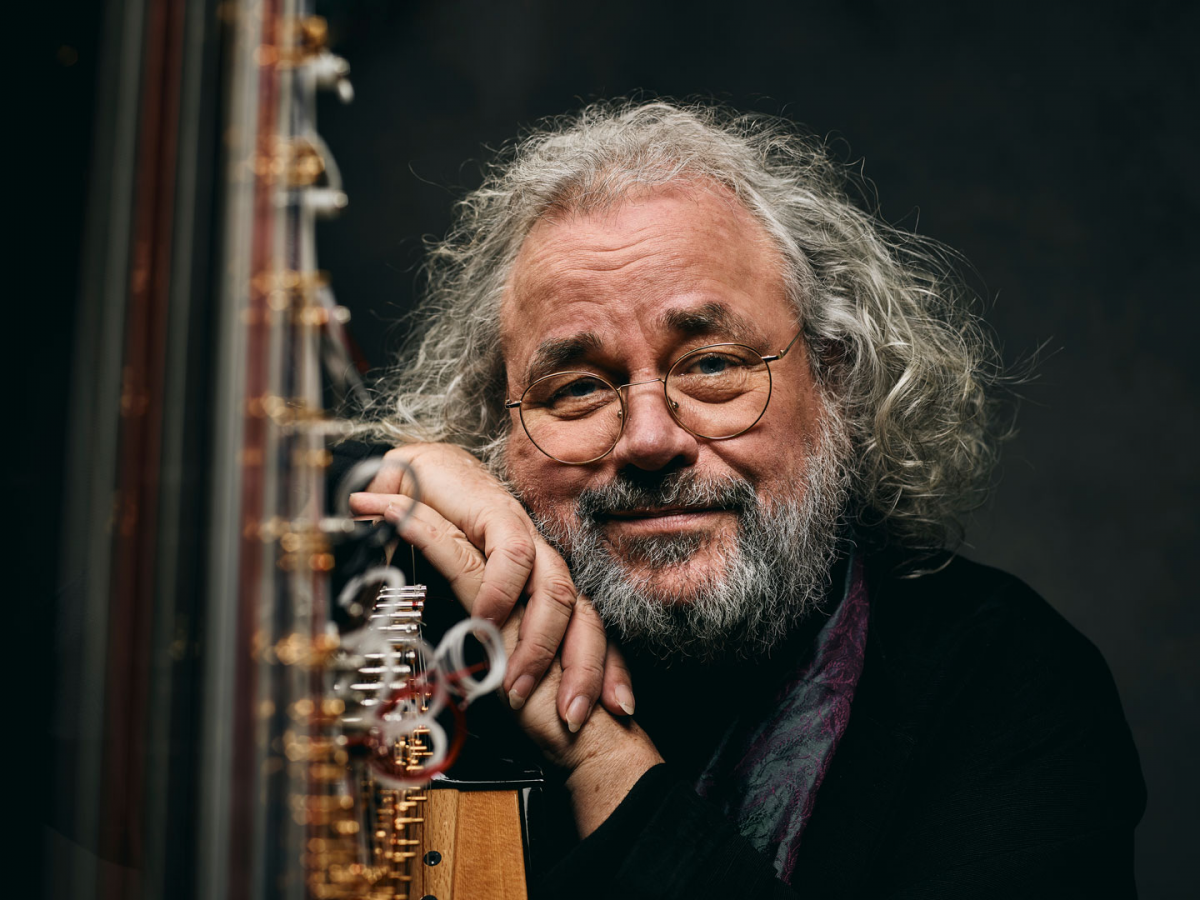 |
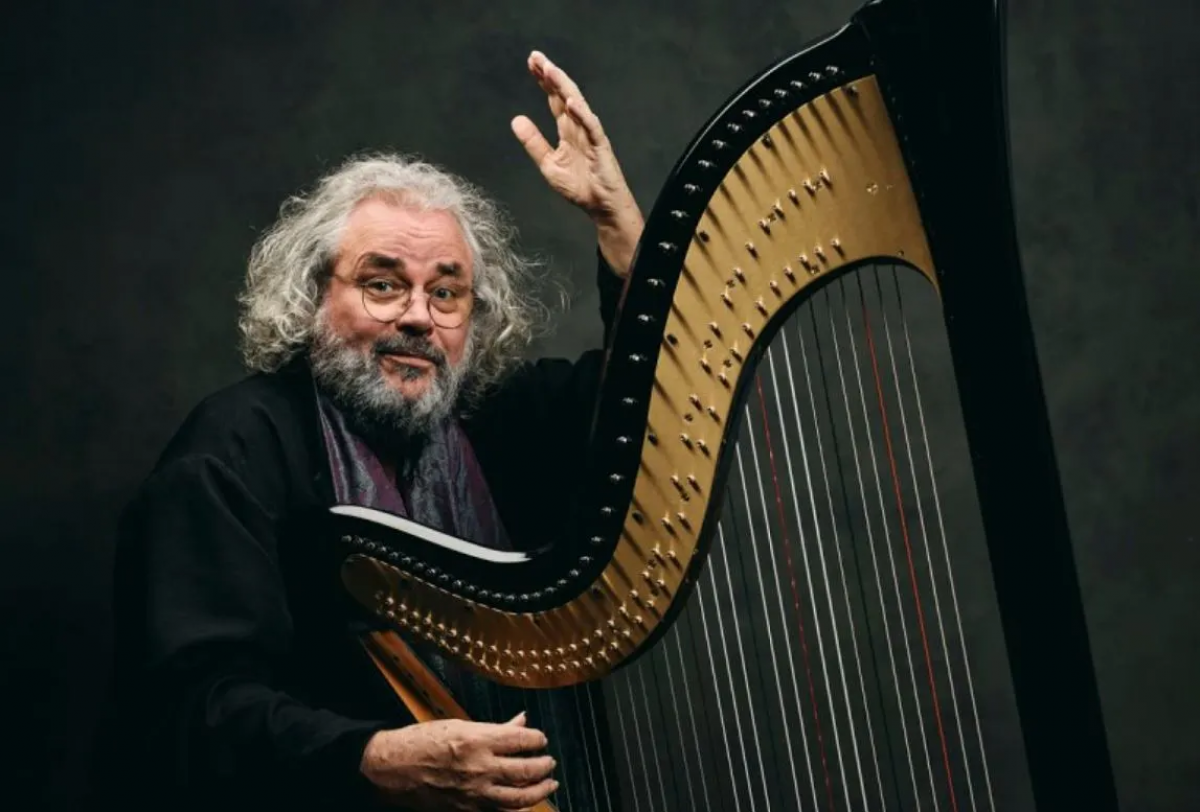 |
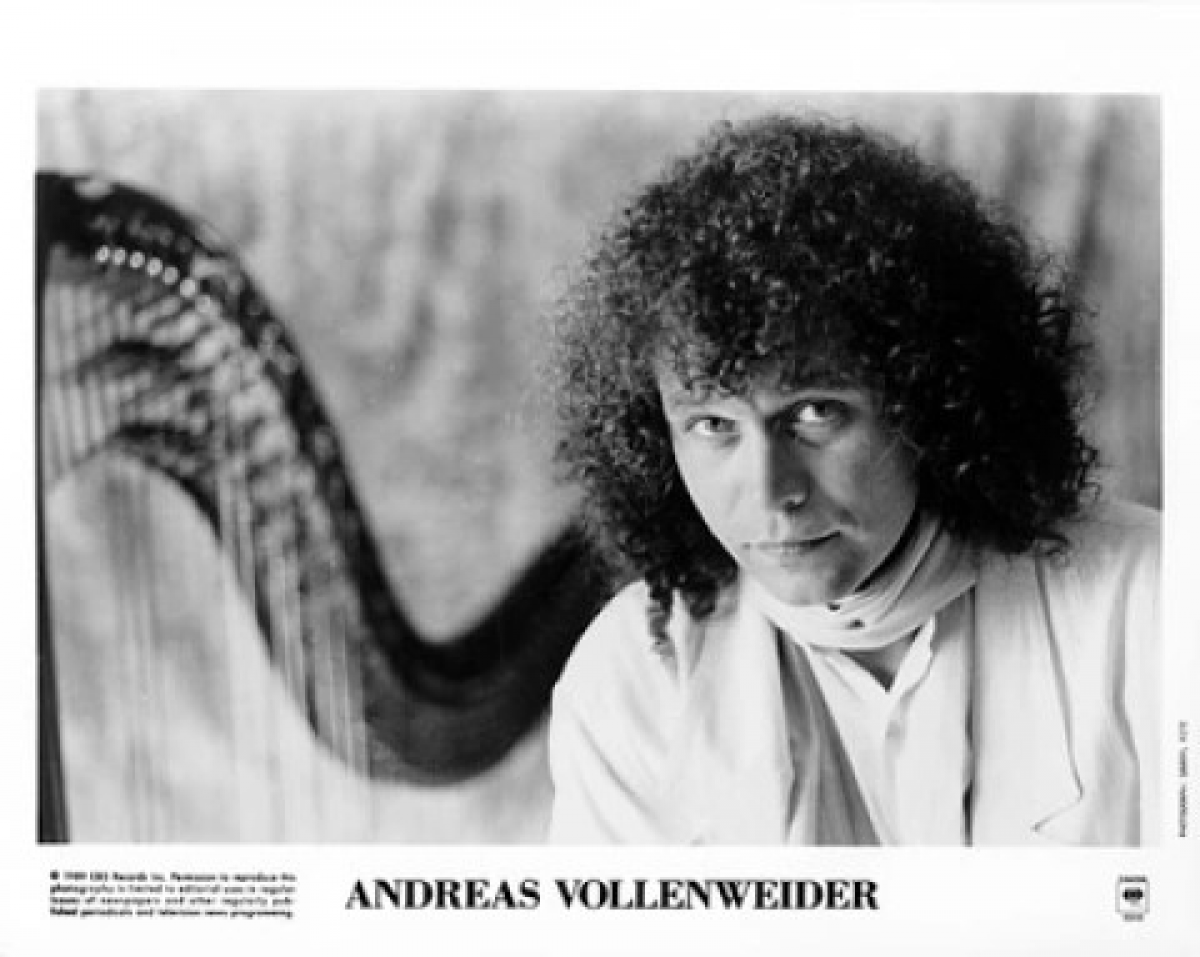 |
Andreas Vollenweider was born in 1953 in Zurich, Switzerland. A self-taught multi-instrumentalist, he discovered the harp in 1975. He developed his own playing technique, and wanting to expand the traditional harp to accommodate his musical ideas, he created the electro-acoustic harp. His dynamic and colorful music has been categorized as World Music, Jazz, New Age or even Classical. For many weeks, two of his albums were number 1 on the Billboard charts categories Classical, Jazz, Pop and Crossover simultaneously. Also a composer, Vollenweider has composed for film, theater, ballet and TV productions.
Performing with synthesizers, percussion, and orchestral instruments, Vollenweider broke into the mainstream in the mid-1980s. His album, Down to the Moon (1986) won a Grammy for Best New Age Album. He has continued to release albums and tour extensively worldwide, while exploring many approaches to his music, from symphonic works, to free improvisation, to collaborations with diverse star vocalists including Luciano Pavarotti, Carly Simon, and Bobby McFerrin.
LINKS:
AHJ, Vol. 10 No. 2, Winter 1985 Andreas Vollenweider
On The Lighter Side Andreas Vollenweider by Carrol McLaughlin
Vollenweider's Website
Documentary about Andreas Vollenweider
Facebook: Andreas Vollenweider and Friends
Behind the Gardens, Behind the Wall, Under the Tree Vollenweider, 1981)
Caverna Magica (Vollenweider, 1982)
White Winds (Vollenweider, 1984)
Down to the Moon (Vollenweider, 1986)
Many of the articles above come from The American Harp Journal series, "on the lighter side", published from 1979-1994. A compendium in one volume of all of these contemporary articles about the pioneers of jazz and pop harp, and topics for the gigging harpist, is available here for download.